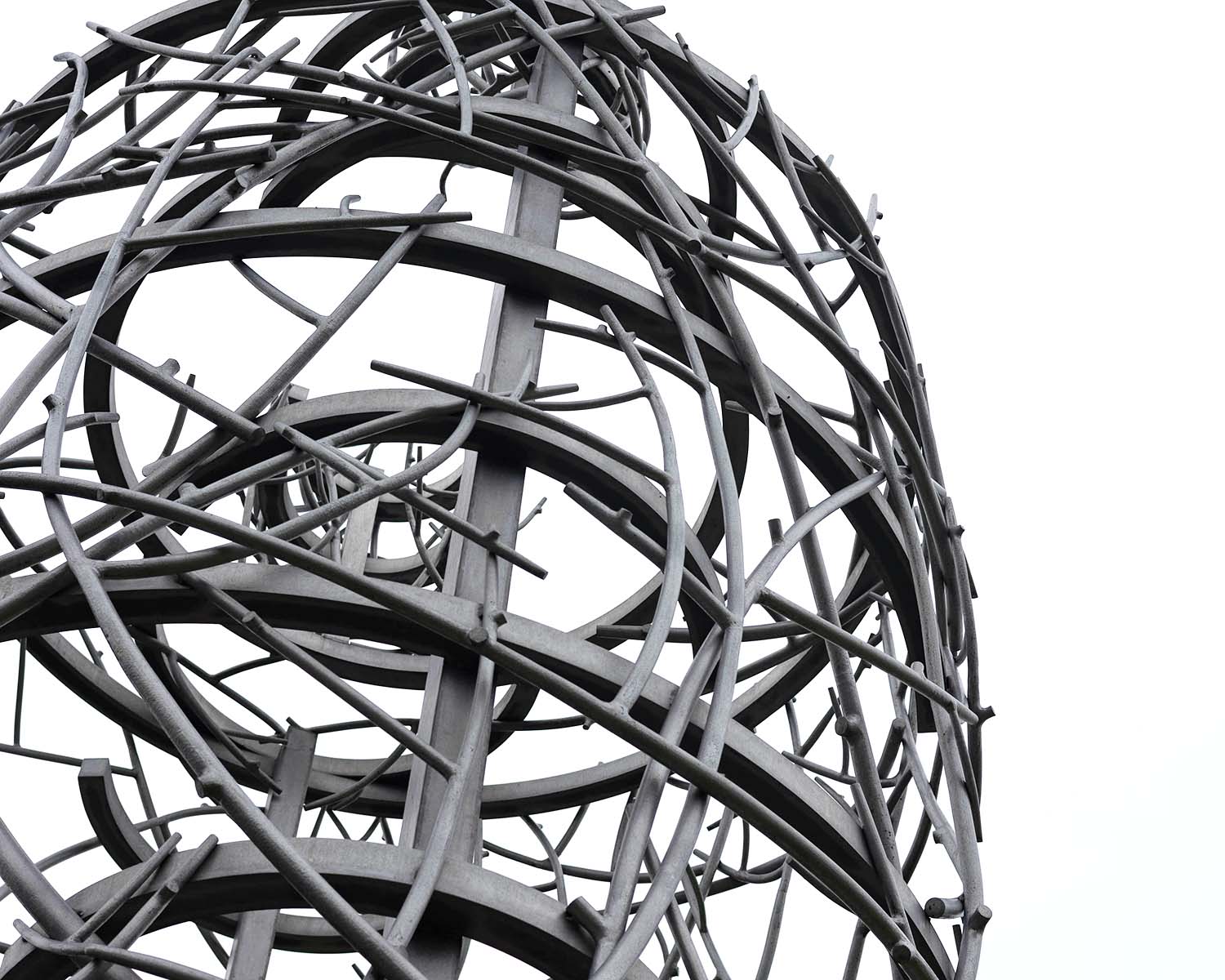Public Sculptures
Newest Addition: Rock of Truth

Tell the truth!
Sigma Sigma, the oldest honorary fraternity at UC, celebrated its centennial in 1998 with the dedication of Sigma Sigma Commons, anchored by the Tower of Light. Twenty-six years later, in 2024, Sigma Sigma further enhanced our aesthetic landscape with the fountains on Campus Green and now, on their 125th anniversary, with the Rock of Truth. Both the Tower and the Rock draw upon three key verses in UC’s Alma Mater lyrics.
Sculptor Jon Isherwood has brought the concept of the Rock of Truth to life, designing a site where visitors can consider and explore essential questions, alone or in dialogue with others. The centerpiece of the installation is an eighteen-ton split granite boulder, formed over 100 million years ago, bearing poetic reflections upon truth. Located in a historic streambed, the sculpture includes rings of pavers that emanate from the Rock of Truth like ripples in water. This design reflects Sigma Sigma’s belief in UC’s impact, as generations of Bearcats take their knowledge and interpretations of truth out into the world.
The sculpture proposes that truth, the core of UC’s educational mission, is best understood through dialogue and deliberation with others. Accordingly, the Rock of Truth project drew inspiration from a wide network of collaborators – students, staff, faculty, and alumni. Their many statements about truth were given form and coherence by poets Nicholas Molbert and Felicia Zamora, whose text now adorns the boulder and several pavers. The collaborative, truth-seeking spirit of the sculpture will continue as the voices of future visitors are etched onto the remaining pavers in a living conversation through time.
Tell us the truth for a chance to be awarded 250.00! Click here to learn how.
VIRTUAL SCULPTURE TOUR
To view the 3D tour, click the Bearcat image.
Beginning at the Corry Garage, experience pieces such as Crystal Garden and Tower of Strength. Upon reaching the corner of main campus, the tour provides the opportunity to visit West Campus to for works by Alice Aycock and Albert Paley or continue to East campus toward university icons such as the Triceracopter in Langsam Library. Each sculpture accentuates the stories of community and growth that can be found within the past and present of UC.
For exhibition stills, detailed images, and information about each sculpture by campus and area see the dropdowns below!
WEST CAMPUS
Bearcat
Jon Hair, 2011, bronze, 15 x 10 x 8 ft (4.6 x 3.1 x 2.4 m)
Gift of Sigma Sigma and Class of 2005 & 2006
*Currently Stored due to Construction
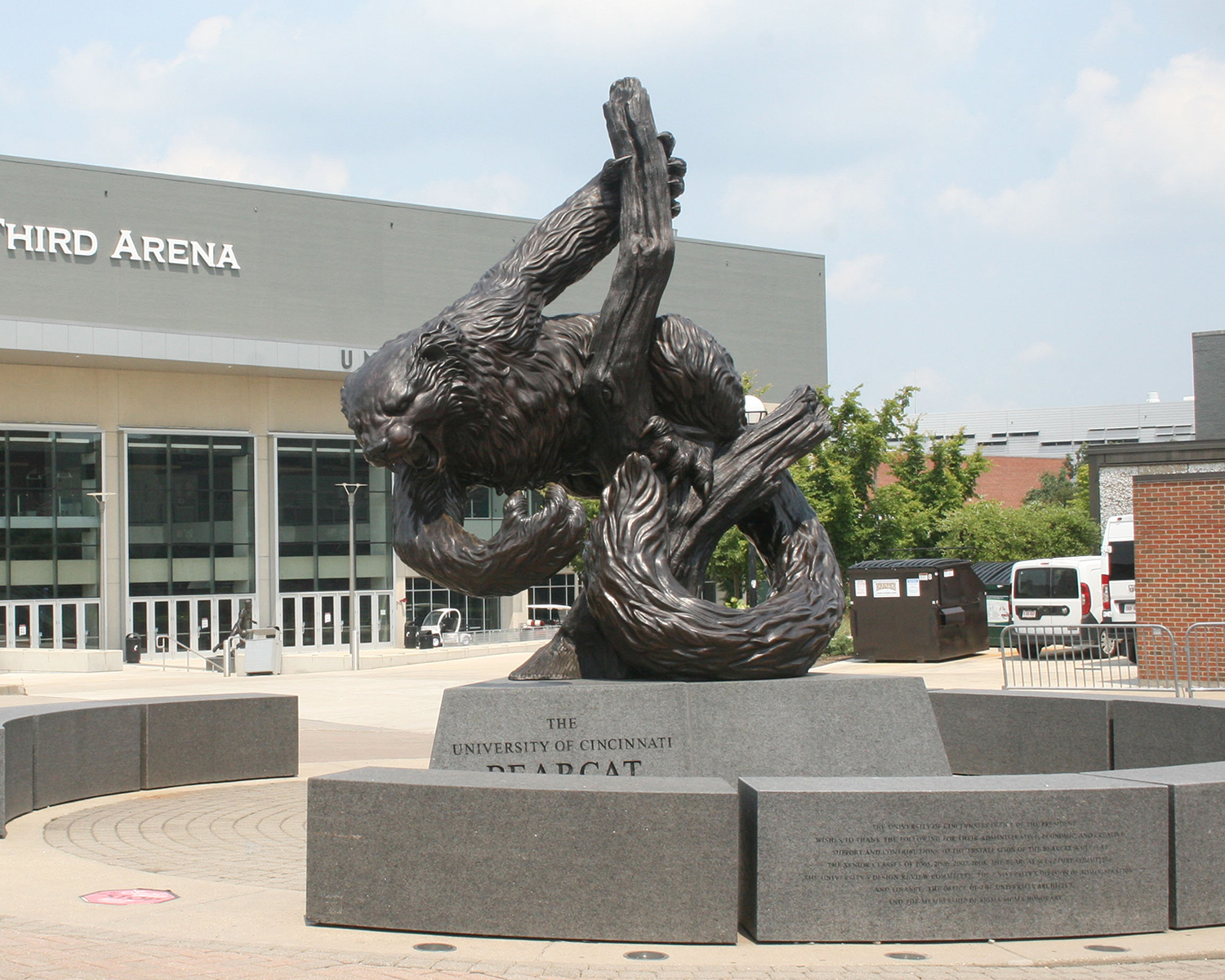
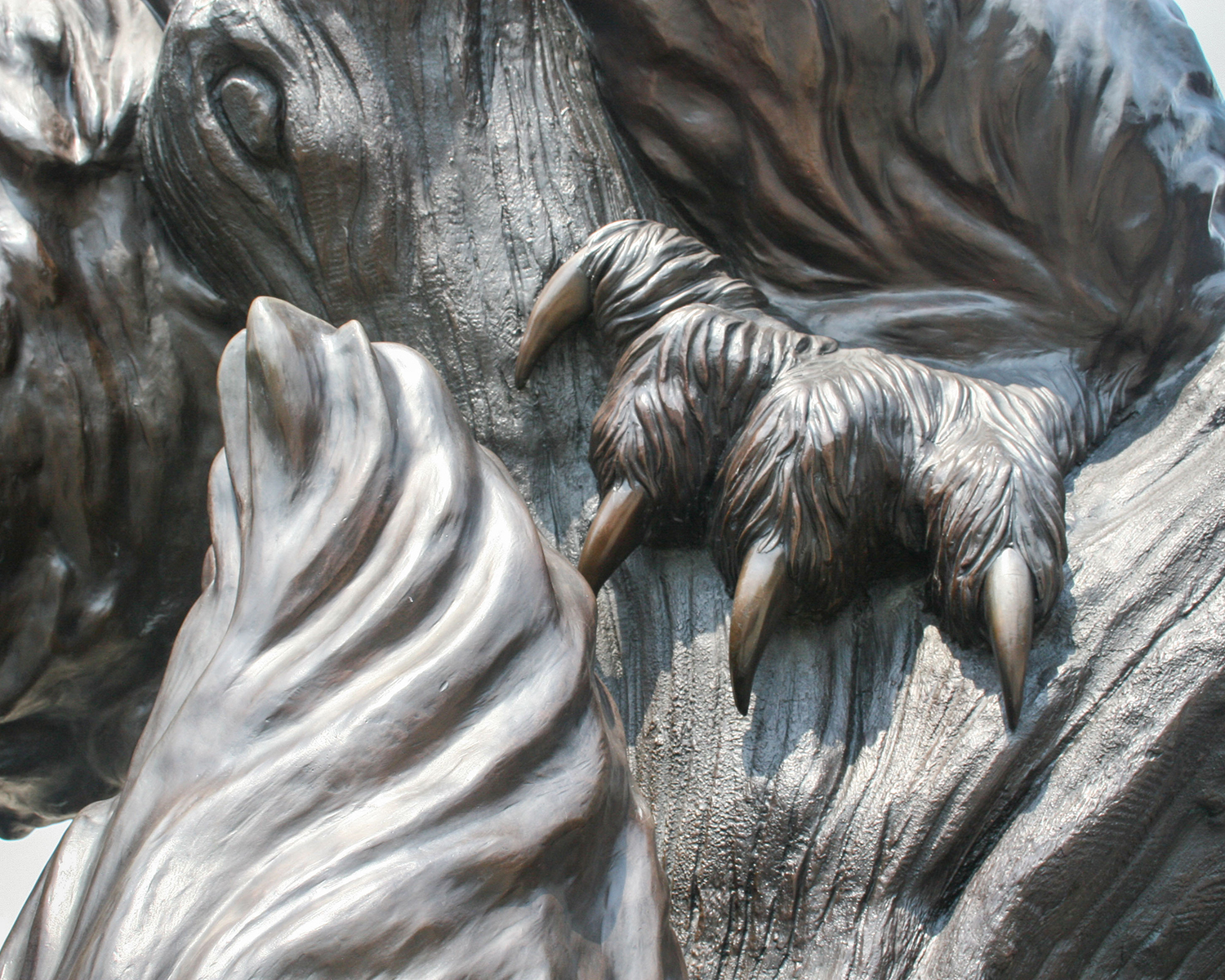
The University of Cincinnati's Art Committee selected Jon's Bearcat design as the winning entry in their national mascot sculpture competition. The Sigma Sigma men’s honorary fraternity supplemented fundraising efforts of UC senior classes starting in 2005 to give UC its own bearcat statue that December. Measuring more than 15 feet tall, the bronze bearcat lurks at the end of Champions Avenue between Sheakley Athletic Complex and Fifth Third Arena. It gives the university a tenacious gatekeeper that reminds students and athletes alike what it means to be a Bearcat.
Oscar Robinson “Big O”
Blair Buswell, 1994, bronze
Gift of J.W. Brown, 1999
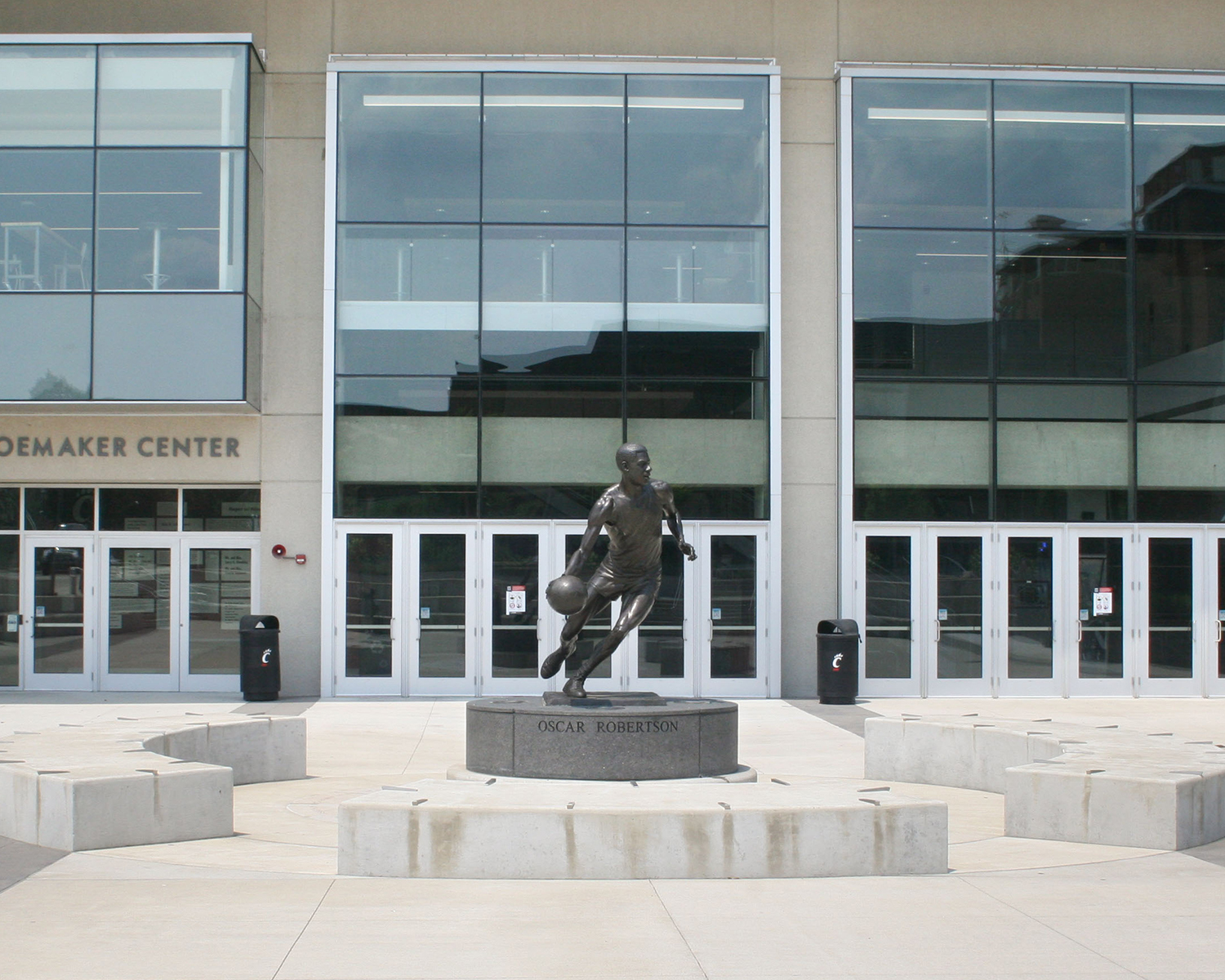
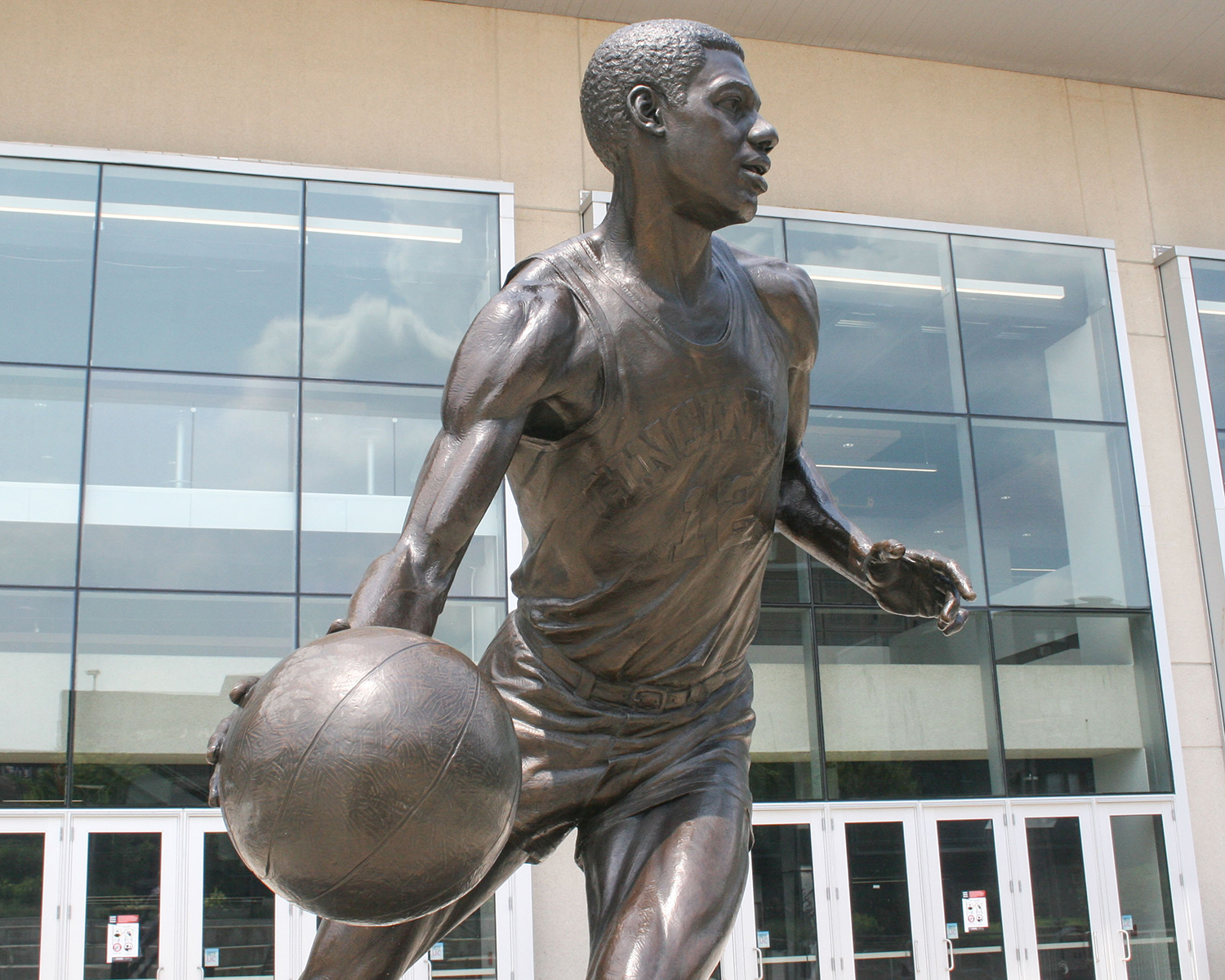
Blair Buswell is known for sculpting portraits of prominent athletic figures. In this highly detailed portrait of Oscar Robertson, Buswell has captured the University of Cincinnati's most famous basketball star. While on the UC team from 1957 to 1960, he led the nation in scoring. He was a member of the U.S. Olympic Basketball Team in 1960 which won a gold medal in Rome.
Crystal Garden
Dennis Oppenheim, 1999, mixed media, each 159 x 230 x 85 in (404 x 584 x 216 cm)
Ohio Percent for Art Program 2003
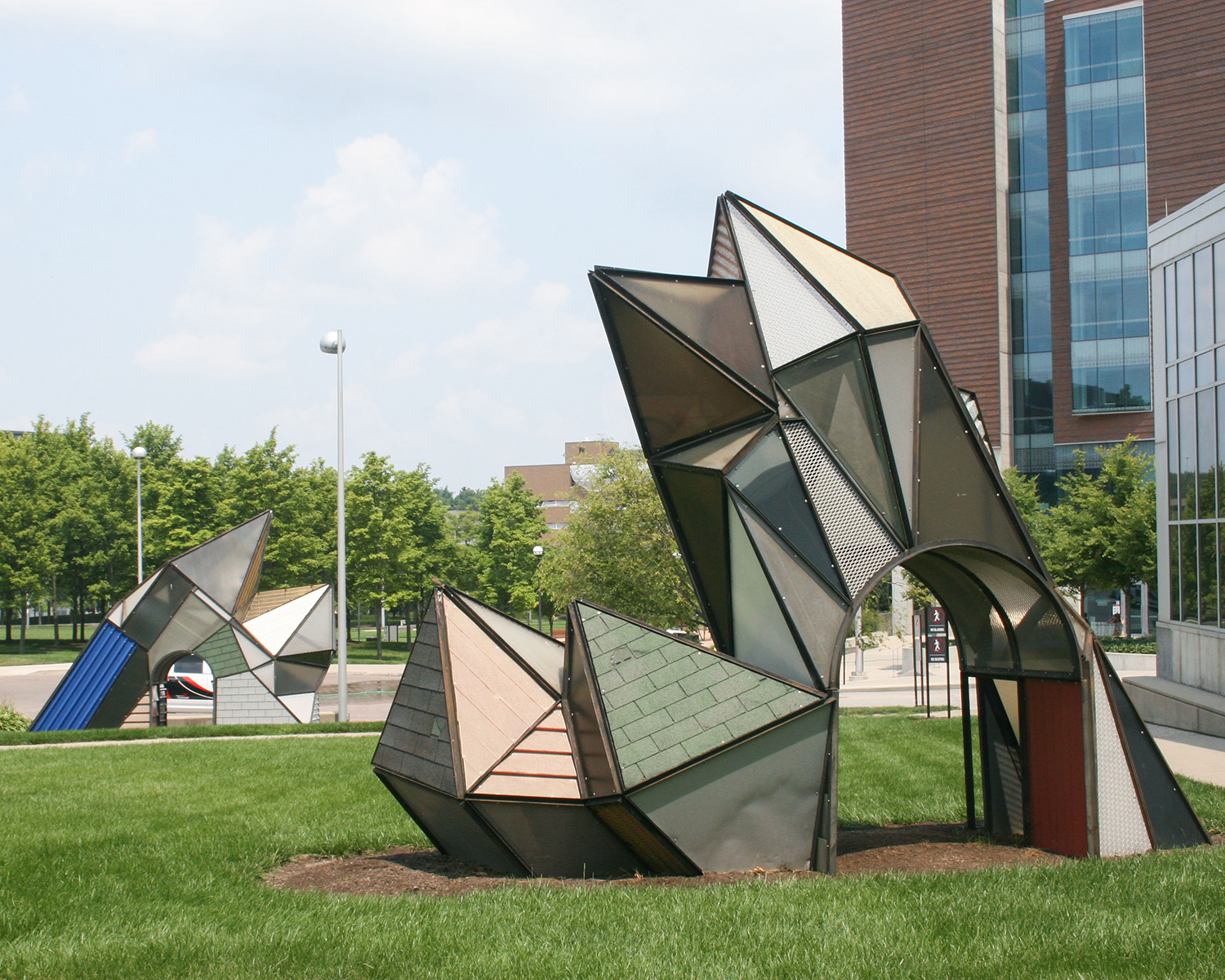
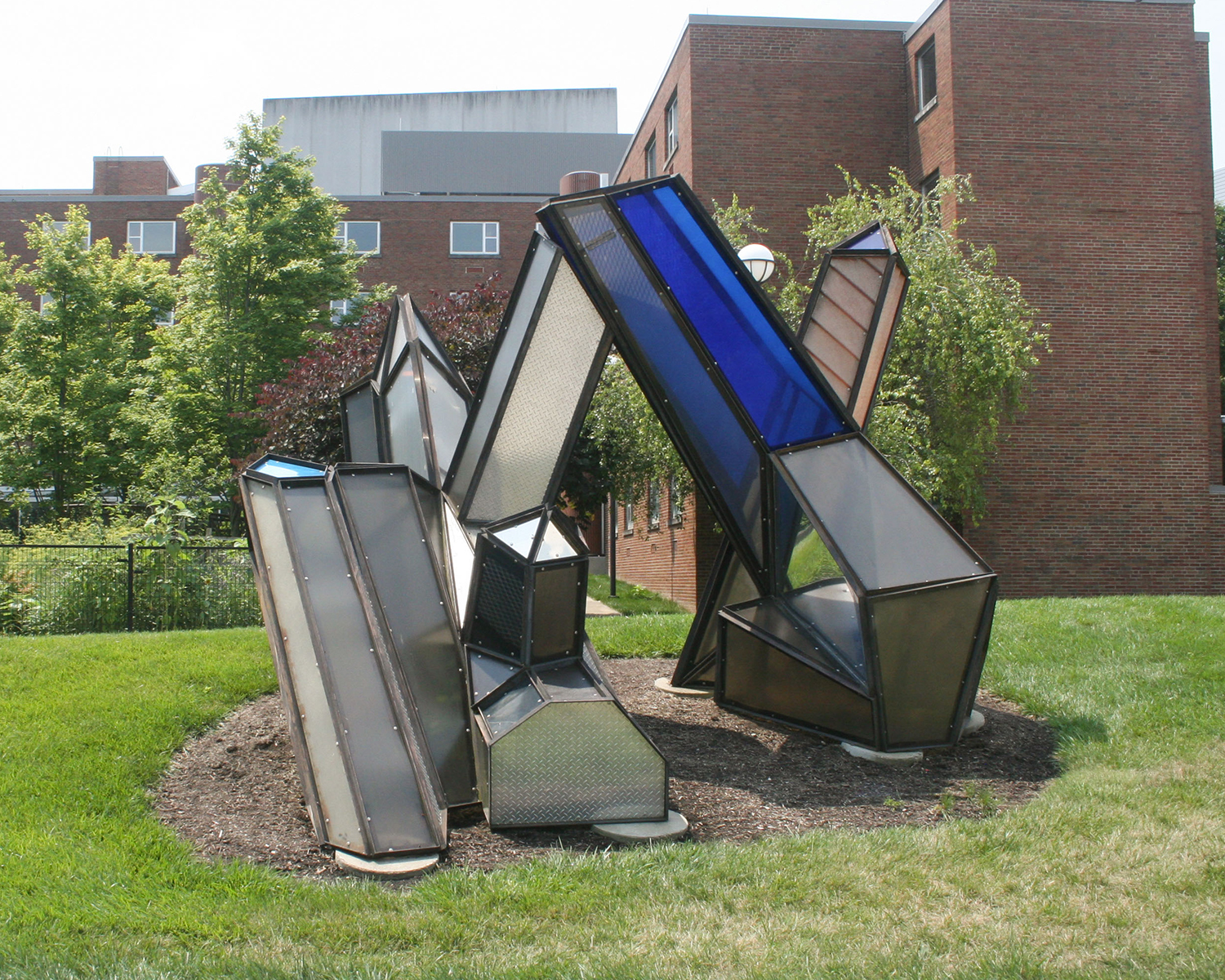
Ronald Walker Tower of Light
Machado Silvetti Co. with A. Zahner Company, 1998, mixed media, 65 x 20 x 20 ft (19.8 x 6.1 x 6.1 m)
Commissioned by The University of Cincinnati 1998


This work recalls America's roadside attractions of the 1930s and 40s where motorists could drive through the art. The sculptures form an arc structure, a fragmented structure and a tunnel, playful responses to the angular architecture that surrounds them.
Celebrating the 100th anniversary of the Sigma Sigma Fraternity, the tower incorporates symbolism reinforcing the fraternity's commitment to the university. The 65 foot tower emits brilliant LED light from the torch that can be programmed to change color.
Rock of Truth
Jon Isherwood, 2024, black granite on concrete, 7 x 7 x 7 ft (2.1 x 2.1 x 2.1 m)
Gift of Sigma Sigma, 2024
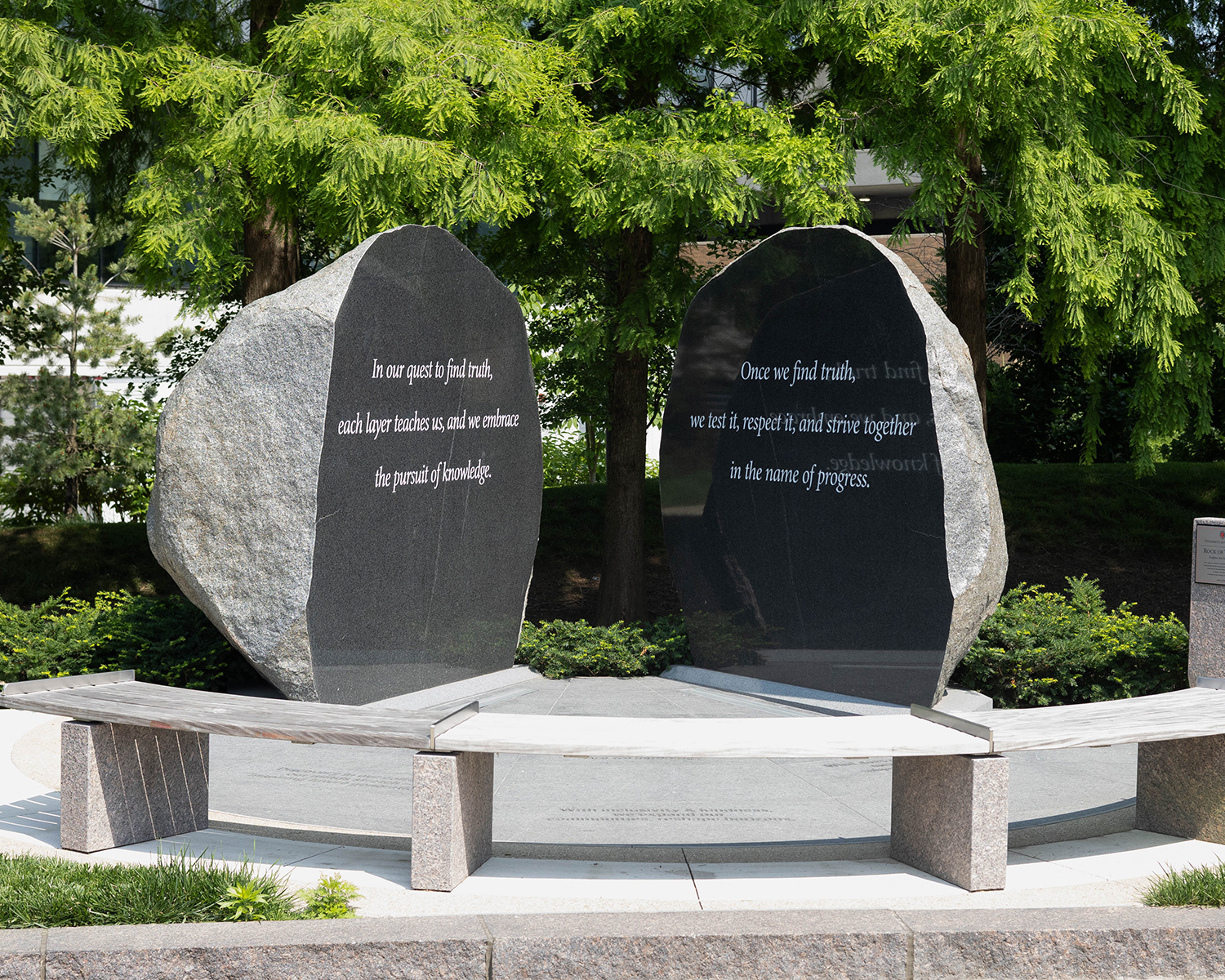
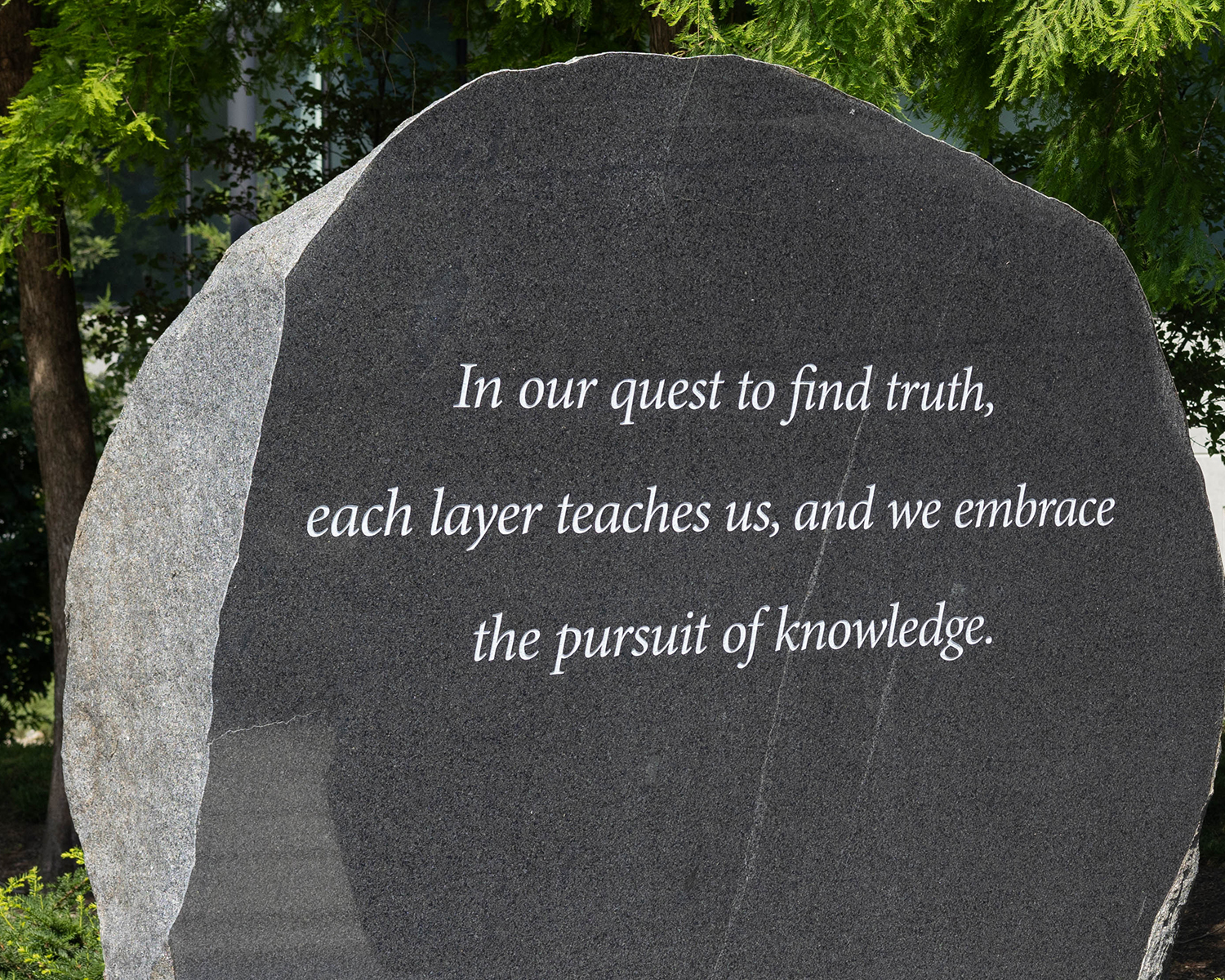
Sigma Sigma, the oldest honorary fraternity at UC, celebrated on their 125th anniversary with the Rock of Truth draw upon three key verses in UC’s Alma Mater lyrics. Isherwood has designed a site where visitors can consider and explore essential questions, alone or in dialogue with others. The centerpiece of the installation is an eighteen-ton split granite boulder, formed over 100 million years ago, bearing poetic reflections upon truth. Located in a historic streambed, the sculpture includes rings of pavers that emanate from the Rock of Truth like ripples in water.
The sculpture proposes that truth, the core of UC’s educational mission, is best understood through dialogue and deliberation with others. Poets Nicholas Molbert and Felicia Zamora's text adorns the boulder and several pavers. The collaborative, truth-seeking spirit of the sculpture will continue as the voices of future visitors are etched onto the remaining pavers in a living conversation through time.
Castle of Air
Peter Haimerl, 2018, polished steel, 32 x 40 x 40 in (80 x 102 x 102 cm)
Gift of the Munich Sister City Project 2019
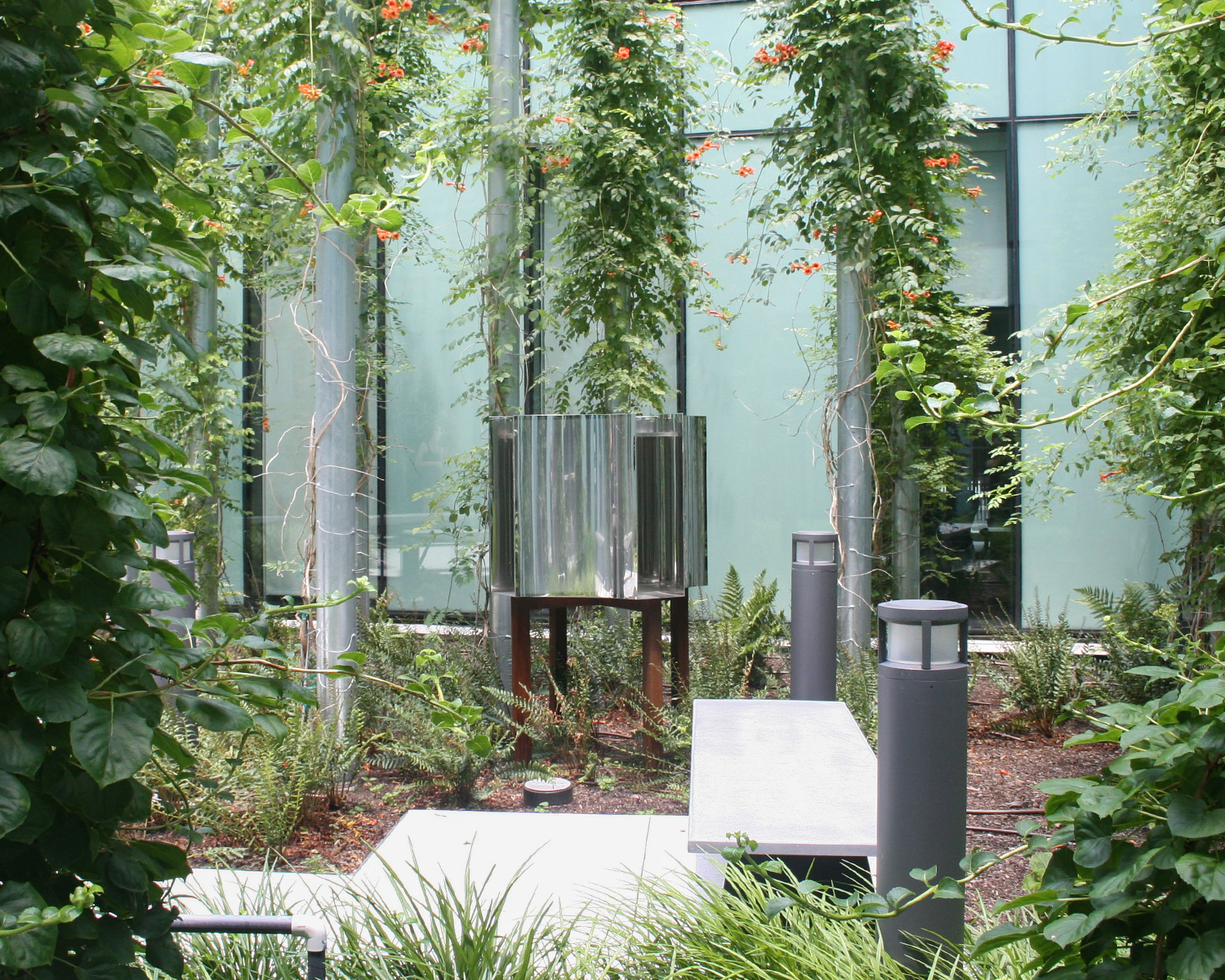
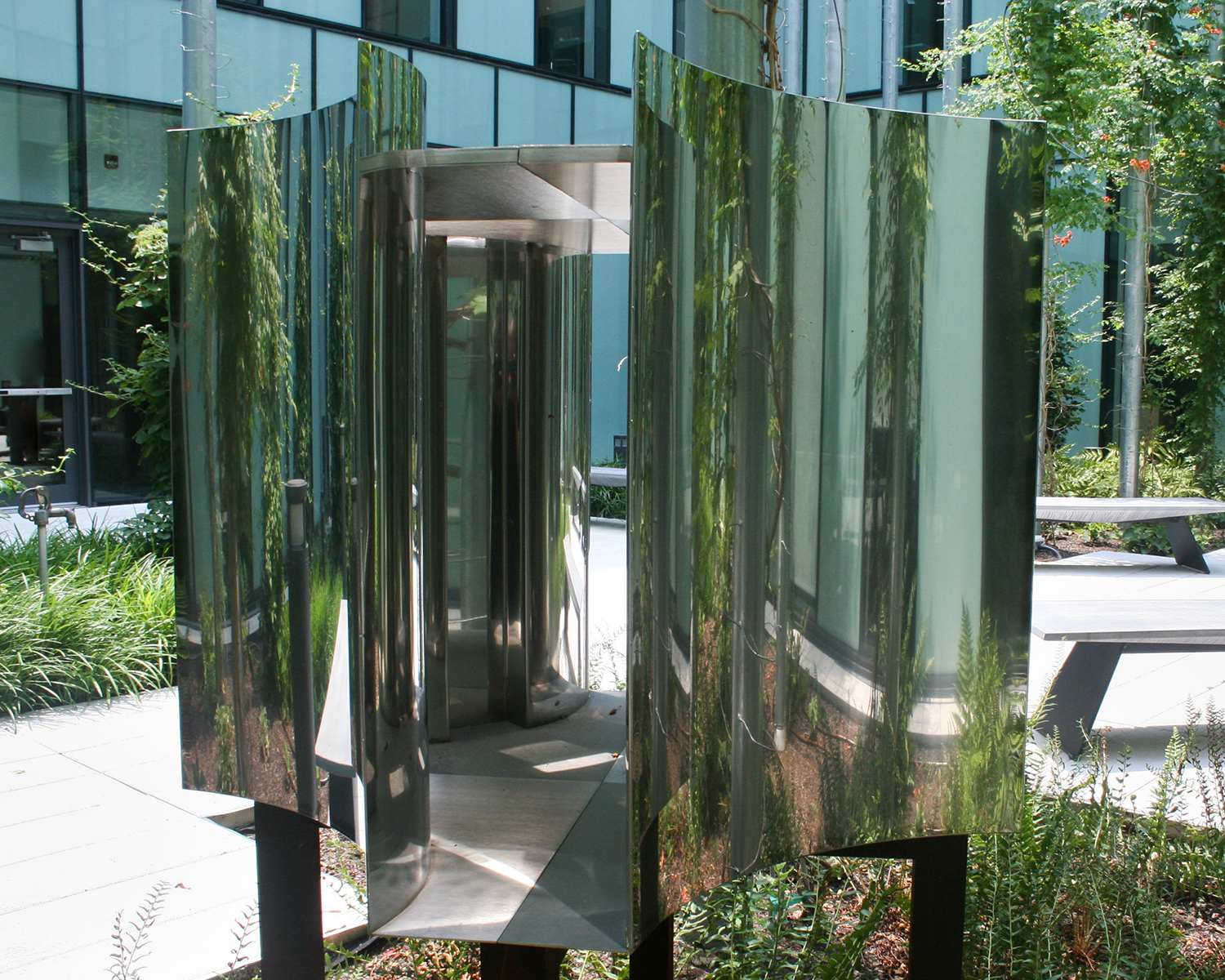
This model serves for the full-scale sculpture located in Cincinnati’s Friendship Park. Based on the European hunting lodge and summer palace of the 18th-century castle park of Nymphenburg, Peter Pagodenburg and Amalienburg created a structure provided with a system of mirrors outside as well as inside. Four walls with an arched facade of polished steel are forming a crosswise layout. The polished material distorts the environment inside, outside, and appears to be completely dissolving the pavilion.
Tricericopter: The Hope for the Obsolescence of War
Patricia Renick, 1977, paint on fiberglass 12 x 8 x 30 ft (3.7 x 2.4 x 9.2 m)
Gift of Laura K. Chapman, 2010
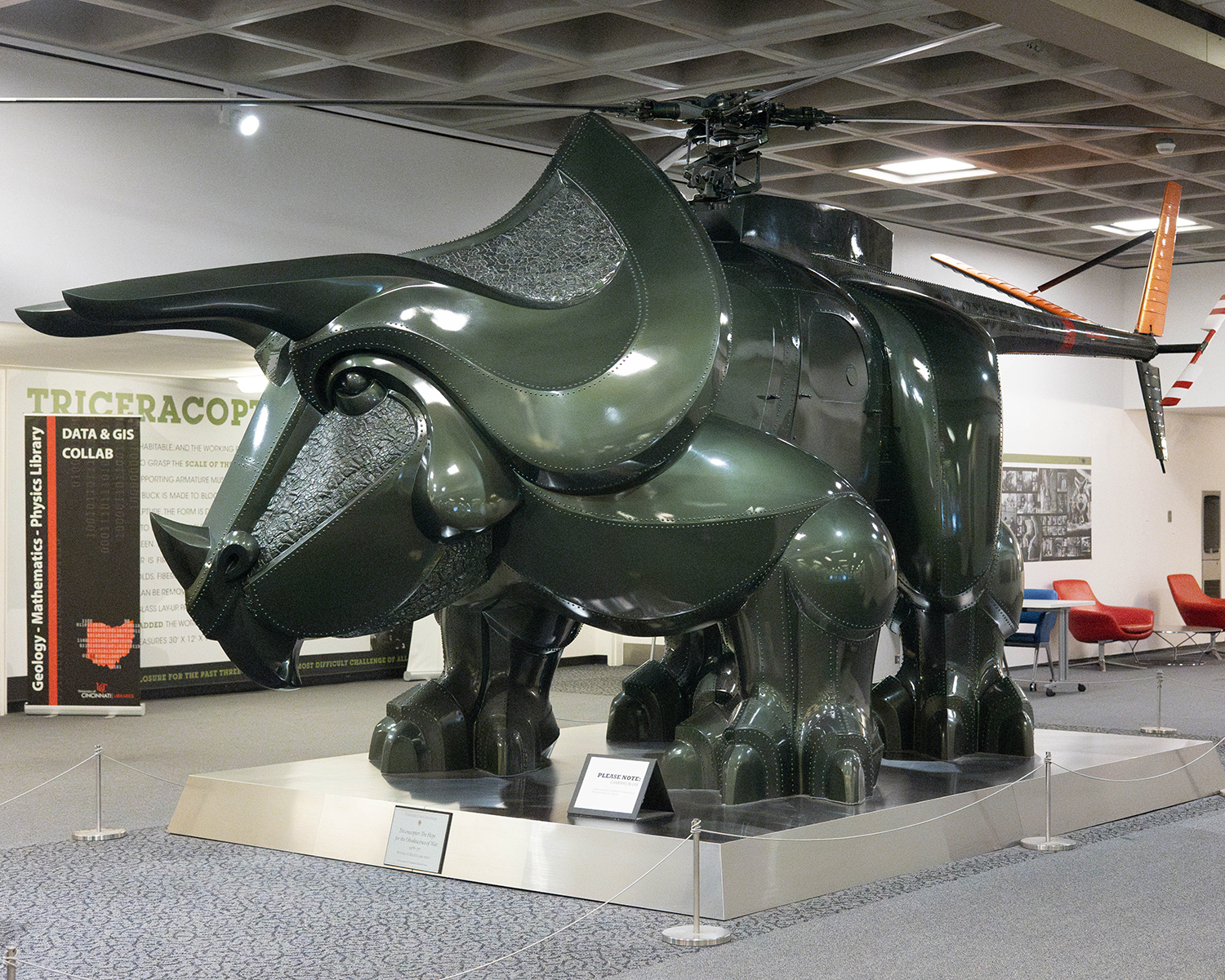

The sculpture combines a triceratops with a combat helicopter that was flown in Vietnam. “War is a dichotomy,” wrote the late artist Pat Renick. “It seduces our dream self through heroic fantasy while threatening our physical self with extinction.”
Self-Portrait: She Became What She Beheld
Patricia Renick, 1976, paint on fiberglass 62 x 42 x 54 in (157.5 x 106.7 x 137.2 cm)
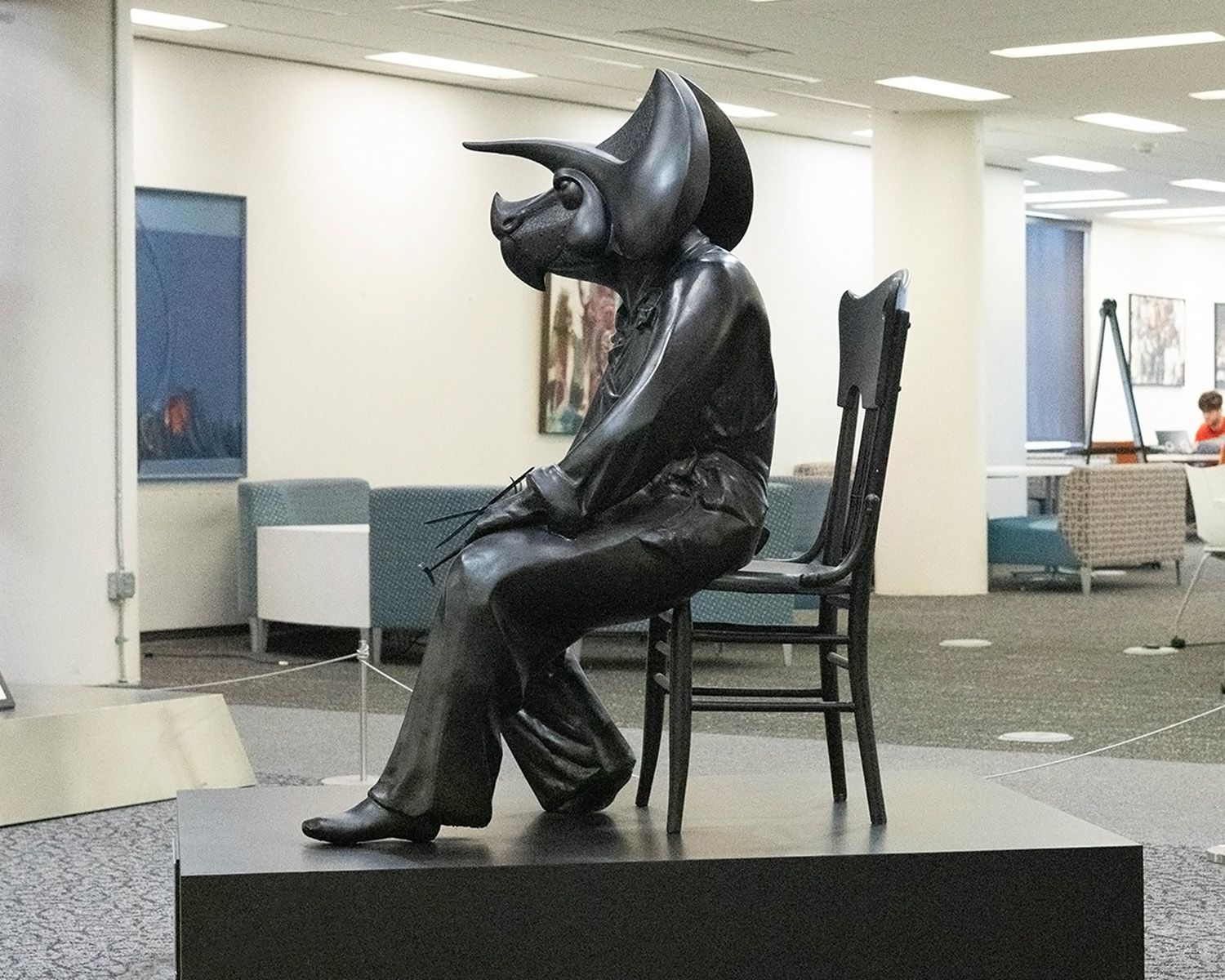

Skybird
Peter Reginato, 1989, painted steel with Insl-tron, 120 x 204 x 132 in (305 x 518 x 335 cm)
Gift of Ronnie & John E. Shore in memory of Charles B. Levinson, 2005
This whimsical Miro-esque sculpture can be found in the entry of Zimmer Hall. Reginato's whimsical metal shapes employ a variety of textures and colors with an anthropomorphic feel.
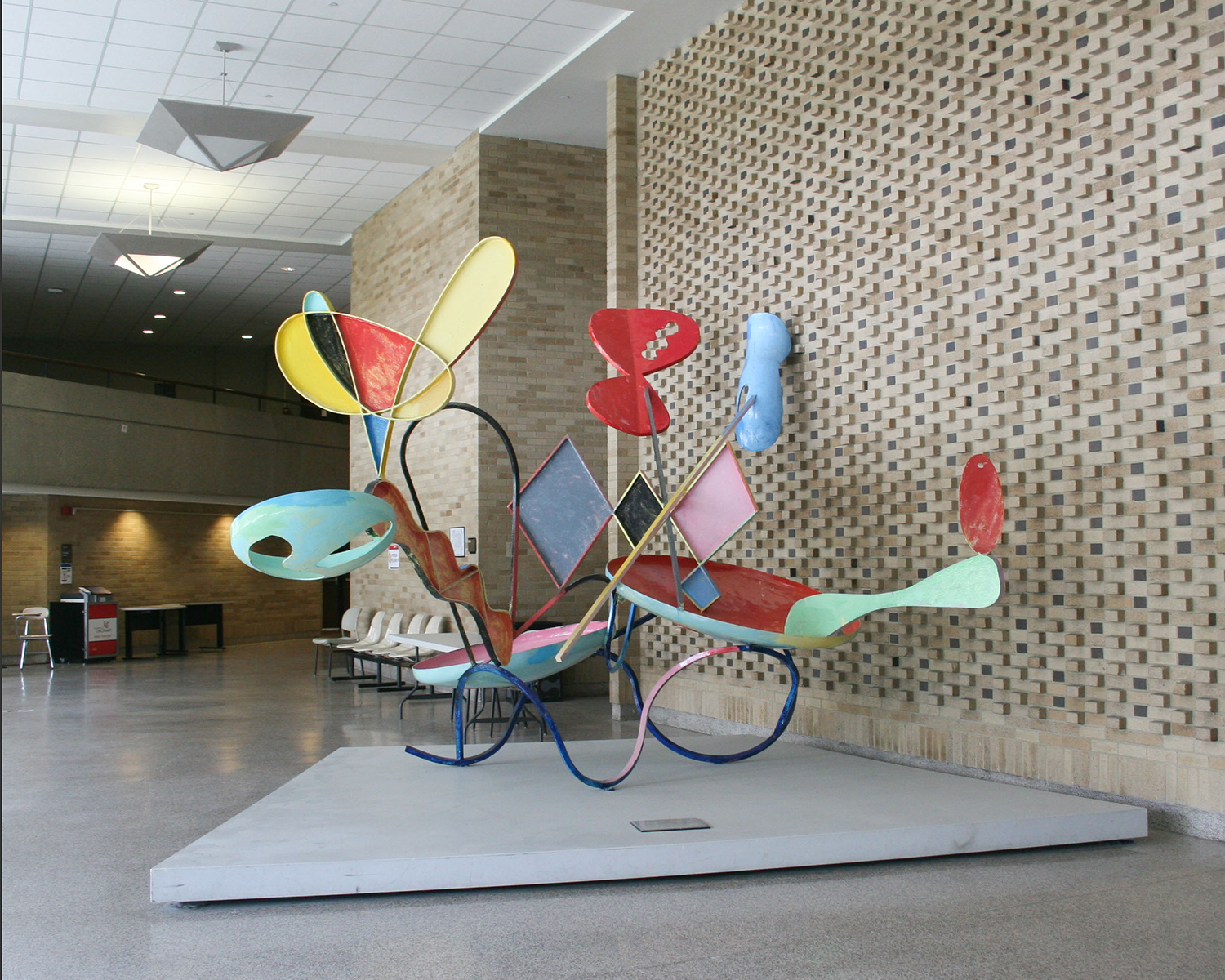
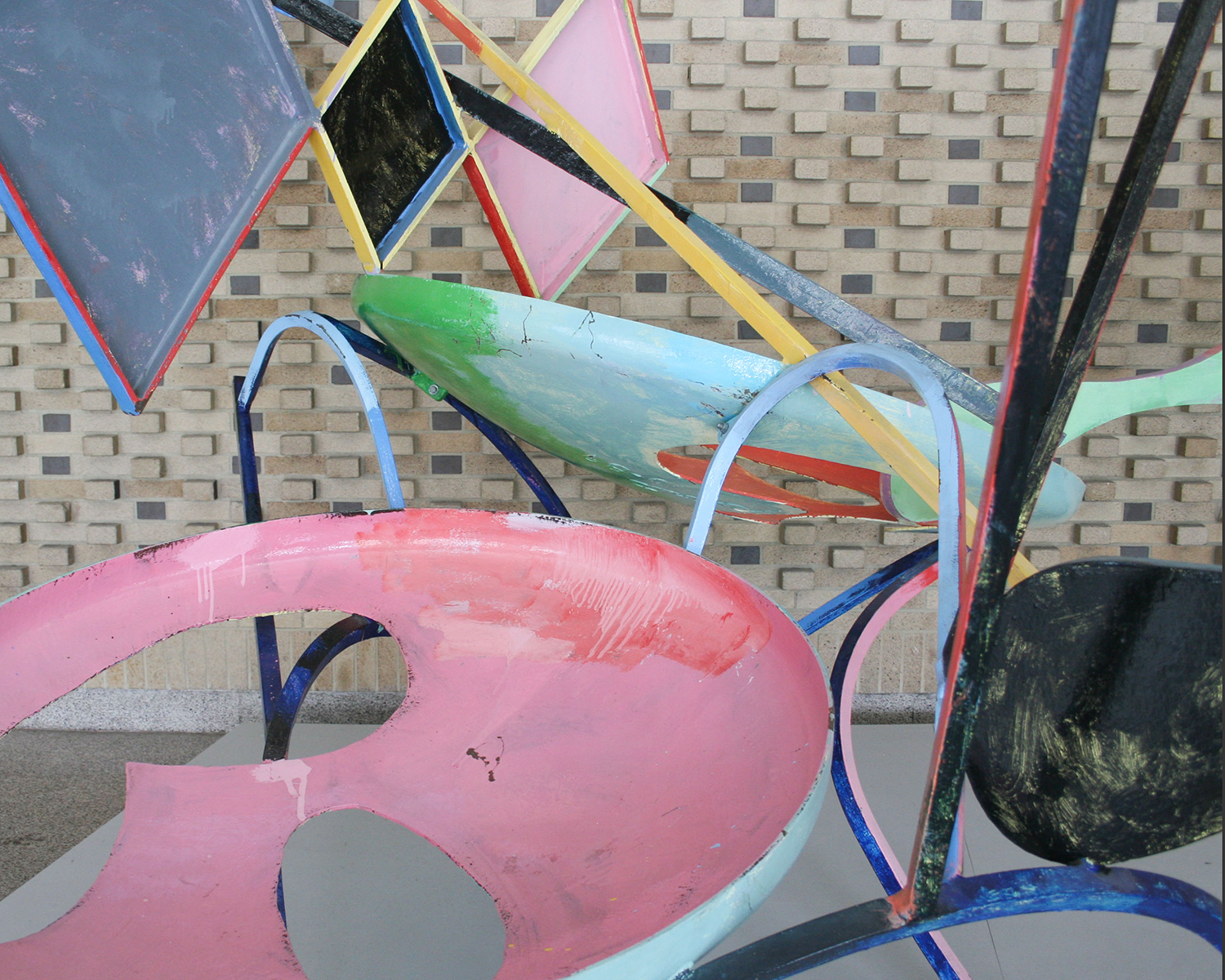
Forest Devil
Kenneth Snelson, 1975, aluminum and stainless steel, 17 x 35 x 25 ft (5.2 x 10.7 x 7.6 m)
Ohio Percent for Art Program, 2002
The Forest Devil is an example of exquisite engineering in a simple, structural sculpture. The highly tensioned aluminum tubes and stainless-steel cables form a complex matrix of balanced forces that allows the sculpture to stand.
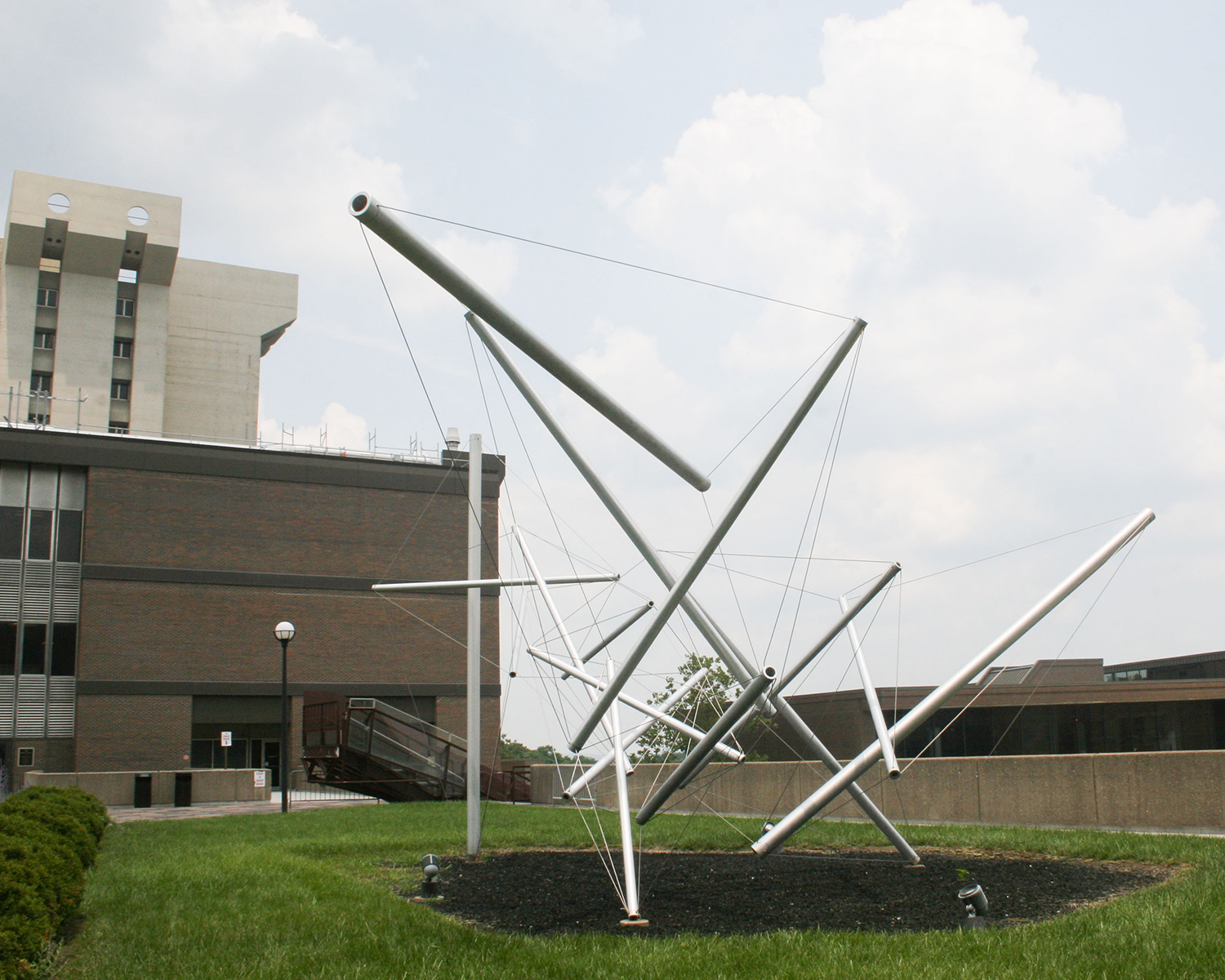
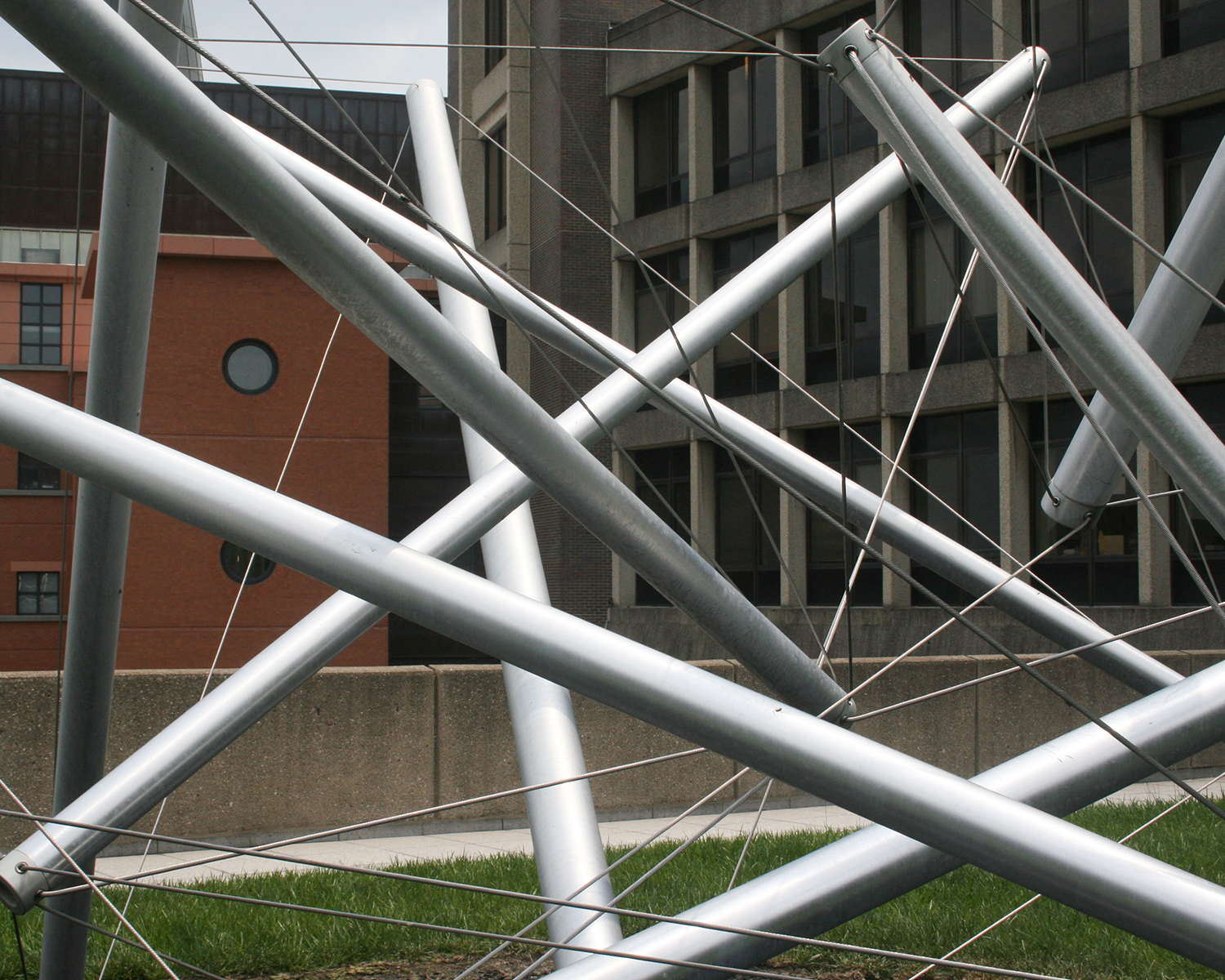
Herman Schneider
Anna Christoforidis, 2007, bronze and granite, 8 x 3 x 2.5 ft (2.4 x .9 x .46 m)
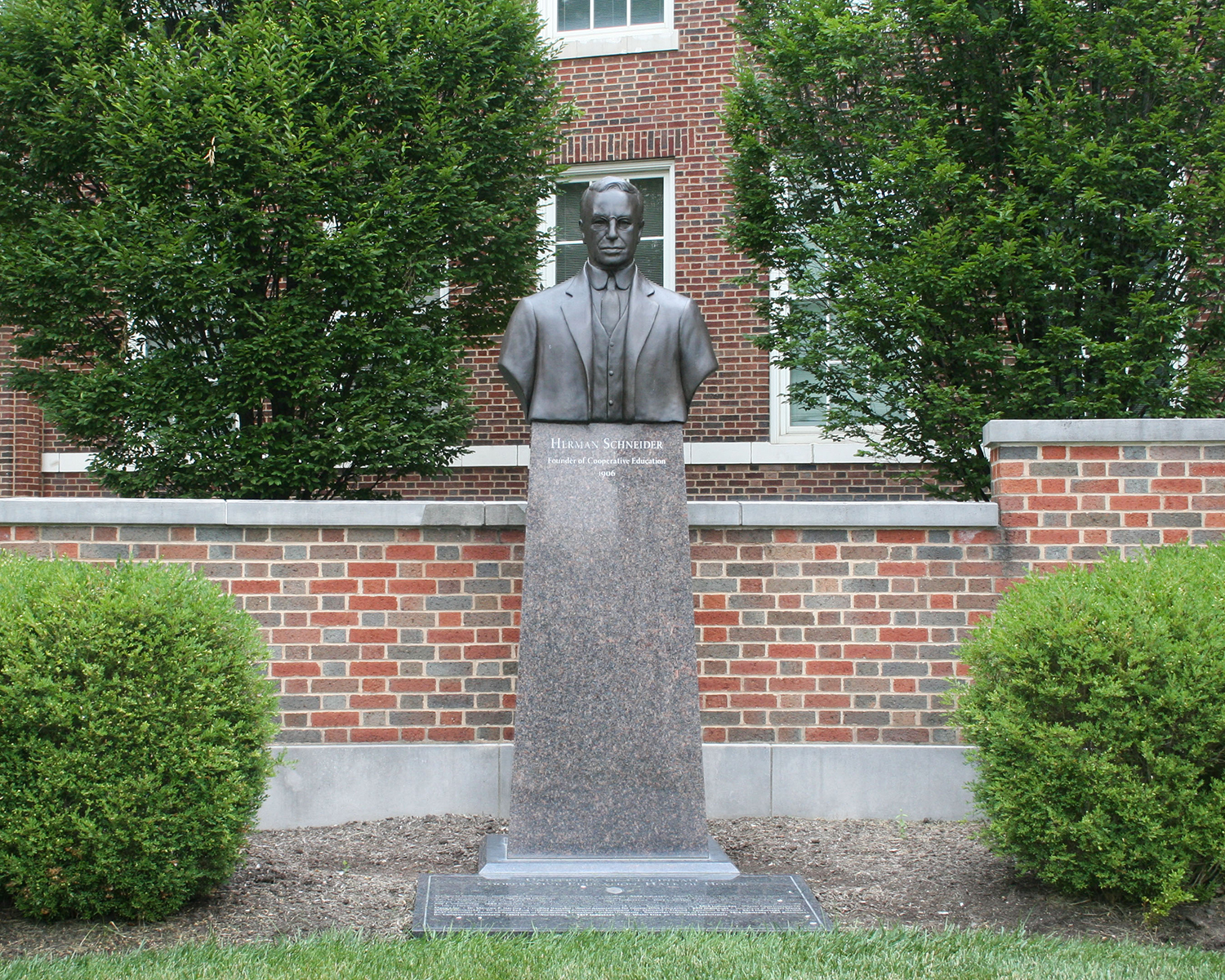
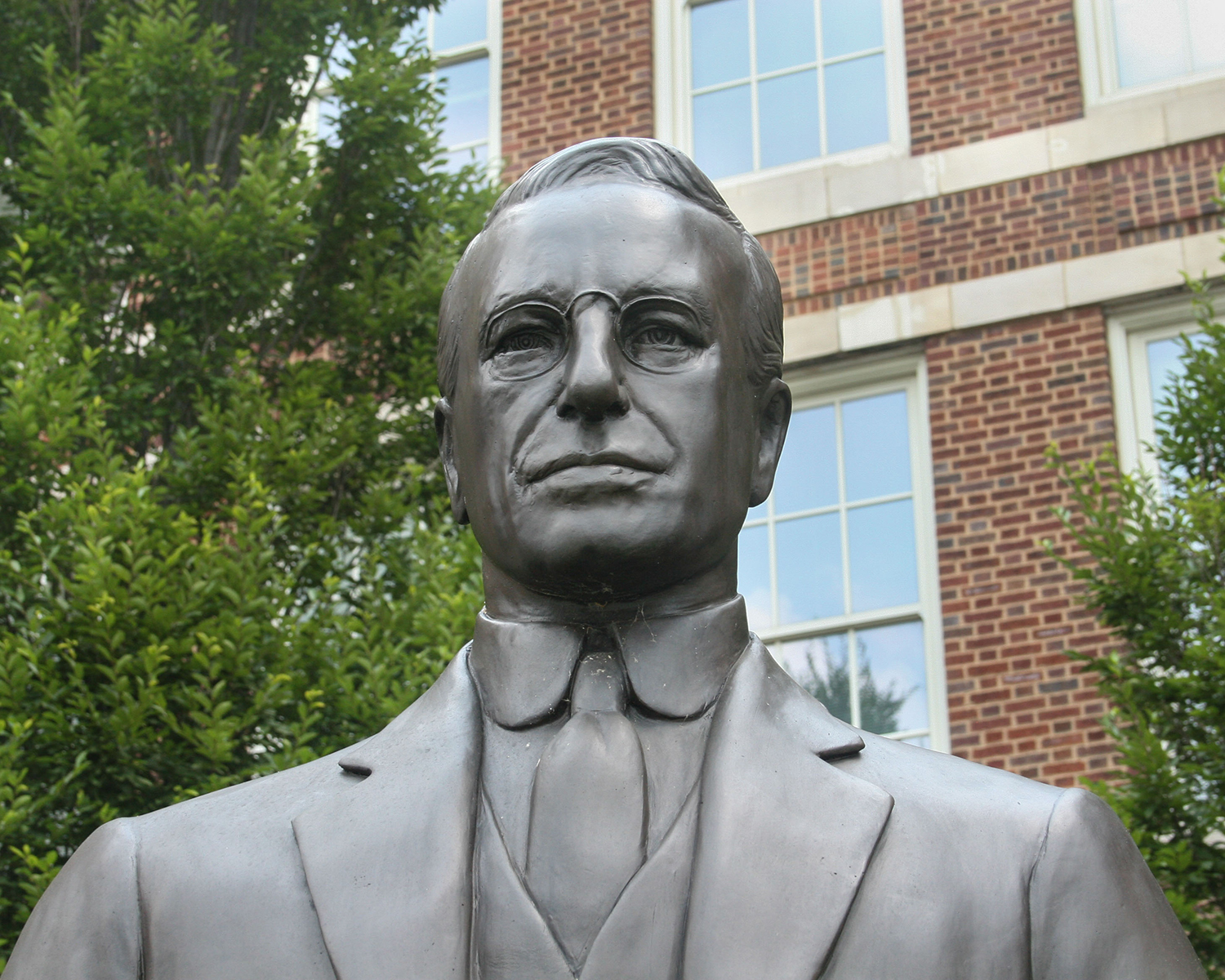
Herman Schneider, engineer, architect, and educator, was the main founder of cooperative education in the United States and president of the University of Cincinnati from 1929-1932.
The sculpture is about 8-feet-tall and is mounted on a granite base overlooking the Herman Schneider Quadrangle. The quadrangle is located in front of Baldwin Hall, outside the former dean's office window. Anna Christoforidis, the sculptor, studied photographs of Schneider in order to get his appearance correct, but also took into consideration his vision and legacy.
Ethan and Violet
Alan P. Marrero, 2005 & 2016, mixed media, 58 x 21 x 28 in (147 x 53 x 71 cm) and 30 x 56 x 22 in (76 x142 x 56 cm)
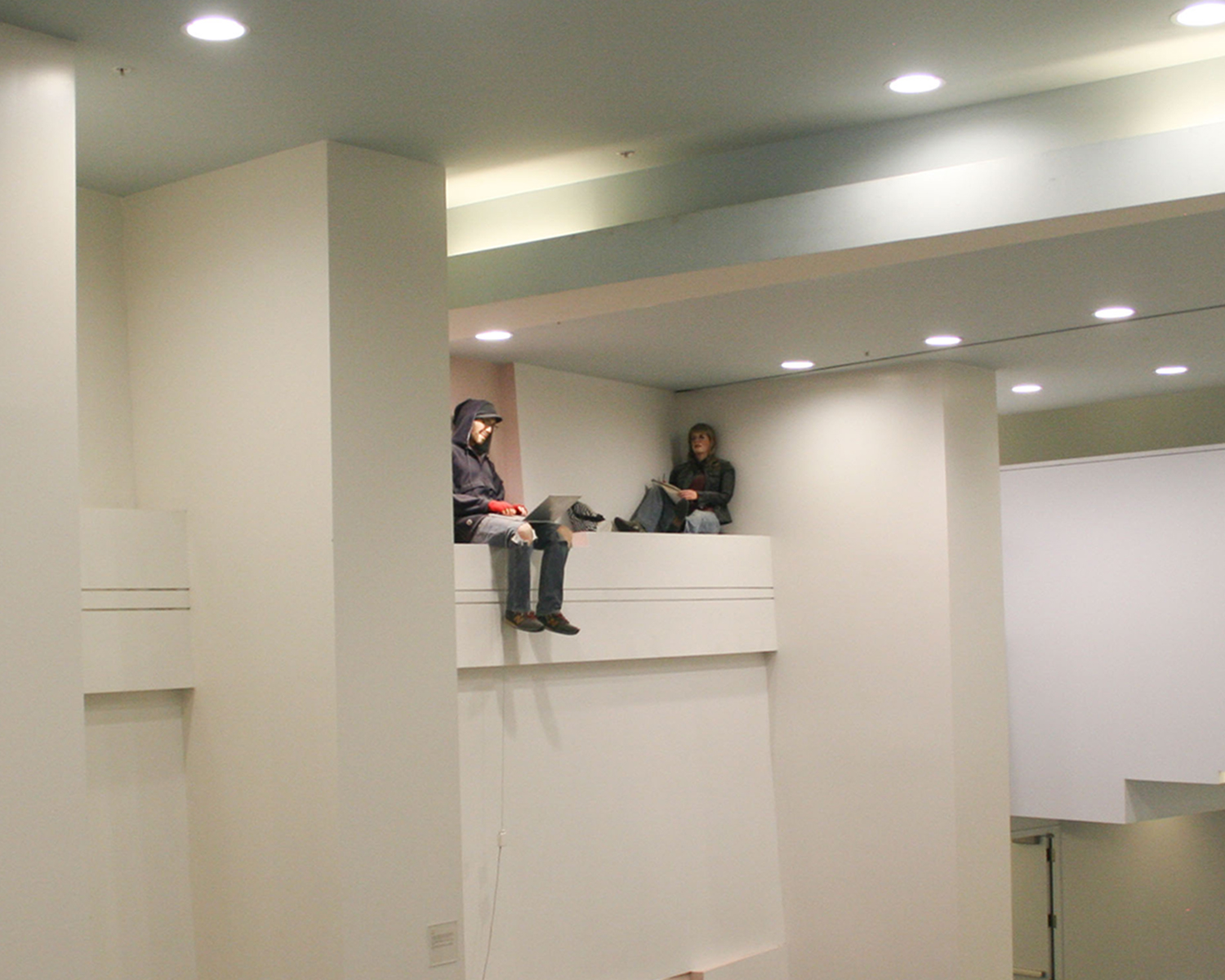

Ethan symbolizes DAAP students' need to find their own small niche in the building, private or public and is a self-portrait of the artist. His location can be viewed from many points throughout the building and catches the attention of passersby. Ethan is easily confused for a contemporary student. He sits in his spot, hard at work, as a representation of the technology of our social and academic culture. Violet, a portrait of his later wife and DAAP grad Mary Fialko, was installed in 2016.
Life Boats: Boats About Life
Patricia Renick, 1979, mixed media, 8 boats 74 x 25.5 x 22 in (188 x 65 x 56 cm)
Gift of Laura K. Chapman
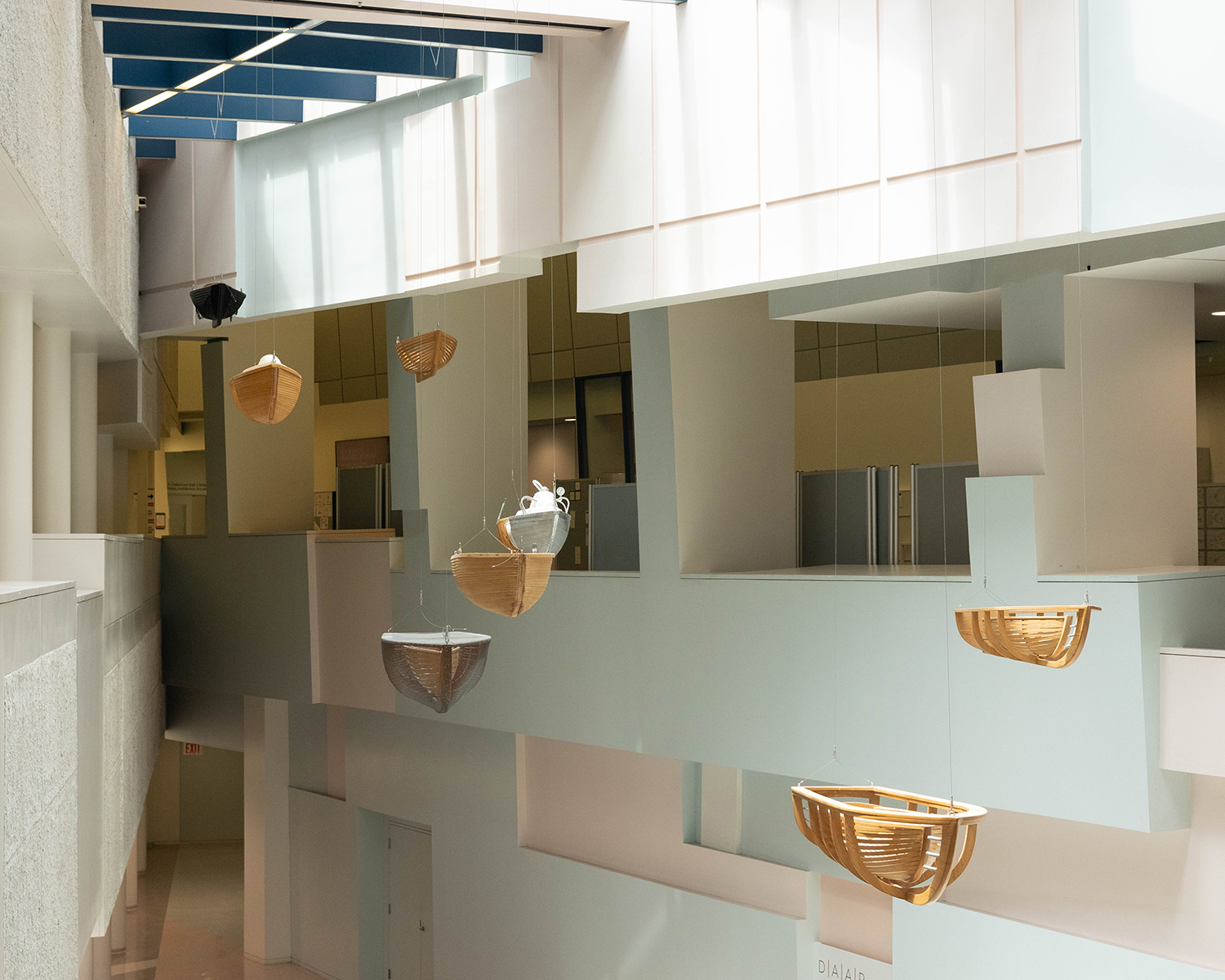
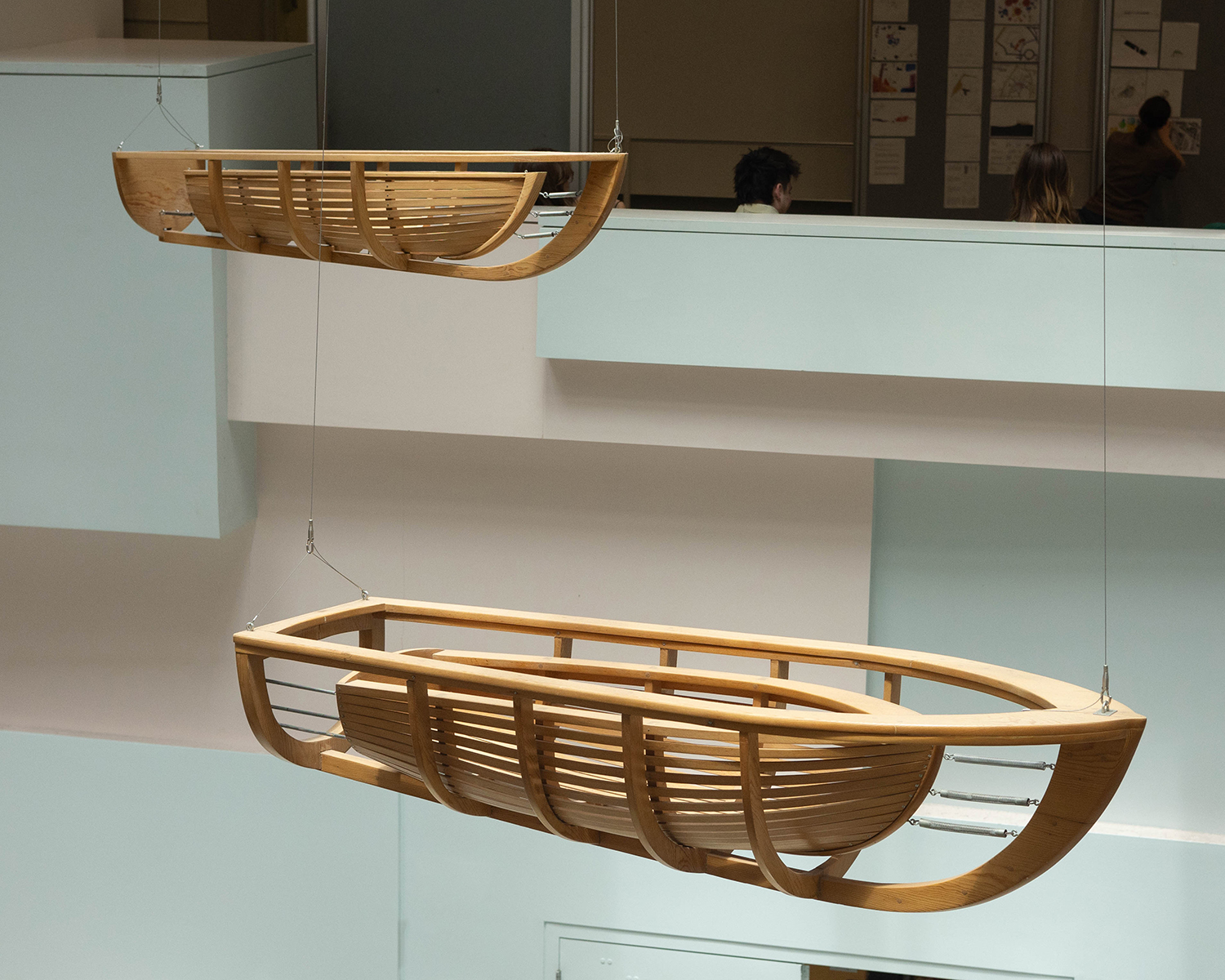
This boat series was created in 1978, fashioned by Renick as a metaphor for human life cycles. Rich with allusions to voyage and exploration, the boats literally and figuratively act as vehicles to discuss the experiences of a life span, including parent/child relationships, freedom and restraint, innocence and the loss of innocence.
Moiré Pentagon
Derrick Woodham, 2012, painted wood, 165 x 240 x 26 in (419 x 610 x 66 cm)
Gift of the Artist, 2021
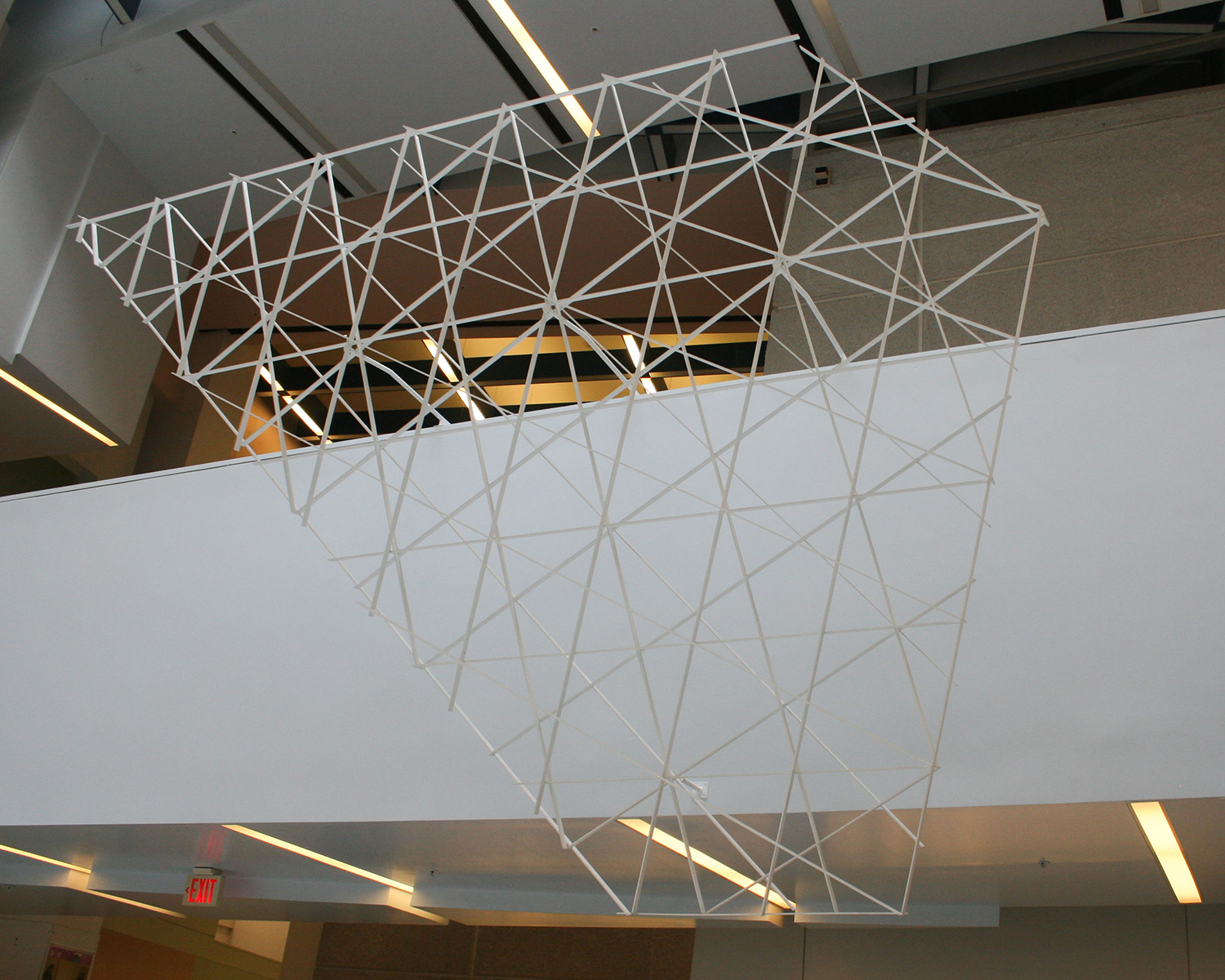
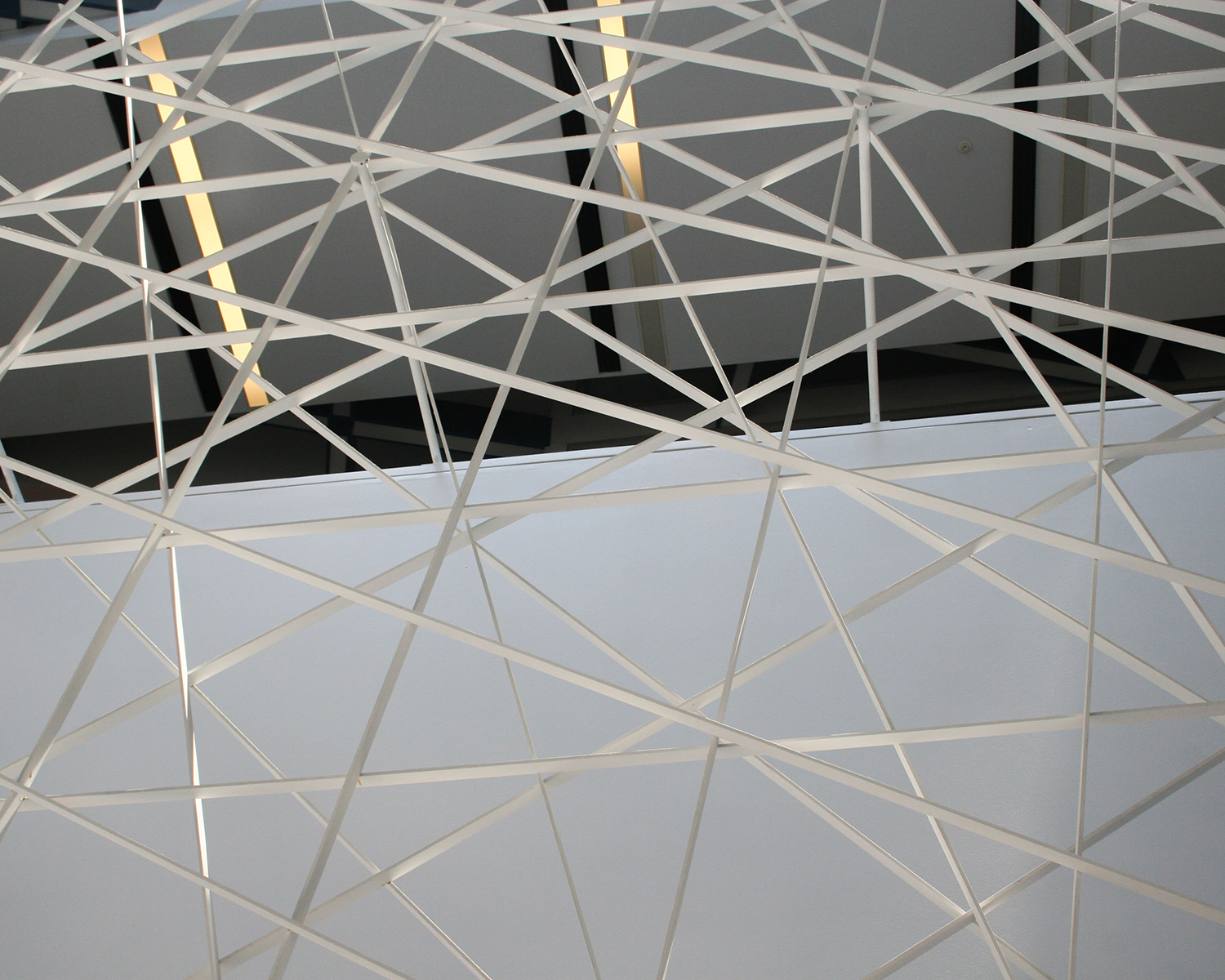
The moiré screen series began as a set of silkscreen prints produced while teaching a printmaking class at The University of Victoria during the Summer of 1976. Two screens were made on which a square set of parallel lines were stenciled onto the silk. The print images were built by rotating the paper 75.5º beneath the screen each time the ink was applied for a maximum of six colors. This resulted in a series of three-dimensional, large scale, planar pieces.
Fields V
Derrick Woodham, 2016, painted metal, 216 x 216 x 4 in ( 549 x 549x 10cm)
Gift of the Artist, 2021
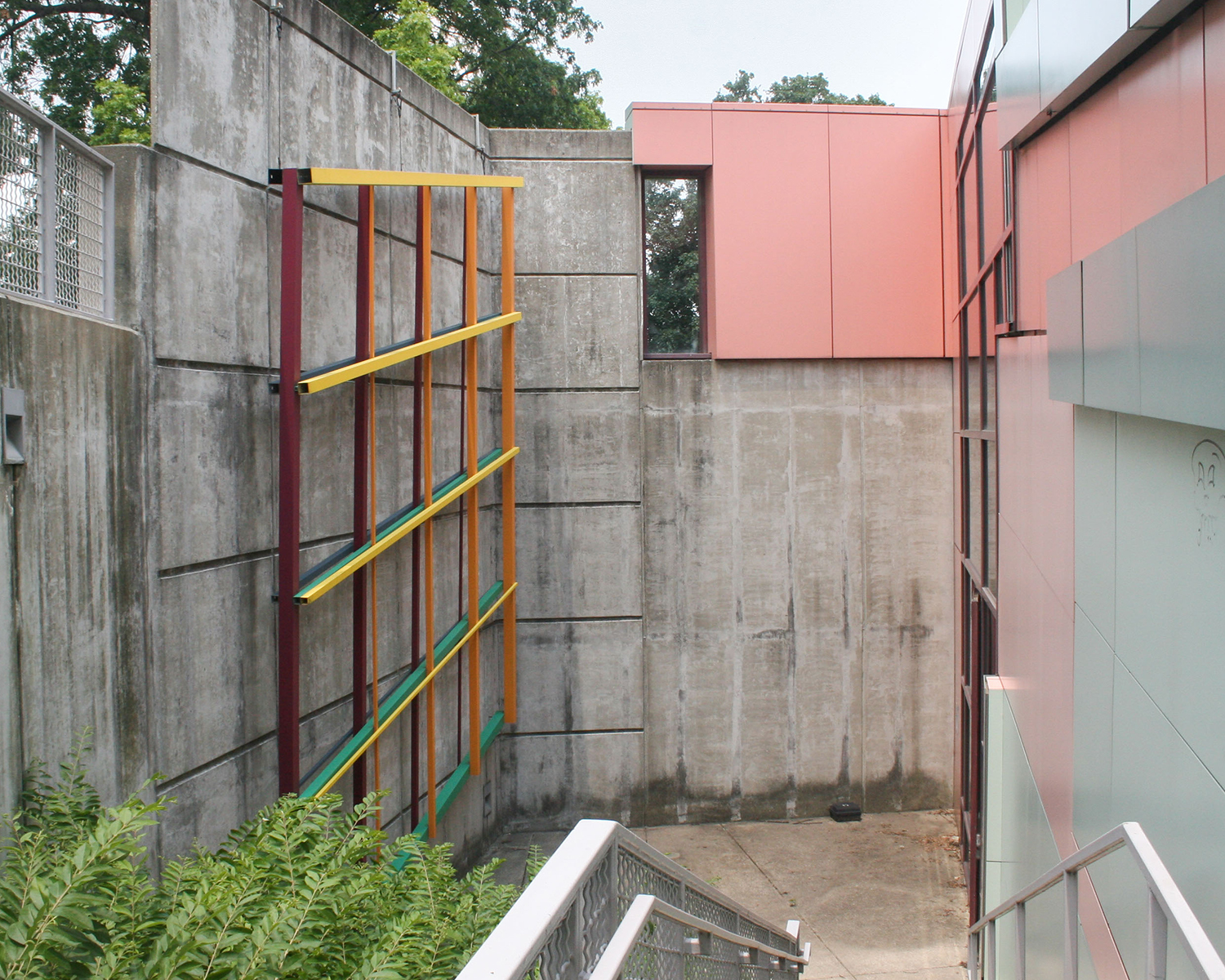
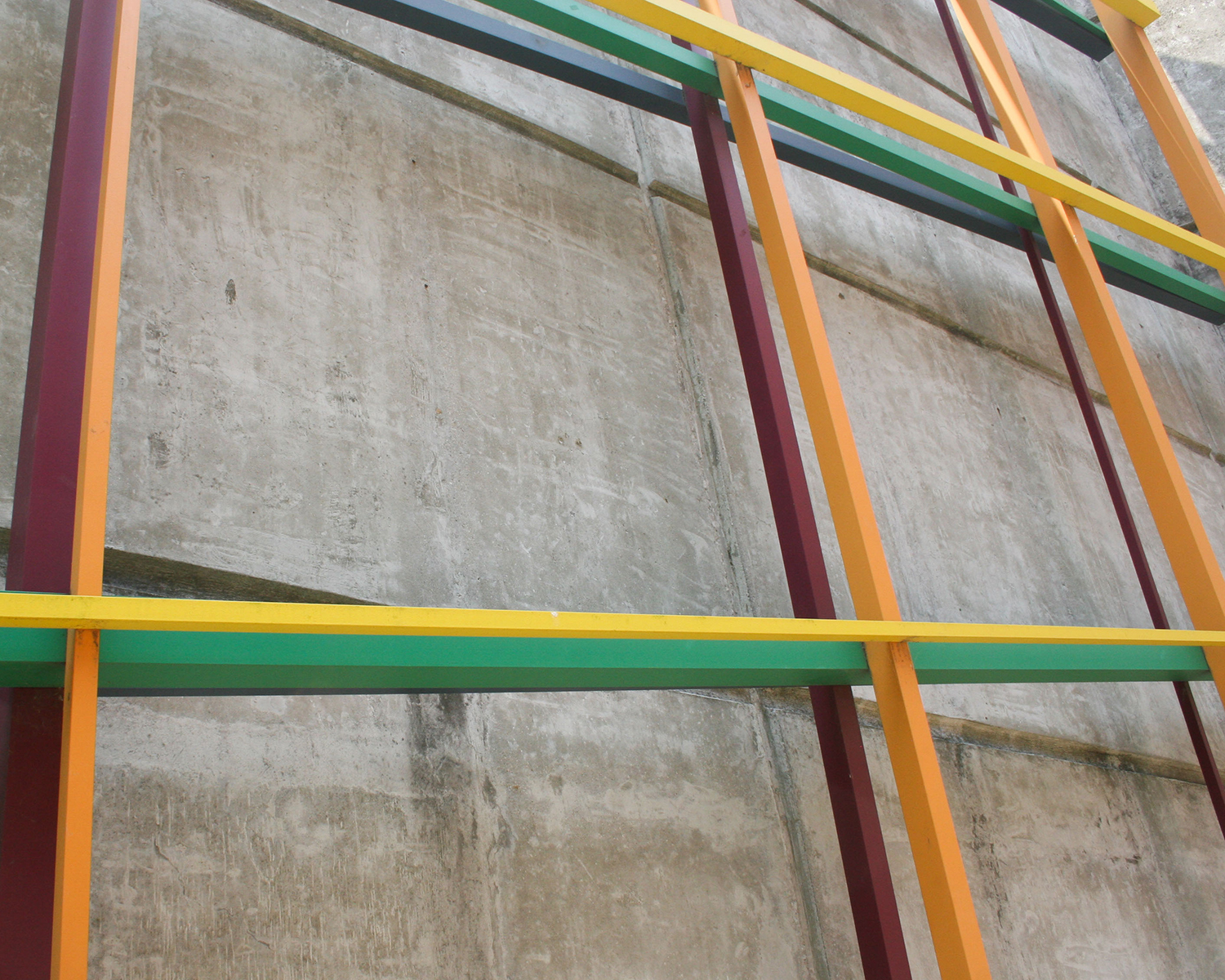
Fields V is the fifth installation of a set and can be seen hanging on the external wall of the west light well of the library in the Arnoff building in the College of DAAP. One axis of the parallelogram is aligned with the vertical arrangement of the defining panels of the retaining wall behind the sculpture.
Jezebel
Bret Price, 2003, Steel, 216 x 16 x 16 in (548 x 41 x41 cm)
Gift of Diane Komminsk, 2013

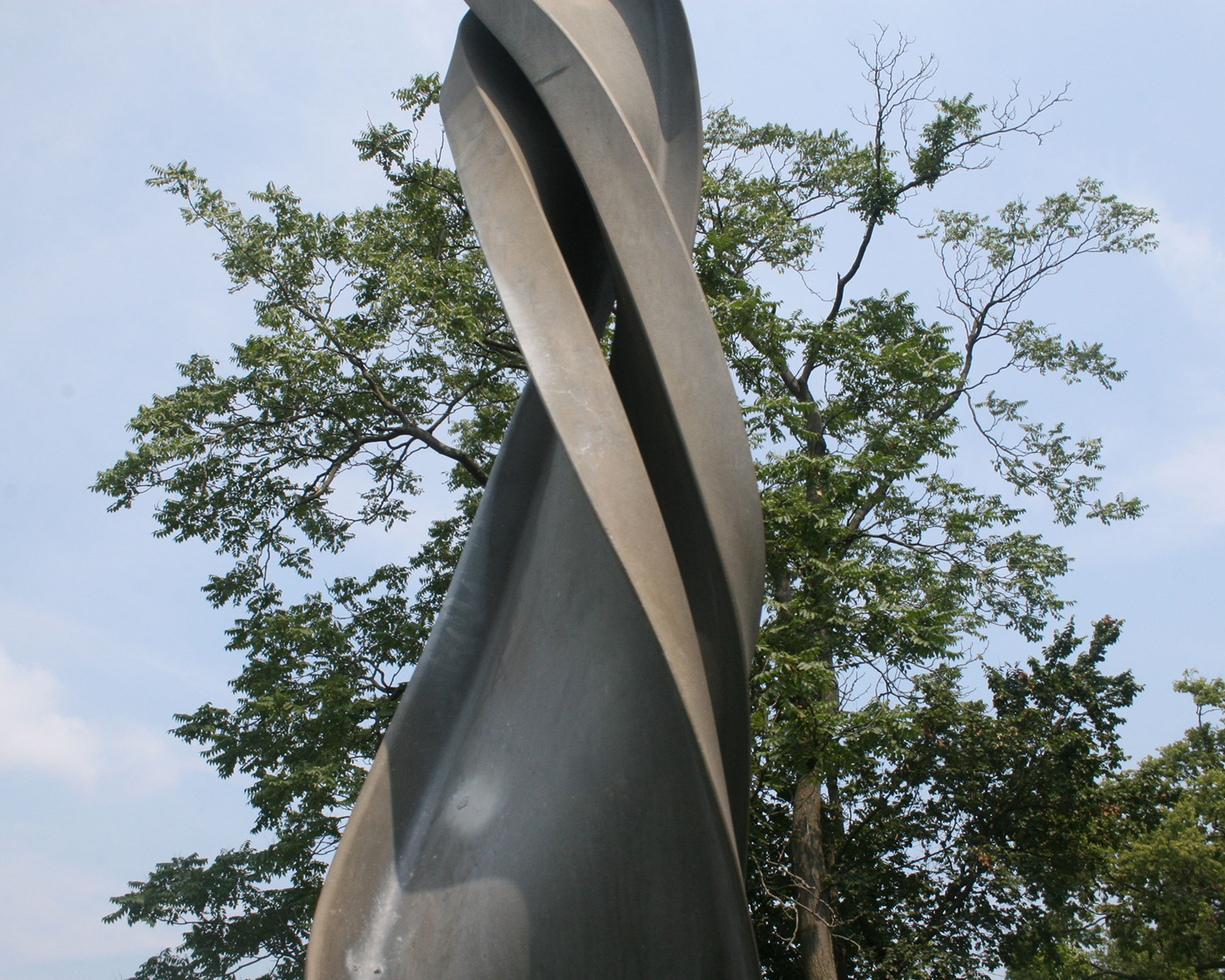
Donated in 2012, Price created the corkscrew-like structure back in 2003 and said the name was inspired by its shape. “When I first made the piece, the sculpture seemed almost flirty to me,” said Price. “That’s how I came across the name.”
Core Couple II
Stuart Fink, 1980, aluminum on concrete, 99.5 x 142 x 102 in (253 x 361 x 259 cm)
Gift of the Artist, 1999
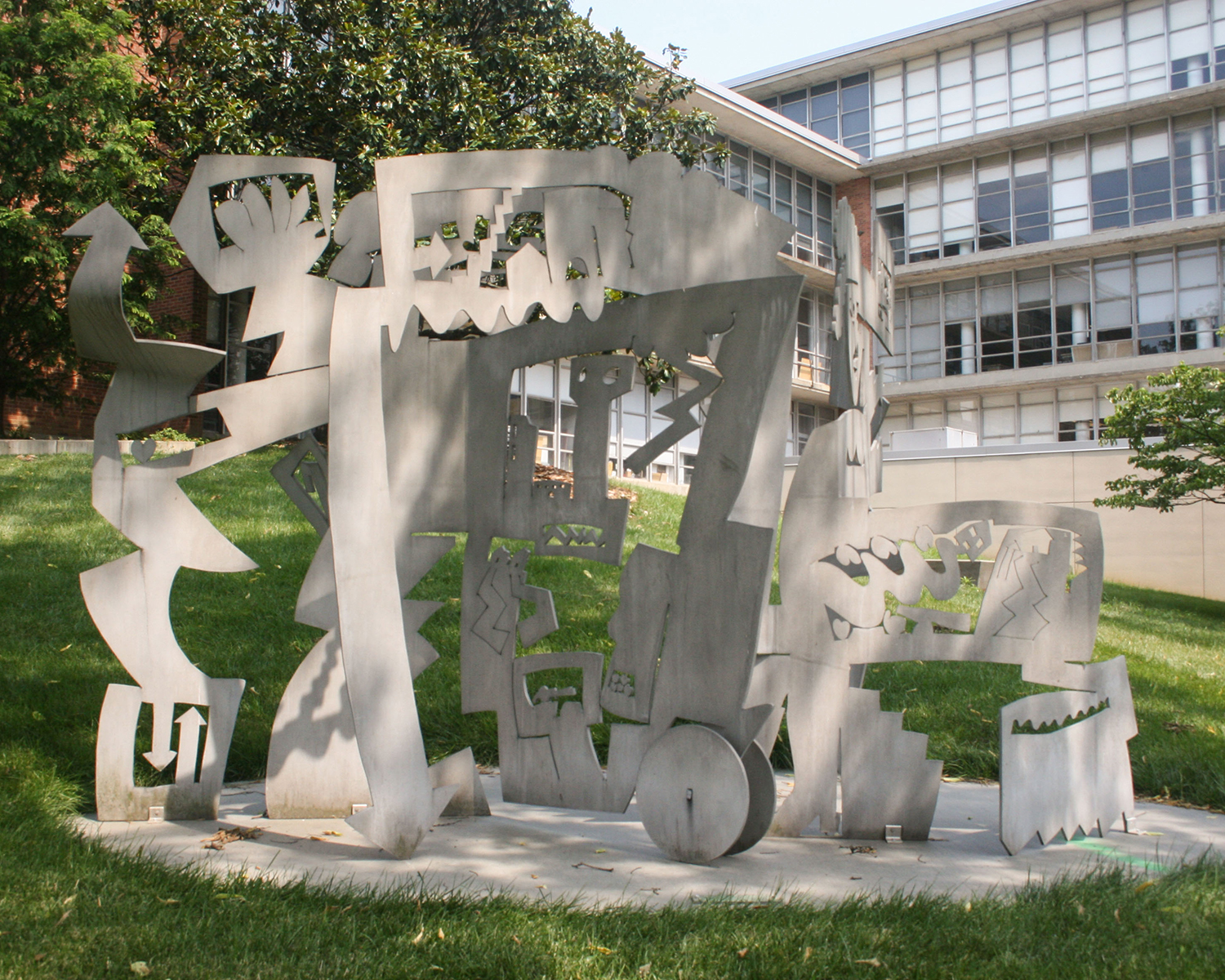
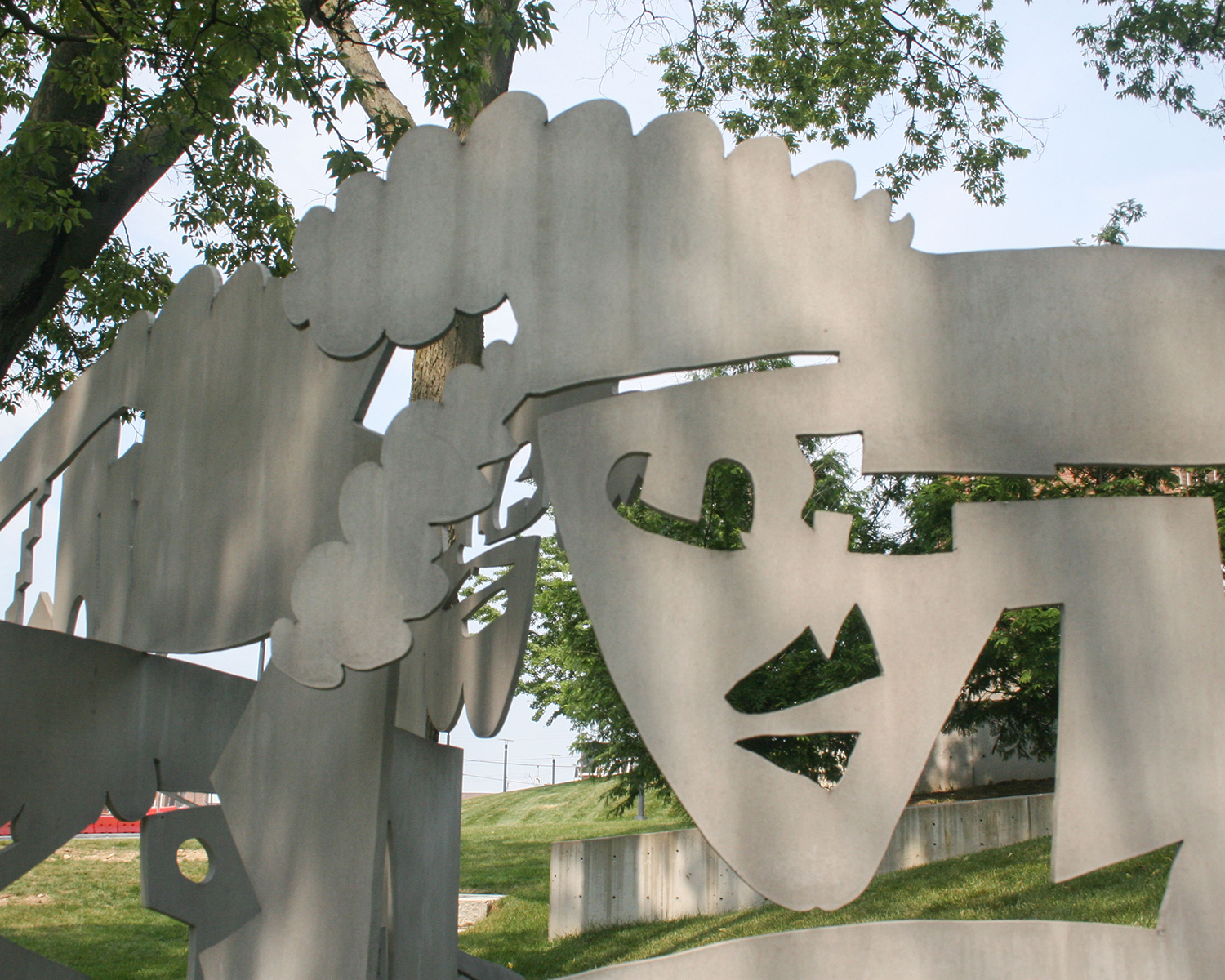
In Core Couple II, the artist created a hybrid sculpture, part abstract and part figurative, animating the two central figures. The cut-outs form symbols such as hearts and houses in negative and positive shapes.
Mick and Mack
unknown artist, 19th century, stone, each 37 x 54 x 20 in (94 x 137 x 51 cm)
Gift of the Jacob Hoffner Estate, 1904
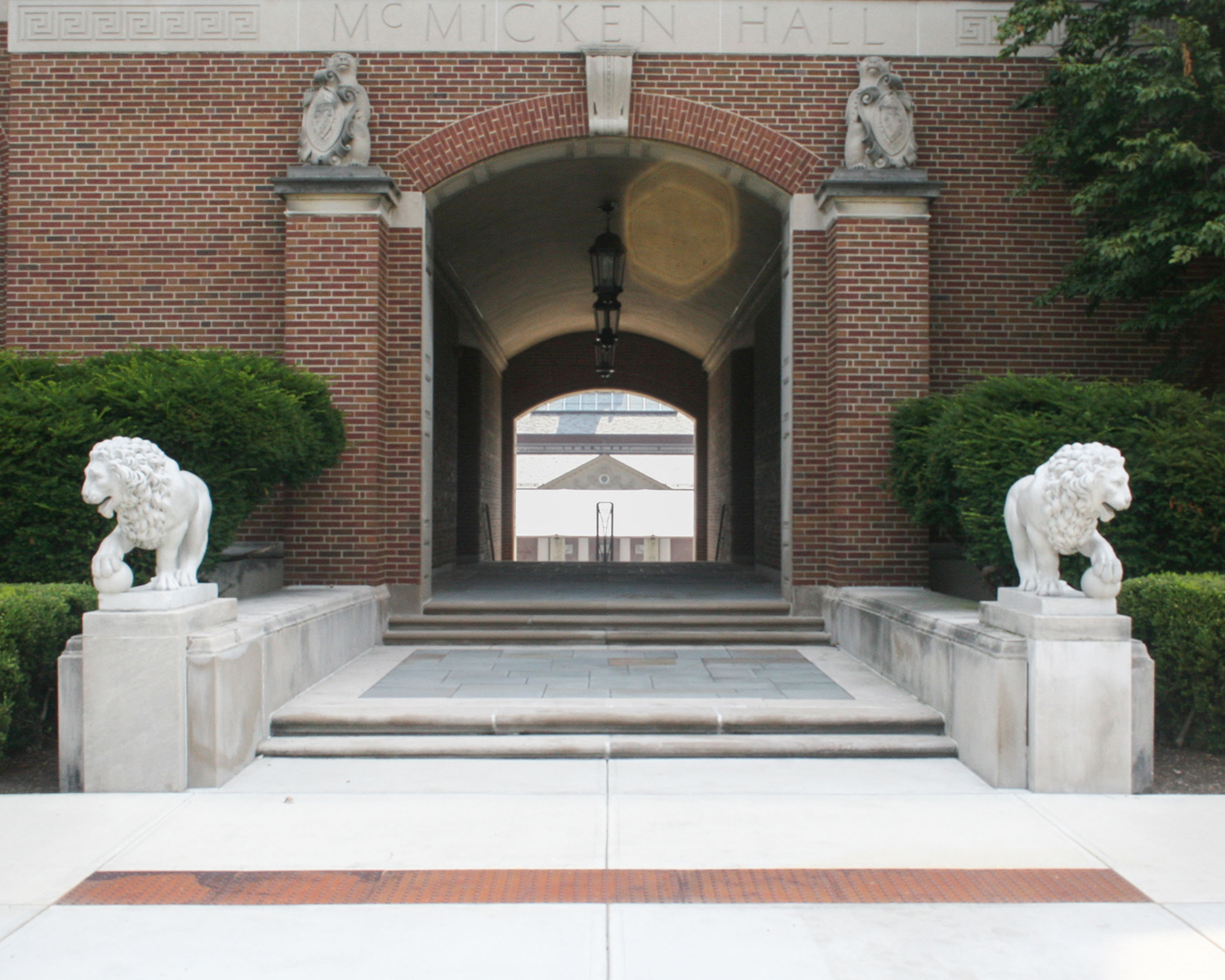
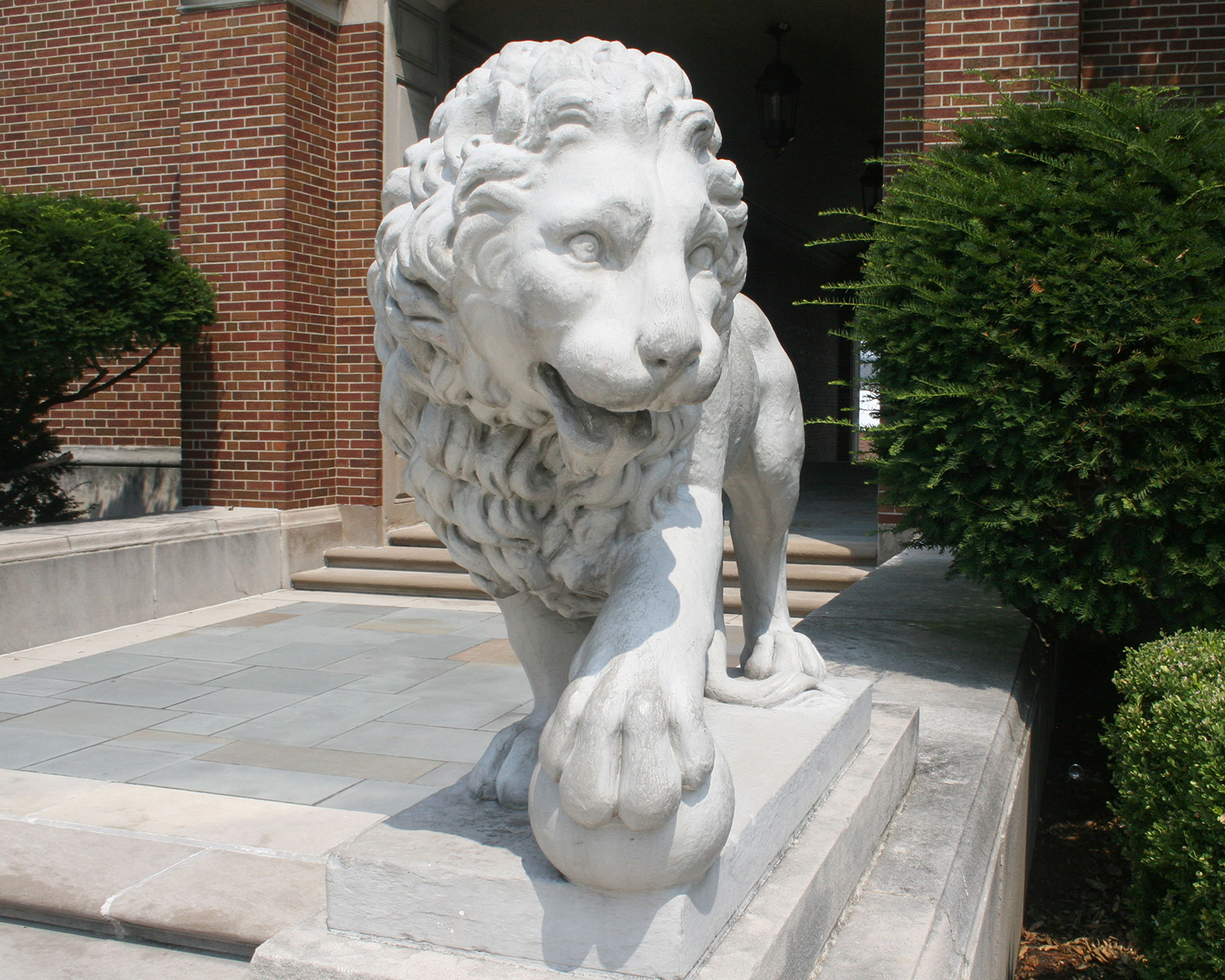
Acquired by the University of Cincinnati in 1904, the pair of lions previously graced the estate of Jacob Hoffner, a real estate developer known for his gardens and home adorned with statuary. These sculptures were commissioned as small copies of an Italian pair in Florence's Loggia dei Lanzi, after Hoffners travels to Italy. Replace with your text
Diana of Versailles (Artemis, goddess of the hunt)
Pietro Bazzanti, mid 19th century, marble, 17.5 x 16.5 x 8 in (44 x 42 x 20 cm)
Acquired 1979
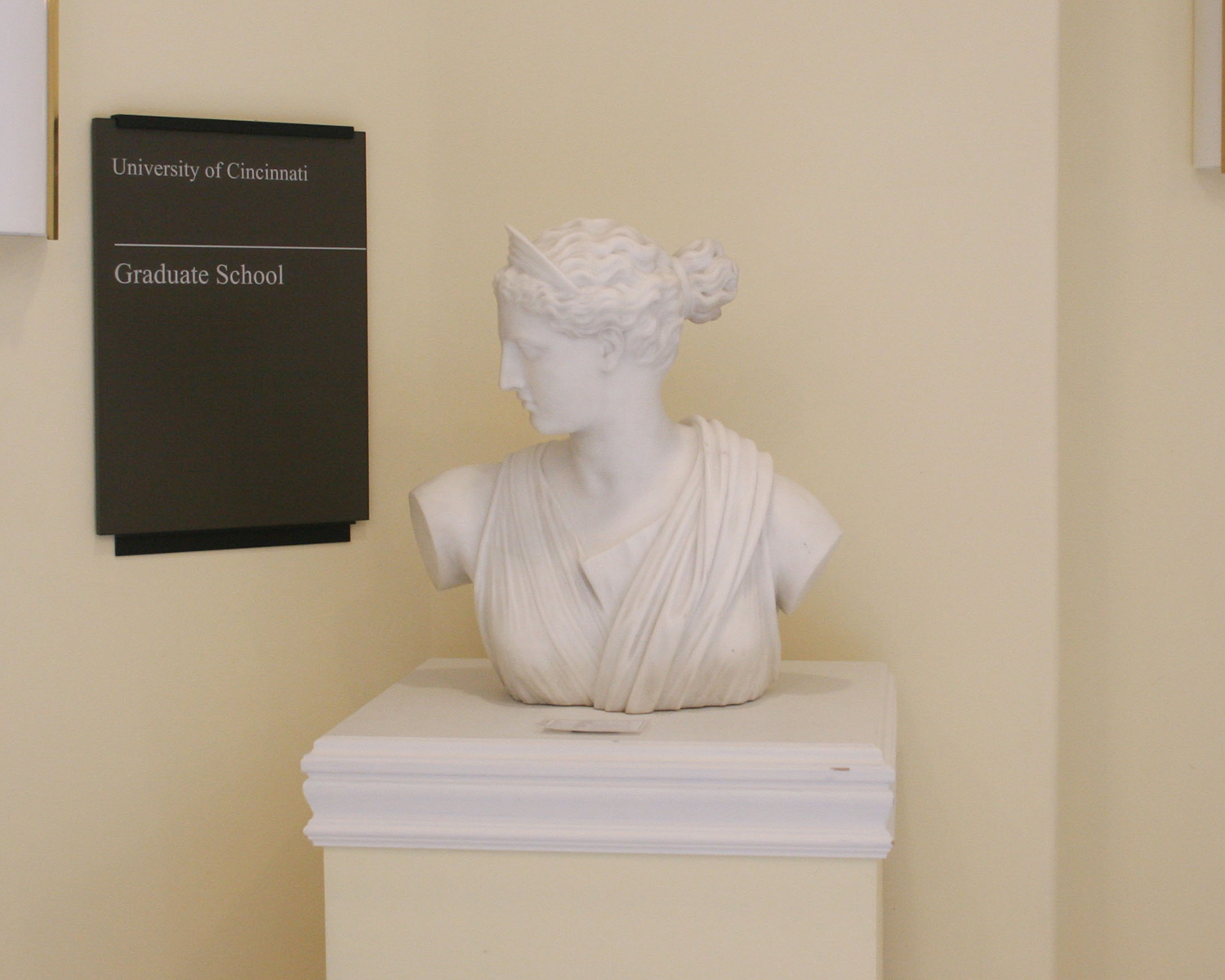
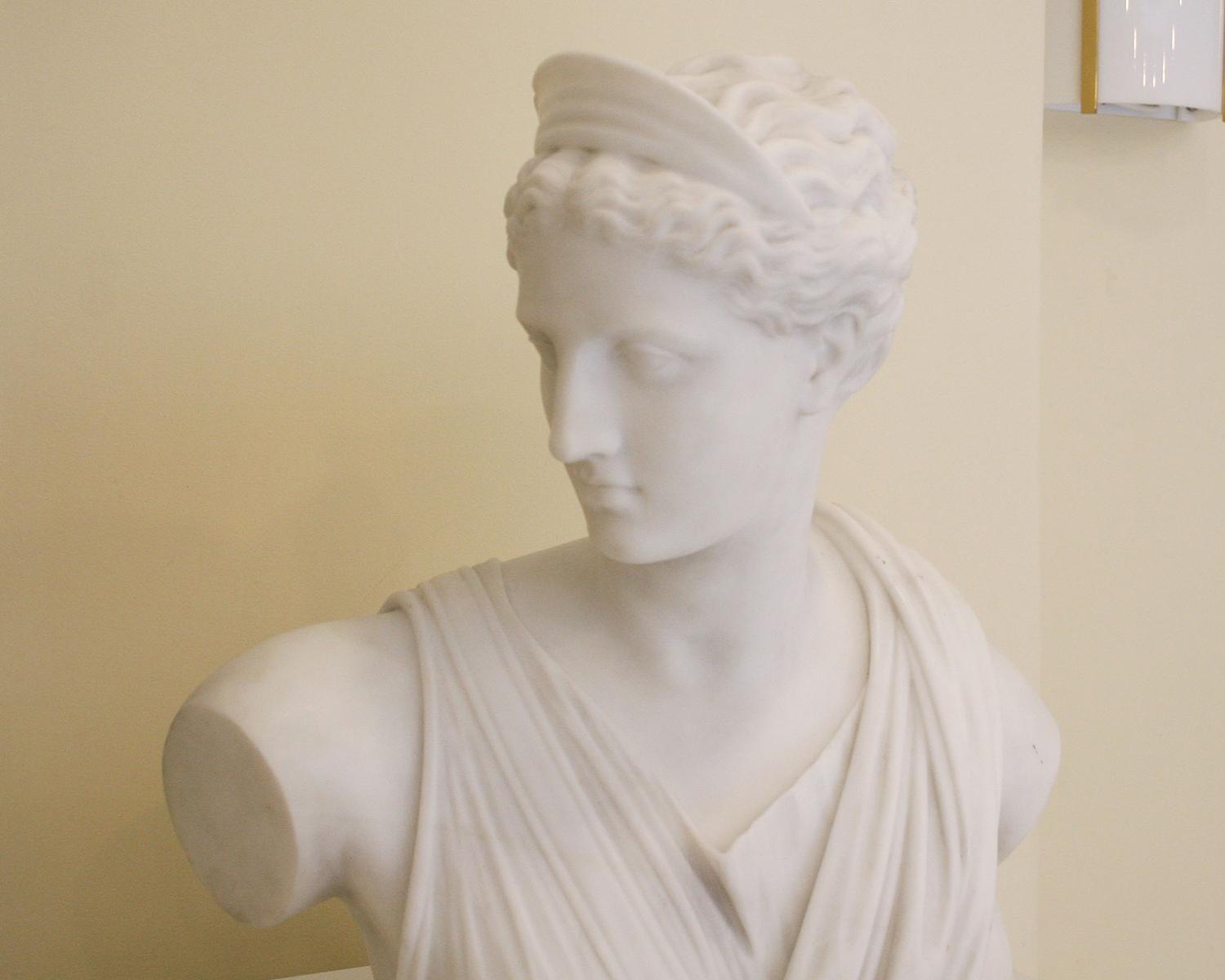
Pietro Bazzanti was an Italian 19th century sculptor who was born in 1842. Pietro was a central figure in the production of Florentine sculpture at the end of the nineteenth century. He is associated with such sculptors as Cesare Lapini, Ferdinando Vichi and G.Pugi, all of whom executed works bearing the inscription Galleria Bazzanti. These sculptors produced accomplished copies after the Antique and well-known models by many of the greatest Italian sculptors including Donatello, Giambologna, Canova and Bartolini.
Phoebe Jane Hobson Greenwood
Randolph Rogers, circa 1863, marble, 20 x 18.5 x 13 in (51 x 46 x 33 cm)
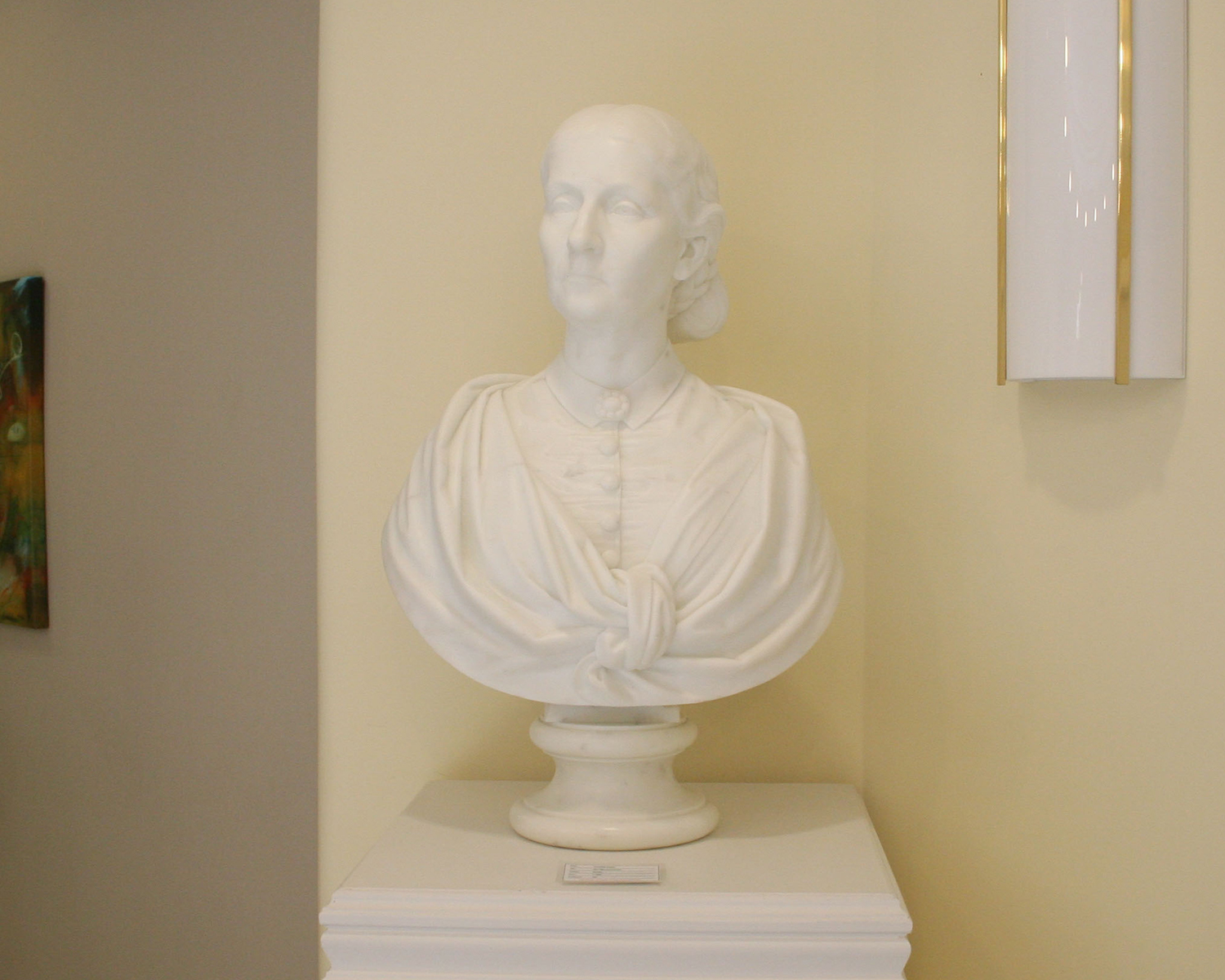

This bust is a portrait of Phoebe Greenwood, a Cincinnati civic leader and director of the Ohio Mechanics Institute, which later became the Ohio College of Applied Science at the University of Cincinnati. Executed in marble, this bust includes the shoulders and chest, which is typical of Roger’s approach. Greenwood is represented with a realistic style, attributed to the influence of Roman portrait busts. The sculpture also demonstrates Roger’s ability to capture the likeness and personality of his subjects.
Pelican and Grouse
Lee Lawrie, circa 19th century, sandstone
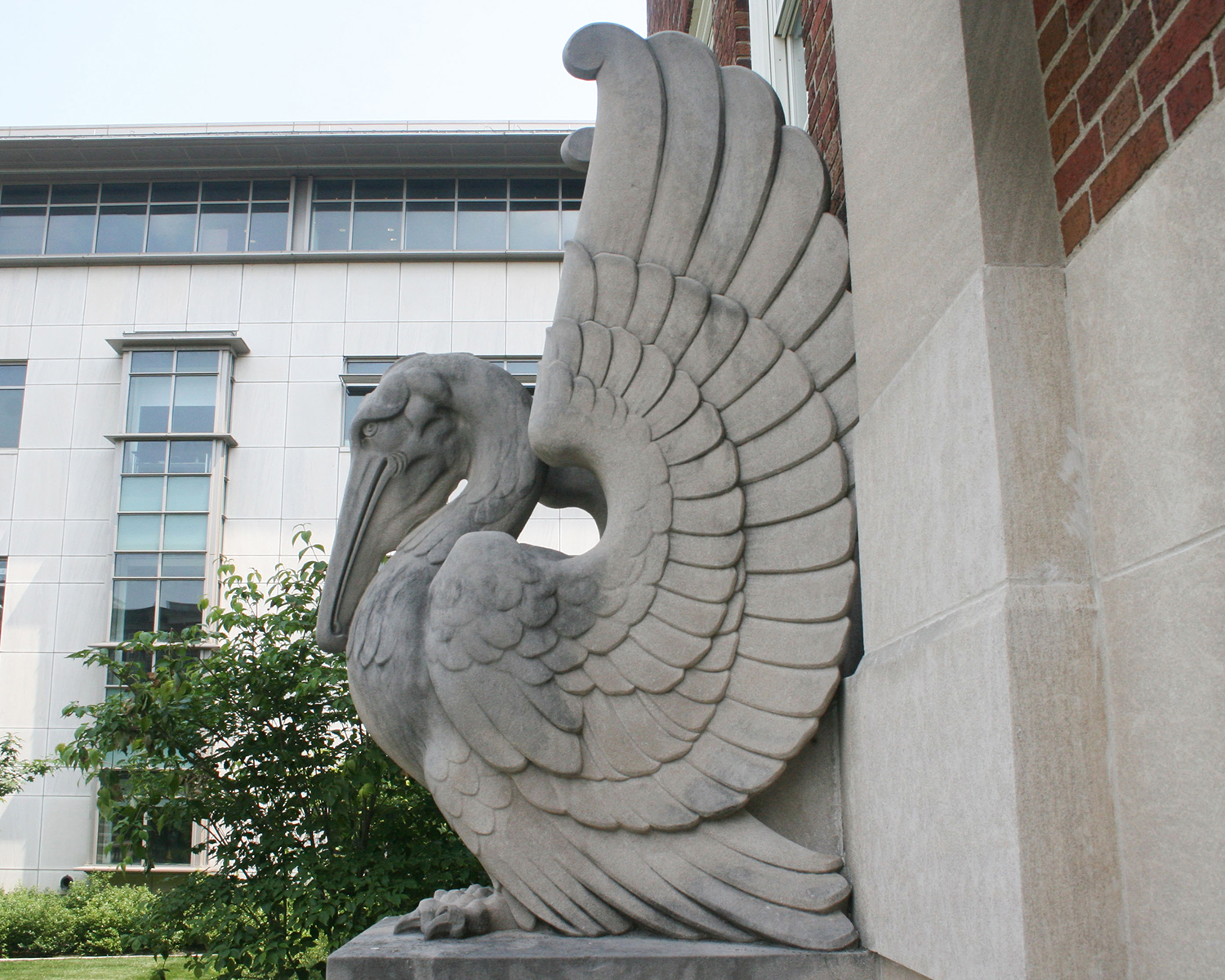
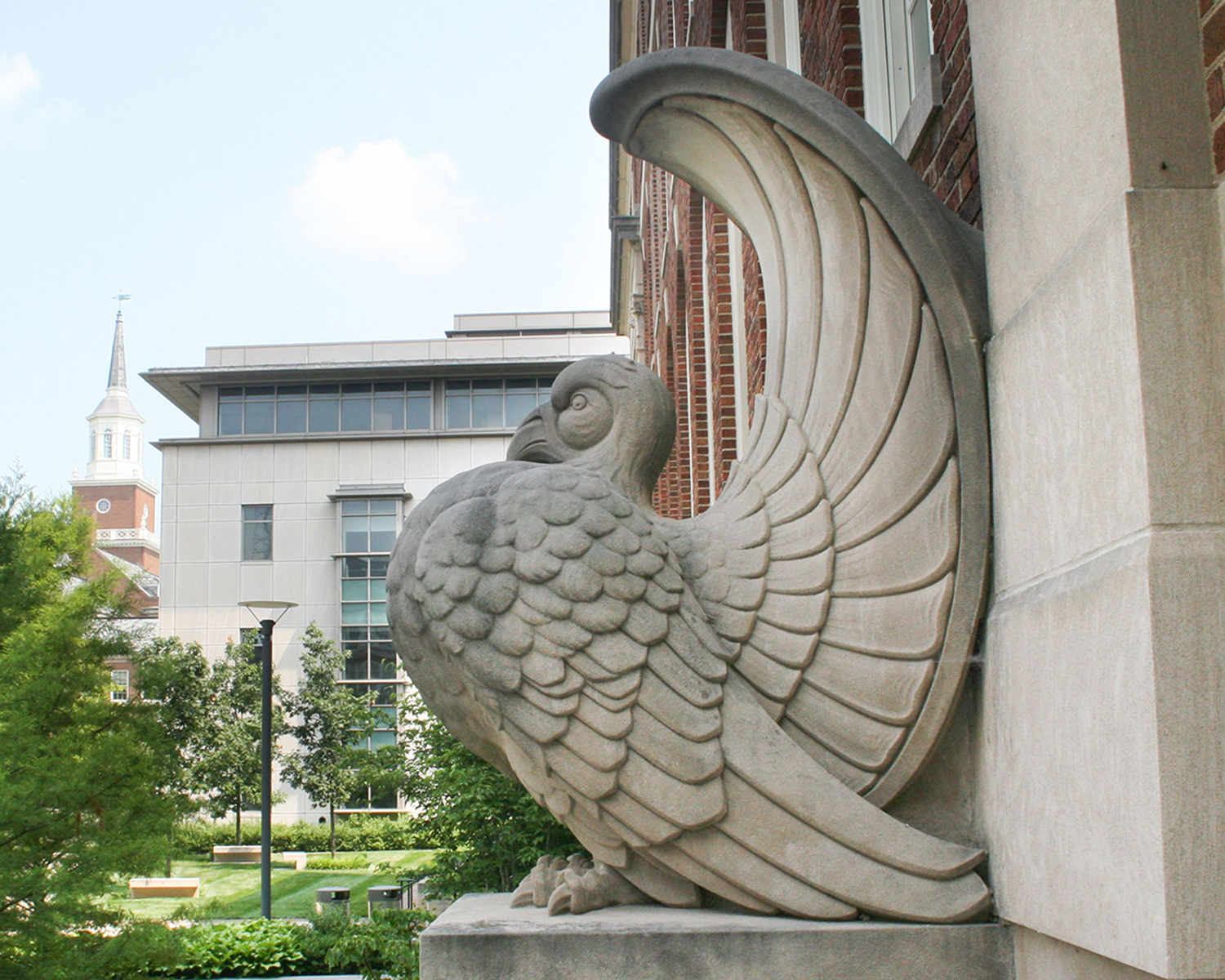
Lee Lawrie was a notable German sculptor and a key figure in the American art scene preceding World War II. Over his long career of more than 300 commissions, Lawrie's style evolved through Modern Gothic, to Beaux-Arts, Classicism, and, finally, into Moderne or Art Deco. The birds contrast with the buildings’ Roman motifs, Art Deco detailing, and Neoclassical features.
Chief Justice William Howard Taft
William T. Moore, III, 1991, bronze on granite, 95.5 x 35 x 33.5 in (243 x 89 x 85 cm)
Acquired 1999
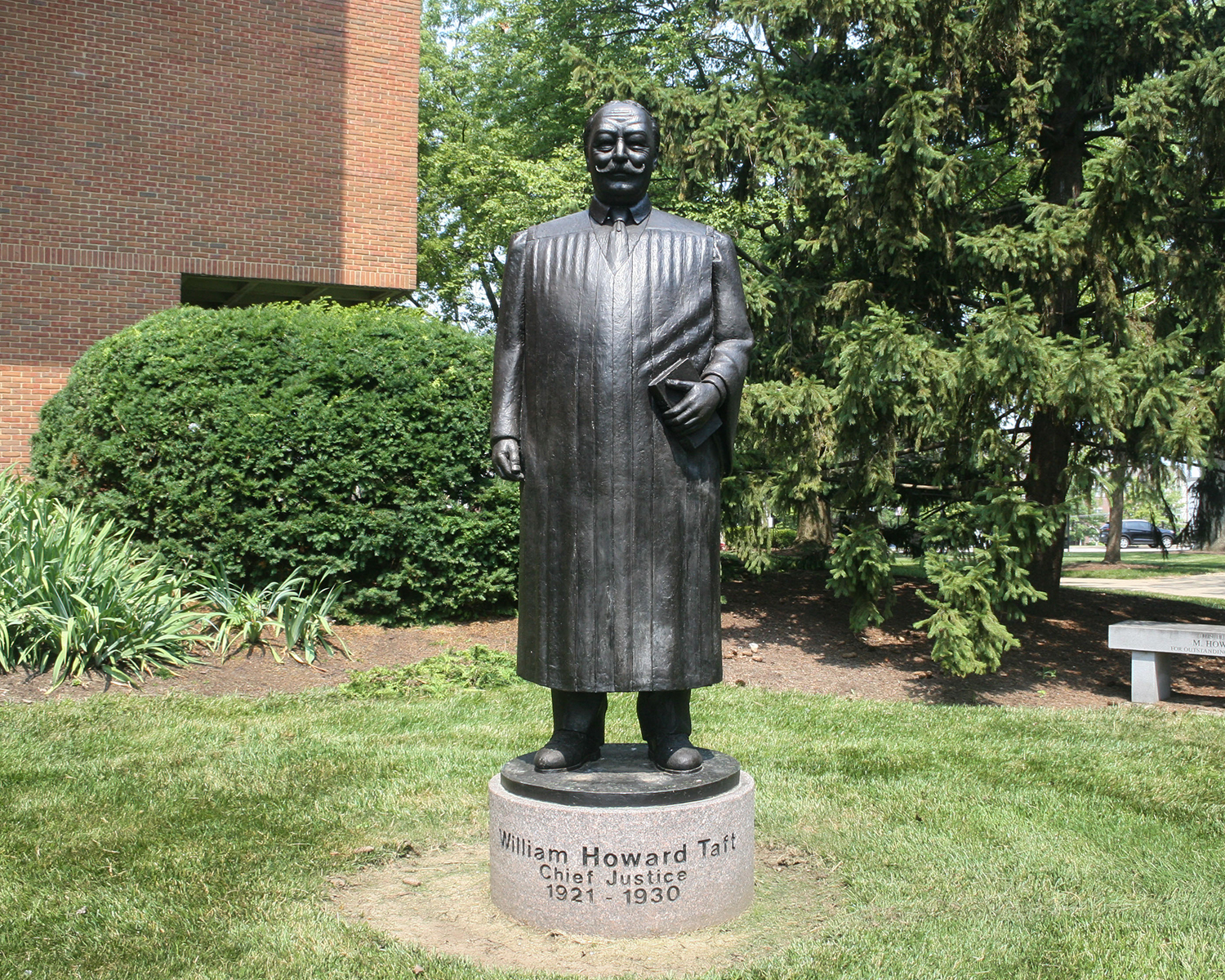
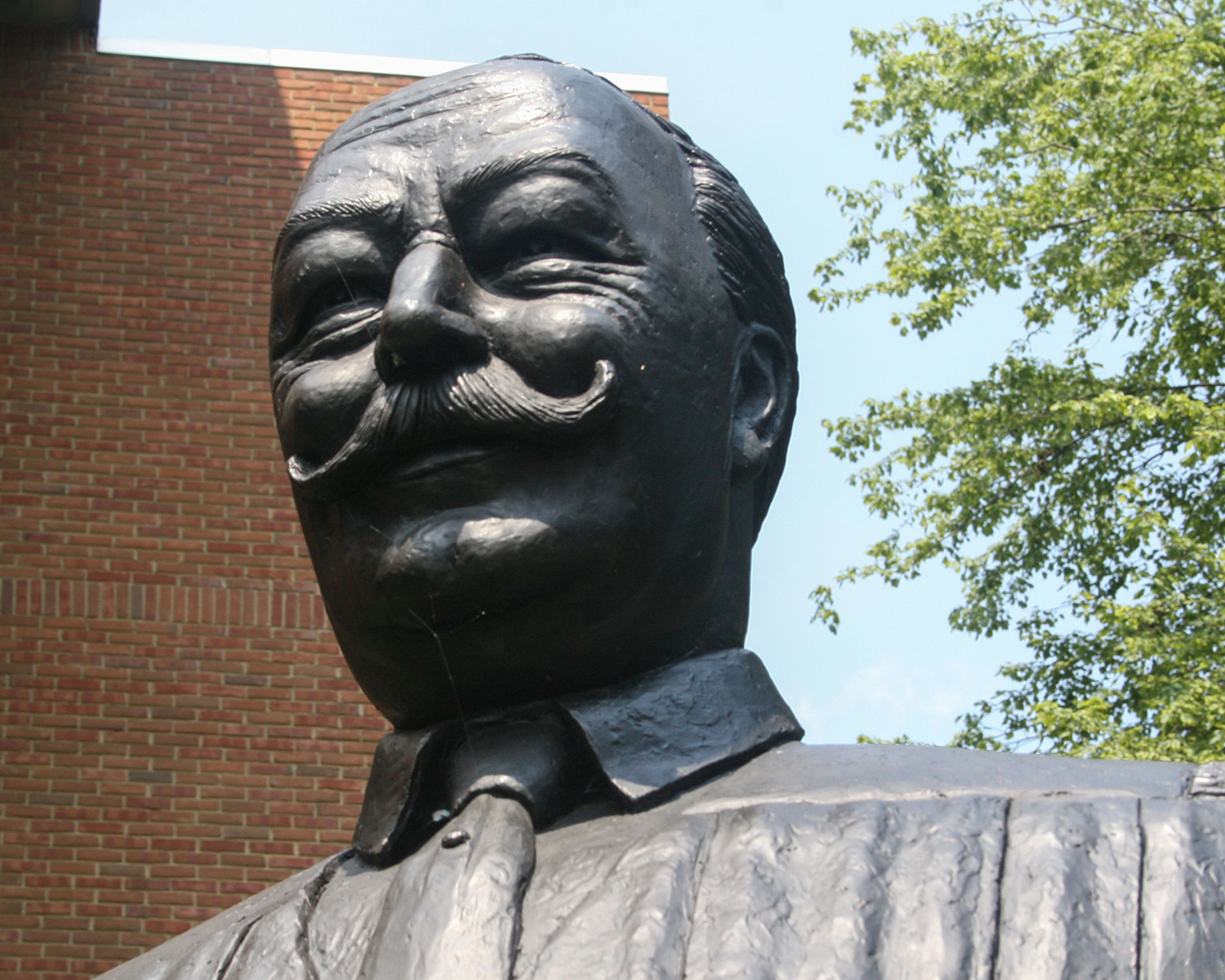
William Howard Taft, a Cincinnati native and UC alum, was the only US citizen to serve as president of the United States (1909-13) and a chief justice of the US Supreme Court (1921-30).
On Sept. 15, 1992, Taft’s 135th birthday, the University of Cincinnati College of Law dedicated an 8-foot bronze statue of Taft, dean of the law school from 1896 to 1900, dressed in judicial robes.
Memorial Fountain to Clara Baur
Clement John Barnhorn, 1914, bronze and granite on cement, 105 x 95 x 77.75 in (267 x 241 x 197 cm)
Gift of the 1914 CCM Students, Alumni, and Faculty

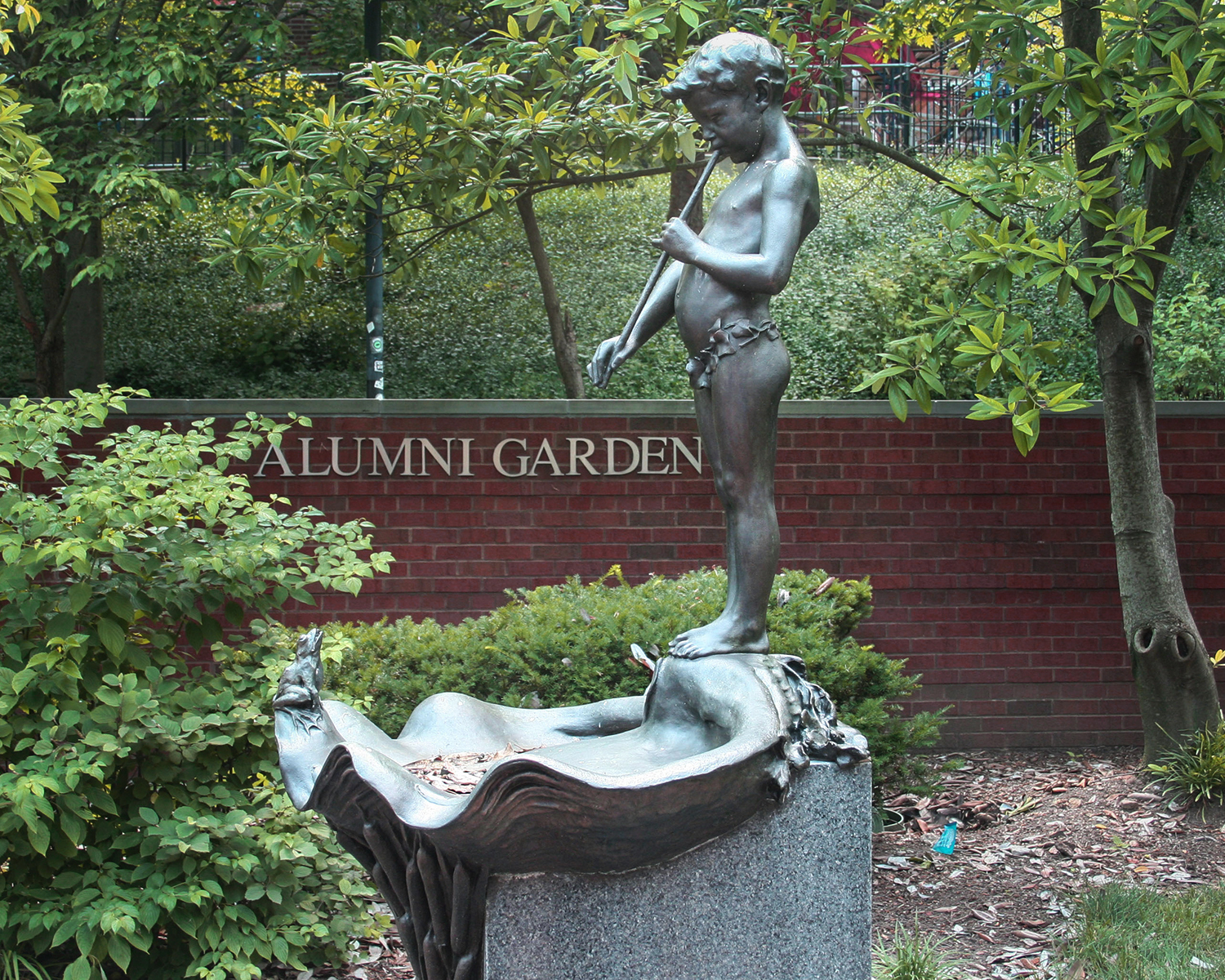
Clement Barnhorn's memorial to Clara Baur displays the graceful form typical of turn-of-the-century figurative sculpture. Clara Baur founded the Cincinnati Conservatory of Music in 1867.
The Three Muses
Sam Gilliam, 2001, mixed media, 36 x 192 x 6 in (91 x 488 x 15 cm)
Ohio Percent for Art Program, 1999
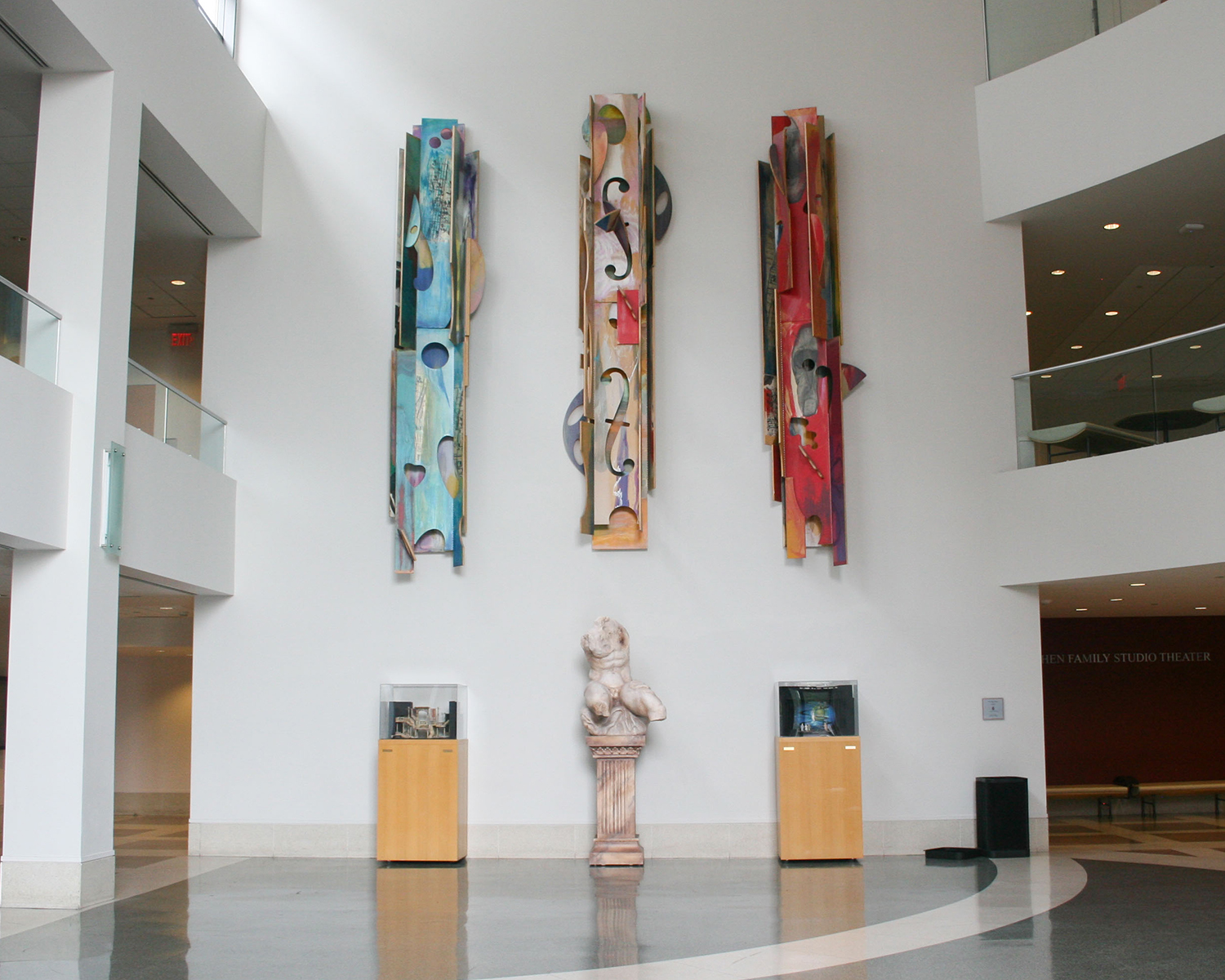
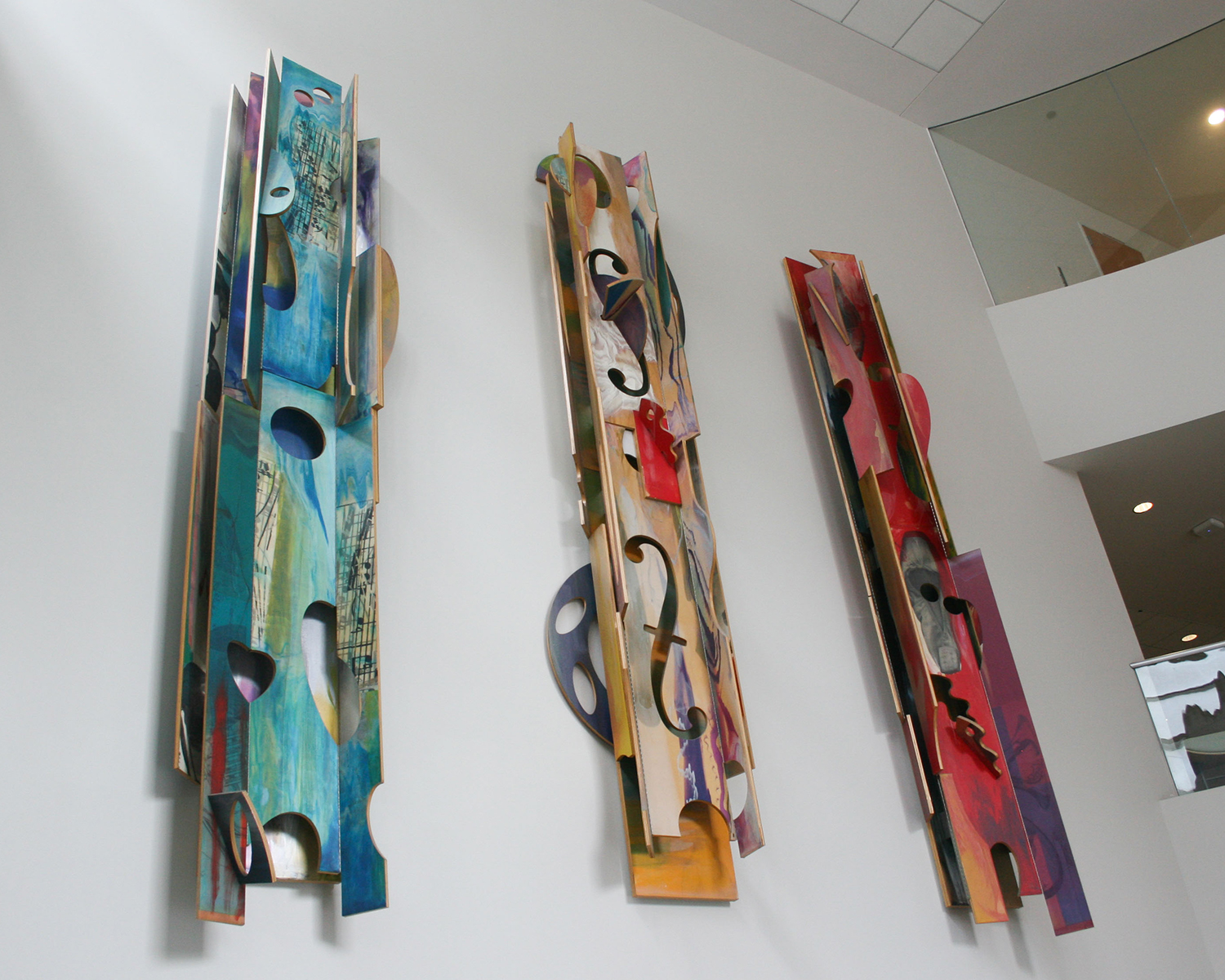
Throughout the vividly painted surfaces of The Three Muses are images of music, musical instruments, and dance slippers to suggest the activities that fill the College Conservatory of Music. The Three Muses is mounted above eye level, suggesting the celestial domain of the greek goddesses.
Light Mast
James Carpenter, 1999, aluminum, glass and stainless steel, 48 x 1 x 2 ft (14.6 x .3 x .6 m)
Ohio Percent for Art Program, 2001
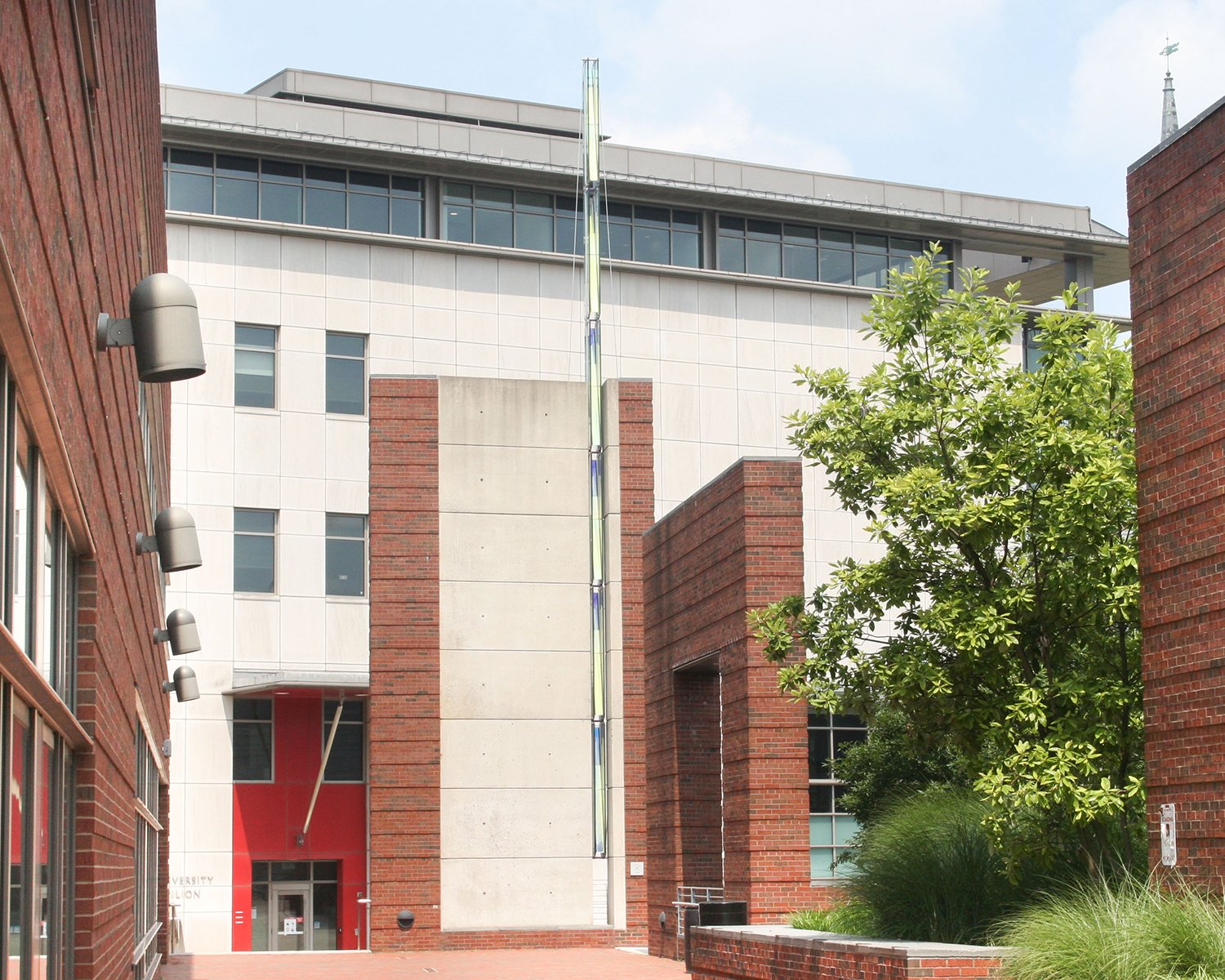
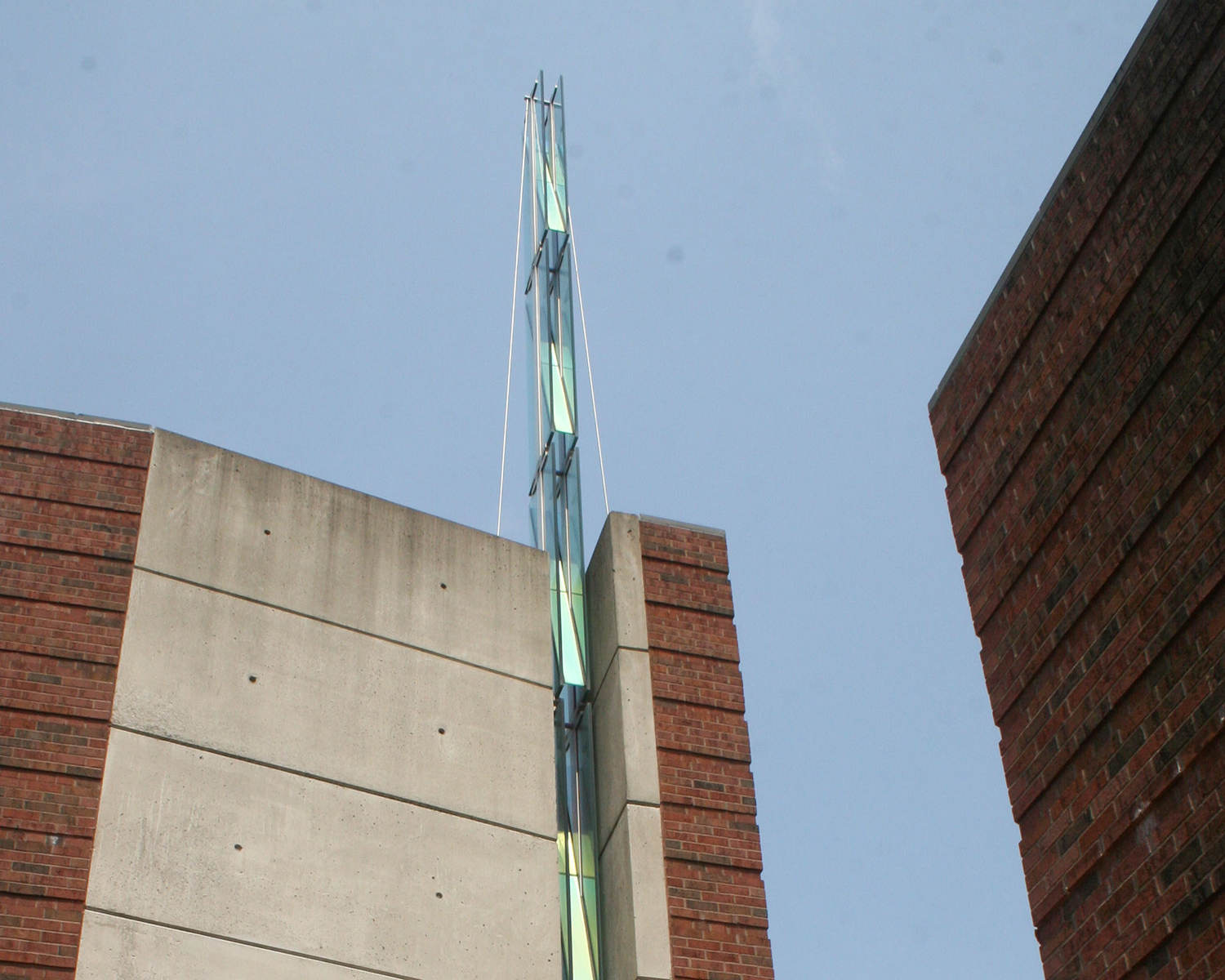
This luminous glass tower marks the entry to the College Conservatory of Music. The tower forms a vertical shaft of light acting as a visual marker, day and night. The tower is essentially a union of structure, optics and lighting. The pretensioned glass mast is composed of diffuse and transparent sheets of glass. All glass in the sculpture is laminated for safety and provides both a structural and optical function.
Figura-Prima
Magdalena Abakanowicz, 1995, bronze, 165.25 x 61 x 52 in (420 x 155 x 132 cm)
Ohio Percent for Art Program, 2001
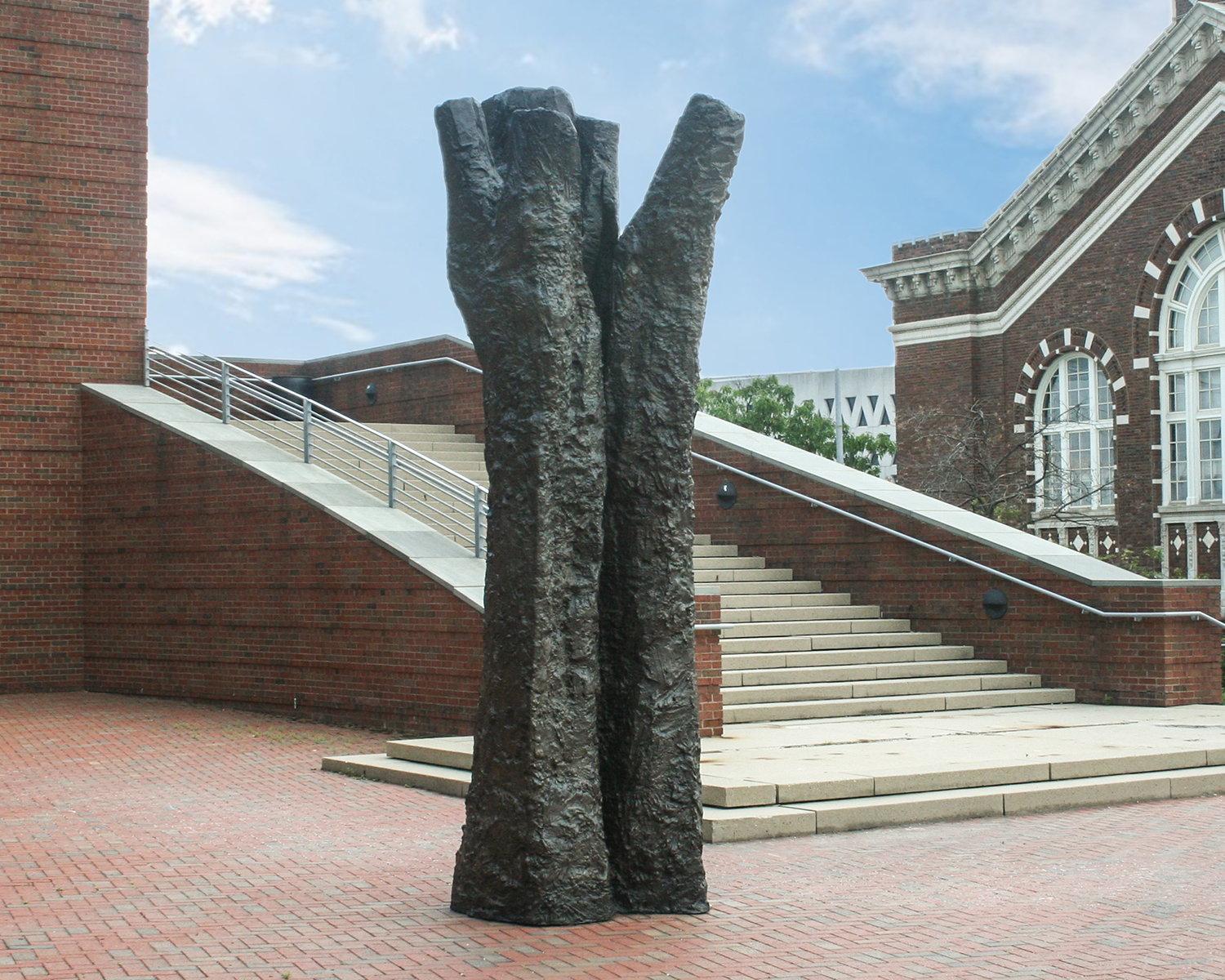
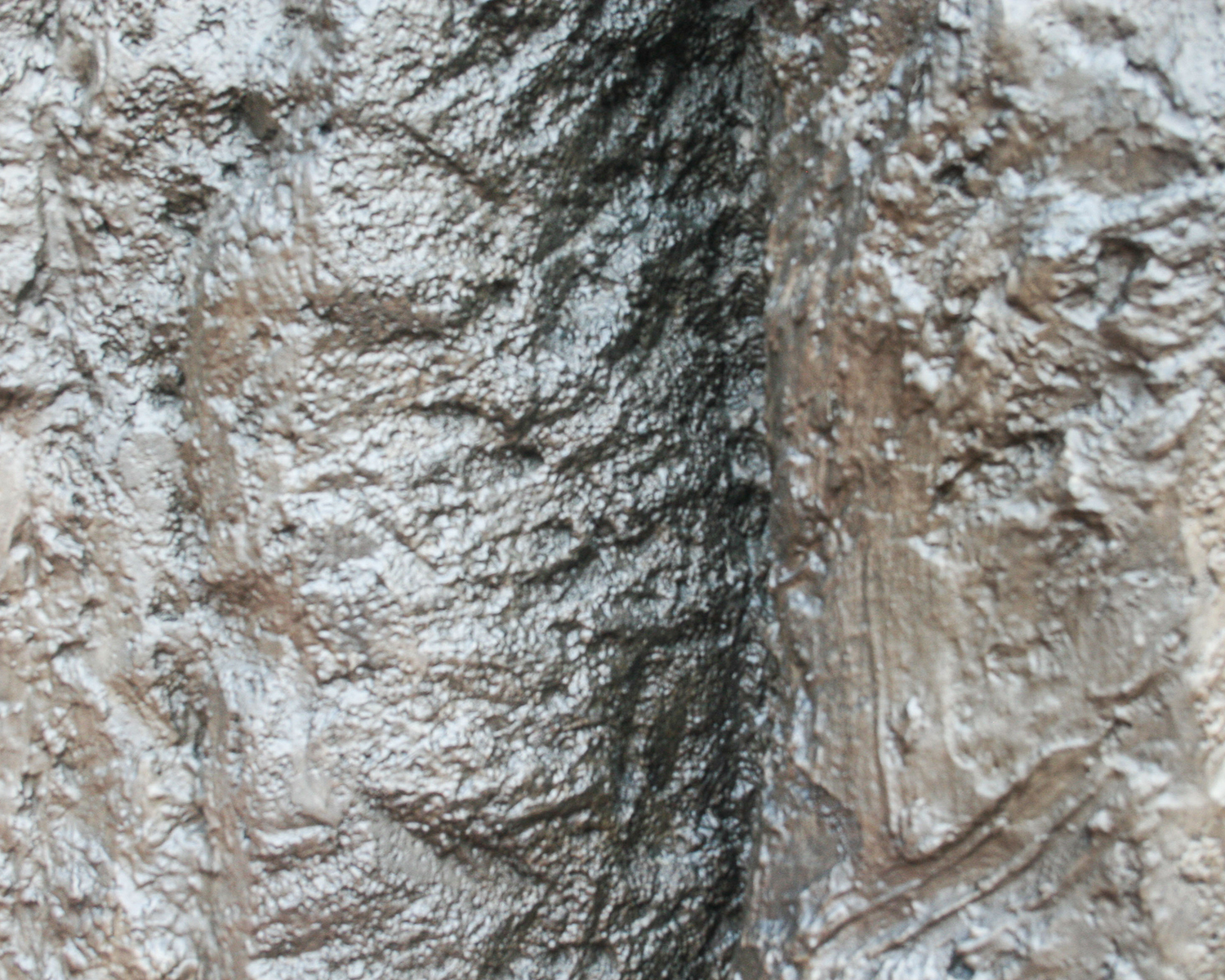
Abakanowicz is known for works that are evocative of nature. One of the artists imposing tree sculptures, Figura-Prima, marks the front entrance to Mary Emery Hall. It is a part of a series of similar forms called “Hand-Like Trees”.
EAST CAMPUS
Florence Nightingale
Father Jerome Cox, 1996, bronze
Gift of Joan Nightingale Fox
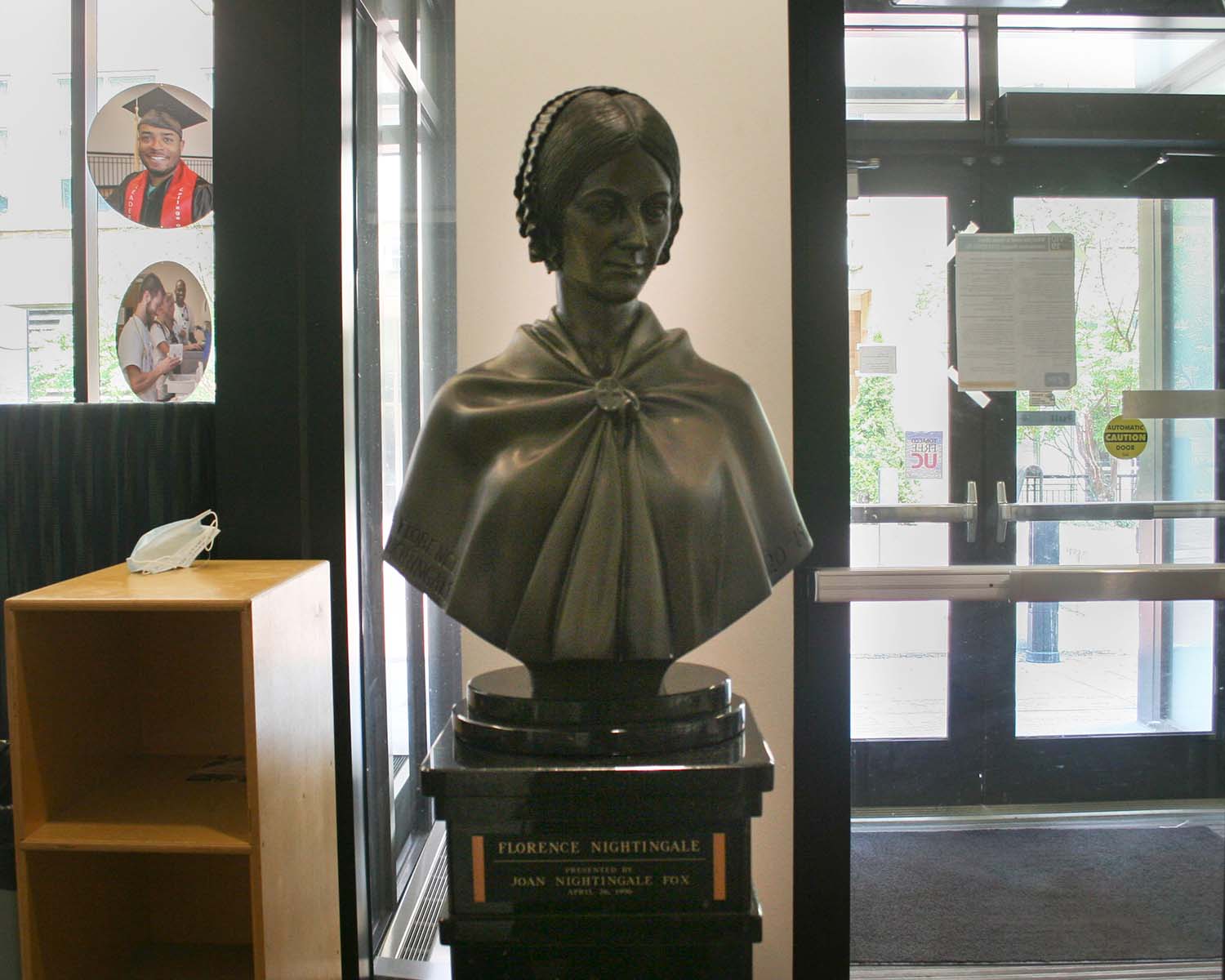
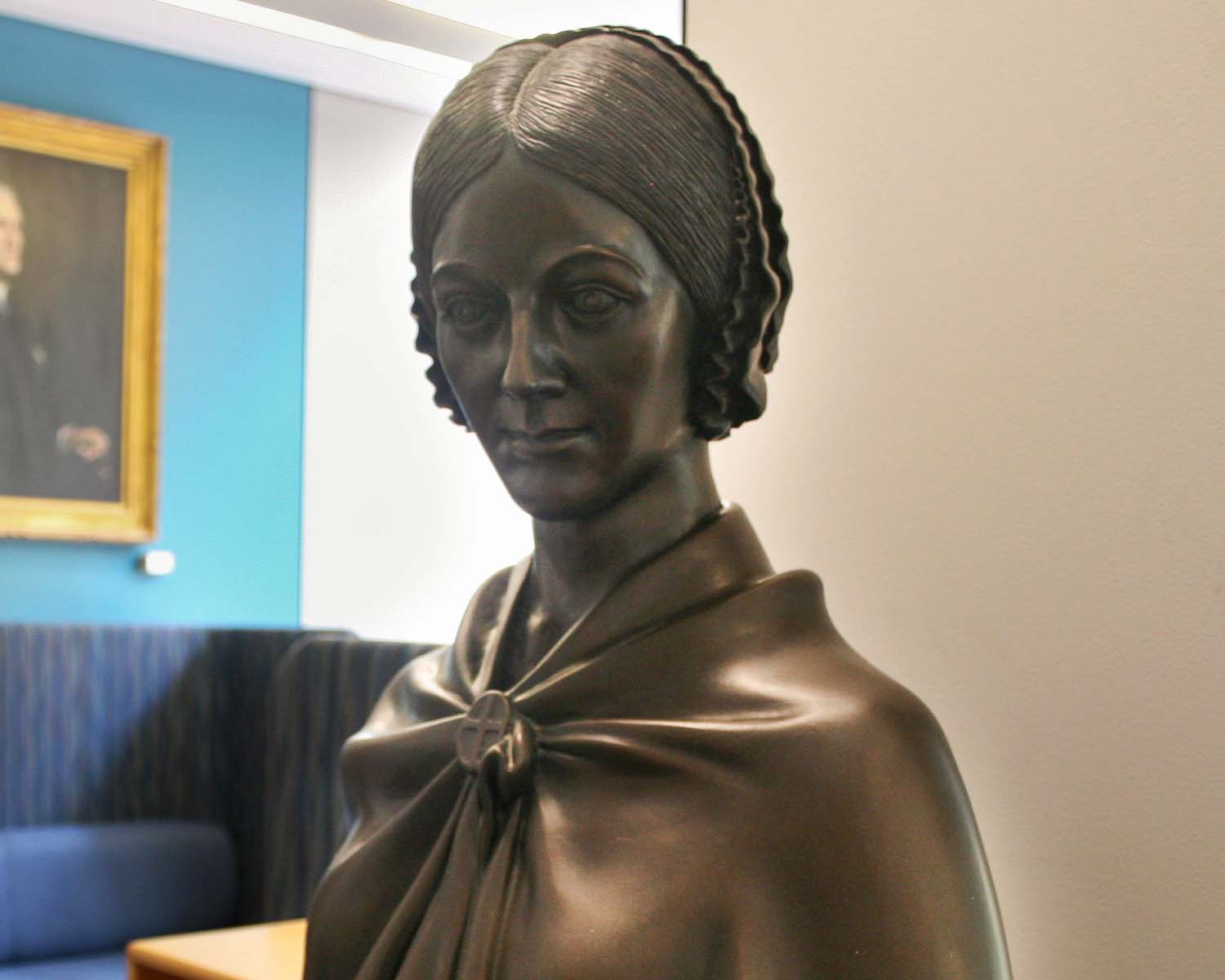
Gift of Florence Nightingale’s great-grandniece, Joan Nightingale Fox and created by Father Jerome Cox. Cox was an esteemed sculptor and art educator known for his commissioned bronze sculptures throughout the US and Europe. The Florence Nightingale Bust is located Proctor Hall as a celebration of Nightingales contributions to sanitation and social reform earning her the title as the “founder of modern nursing.”
Cloud
Harry Bertoia, circa 1950, aluminum, brass, copper and steel, 48 x 84 in (121.9 x 213.4 cm)
Gift of Mary Johnson
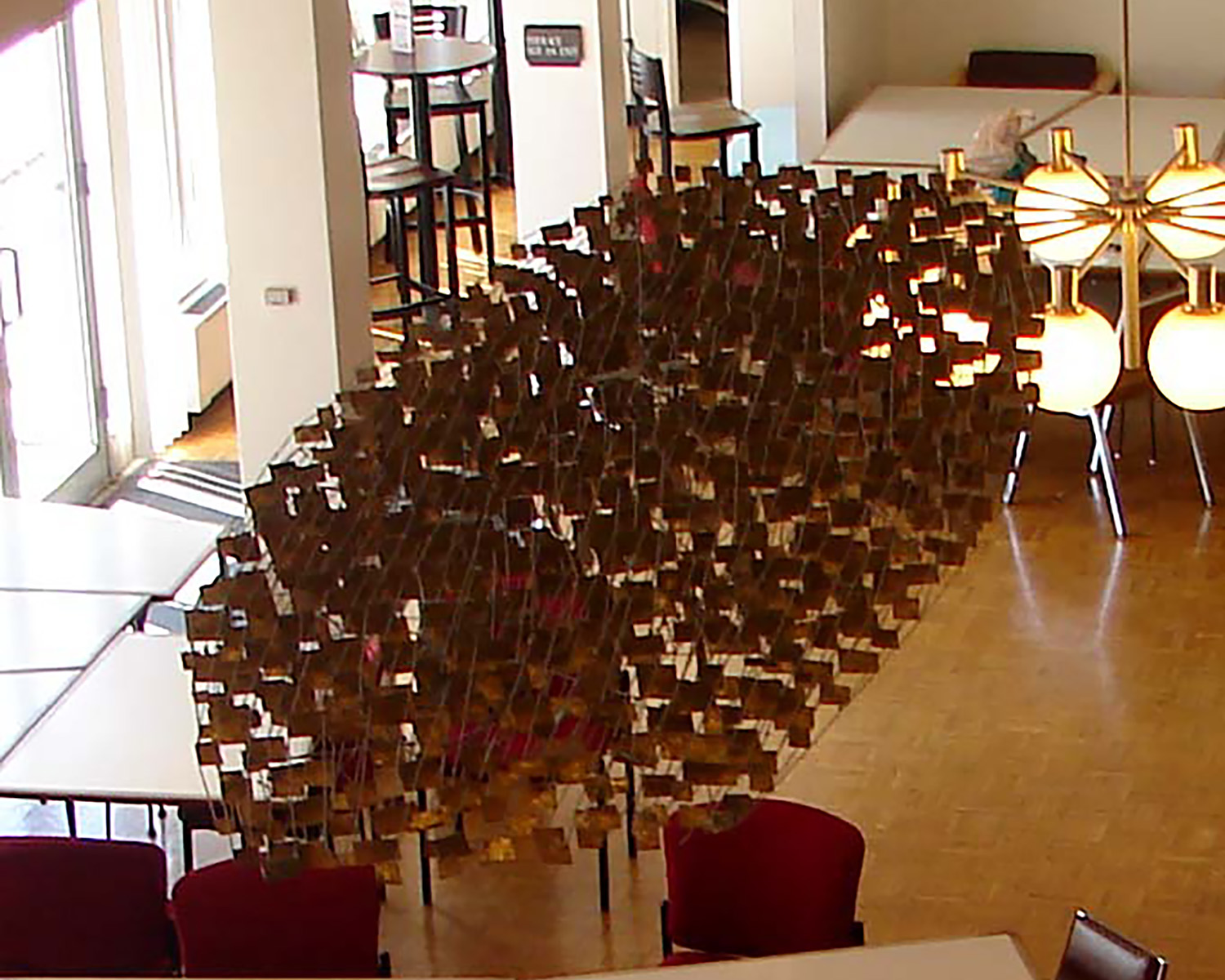
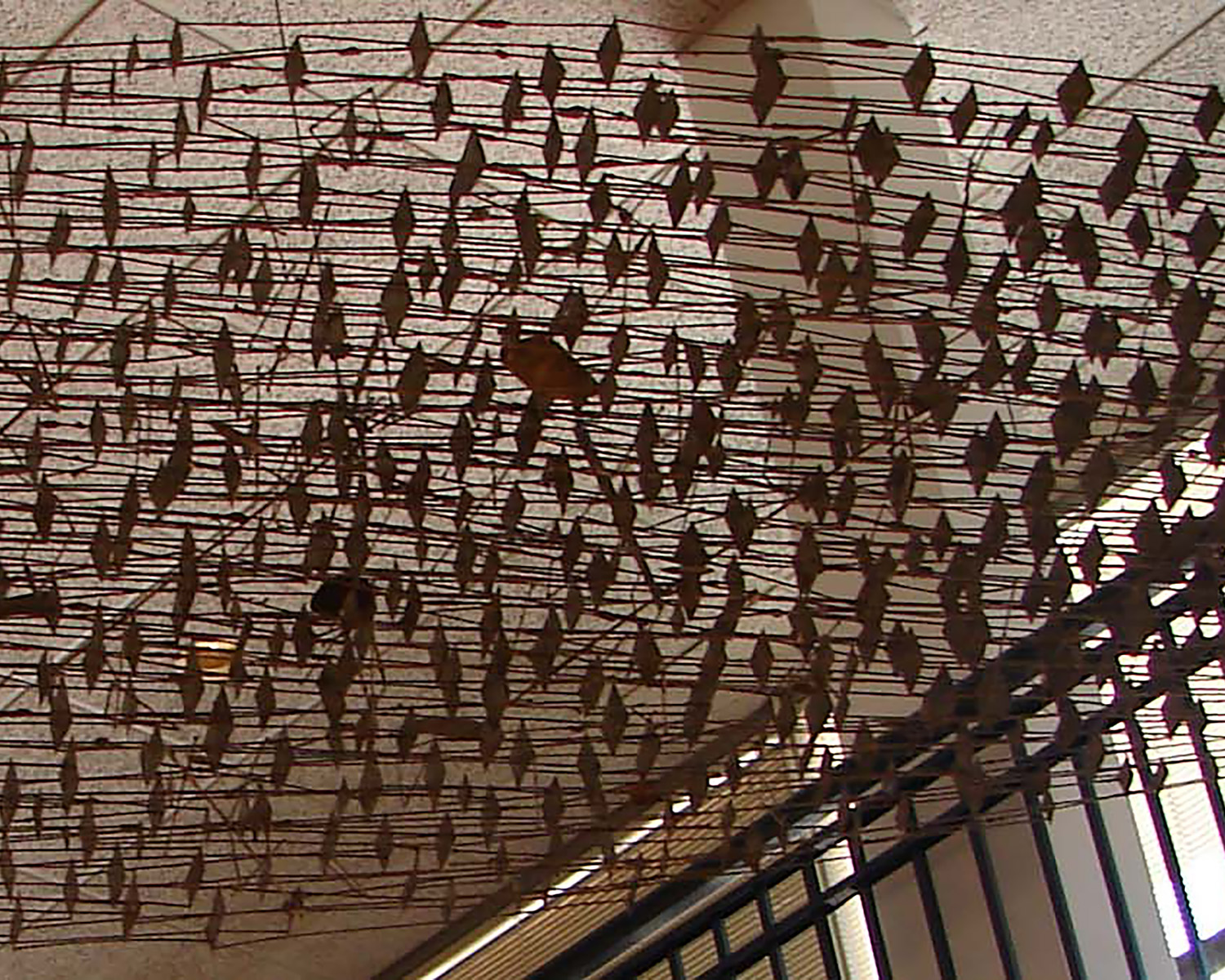
Untitled
Joel Shapiro, 1995, bronze, 98 x 68 x 65 in (249 x 173 x 165 cm)
Ohio Percent for Art Program, 1999
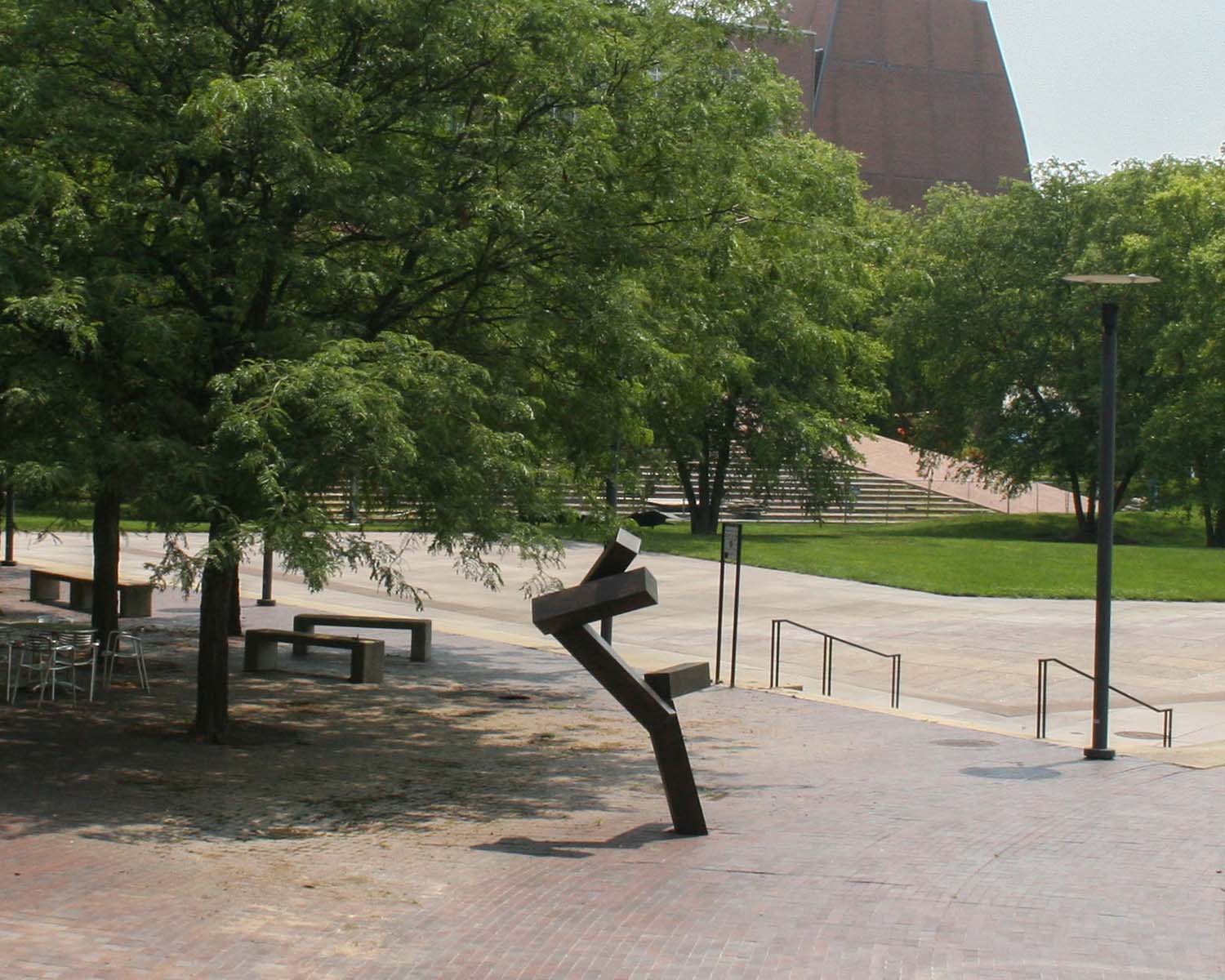
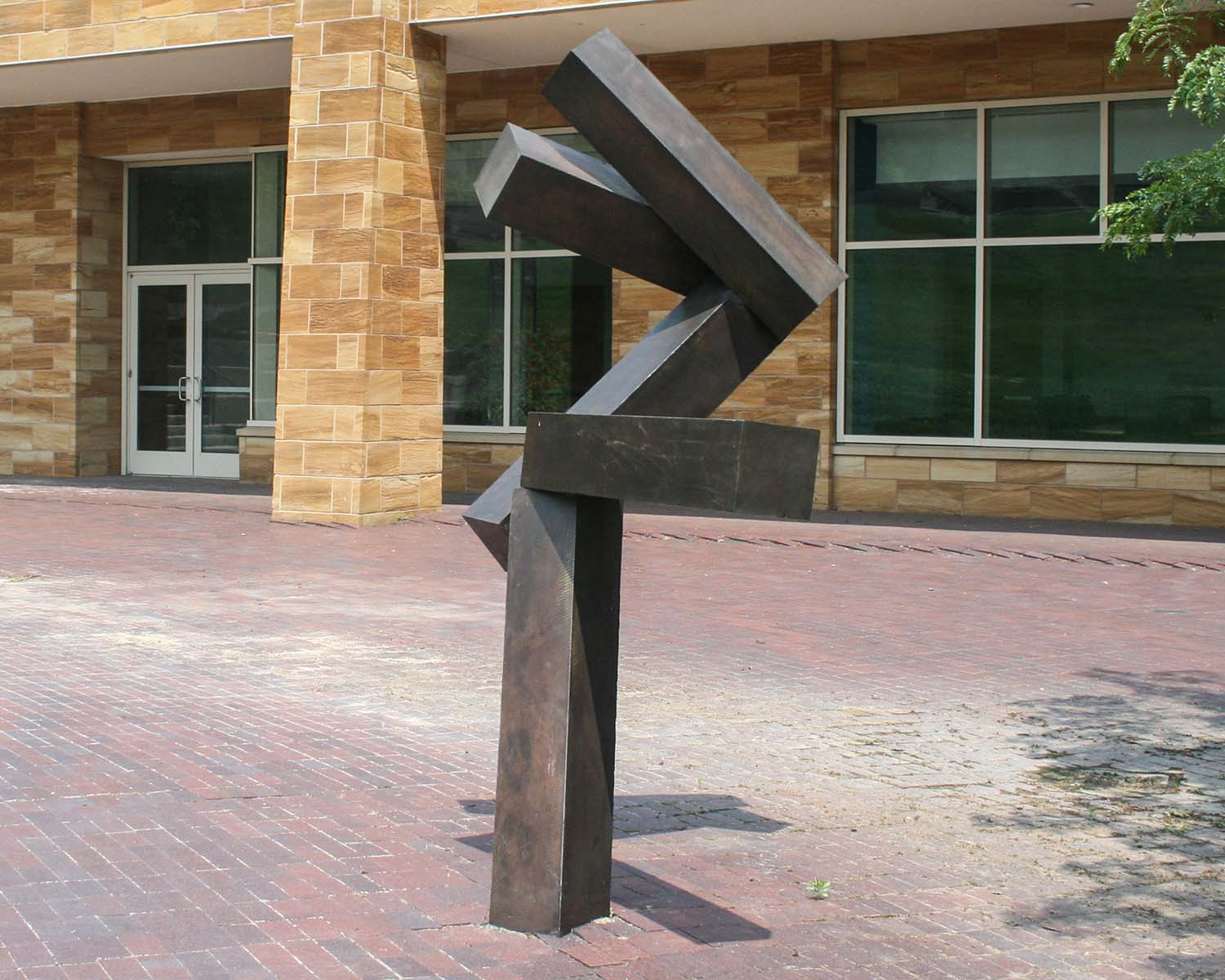
Shapiro creates abstract geometric sculpture that elicits a sense of movement and engages viewers’ physical and psychological relationships with space. In his investigations of the expressive possibility of form and color in space, the artist suspends elements from the ceiling, wall, and floor, exploring the projection of thought into space without the constraint of architecture.
Super Twister
Alice Aycock, 2013, aluminum and stainless steel, 20 ft (6.1 m)
Ohio Percent for Art Program, 2014
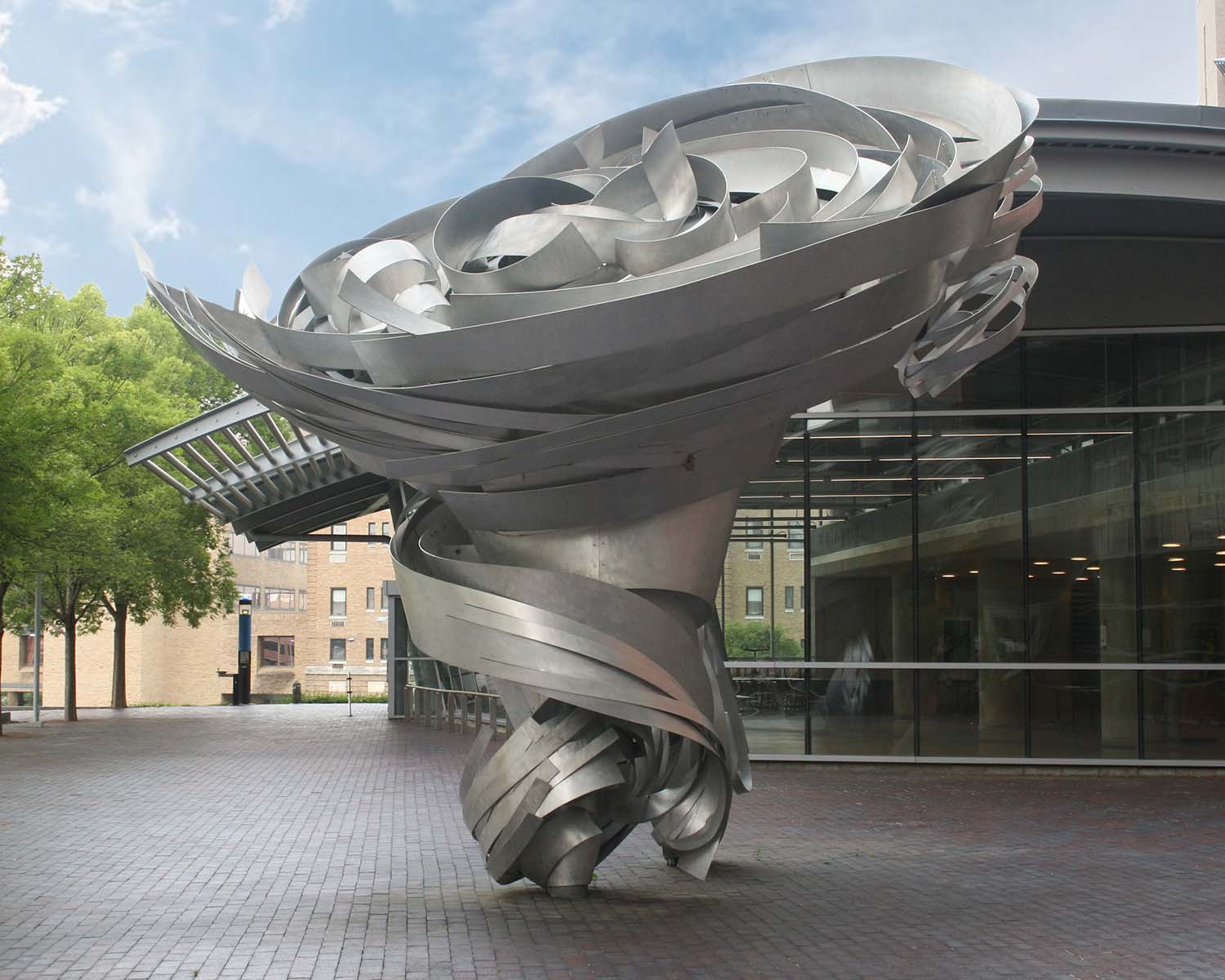
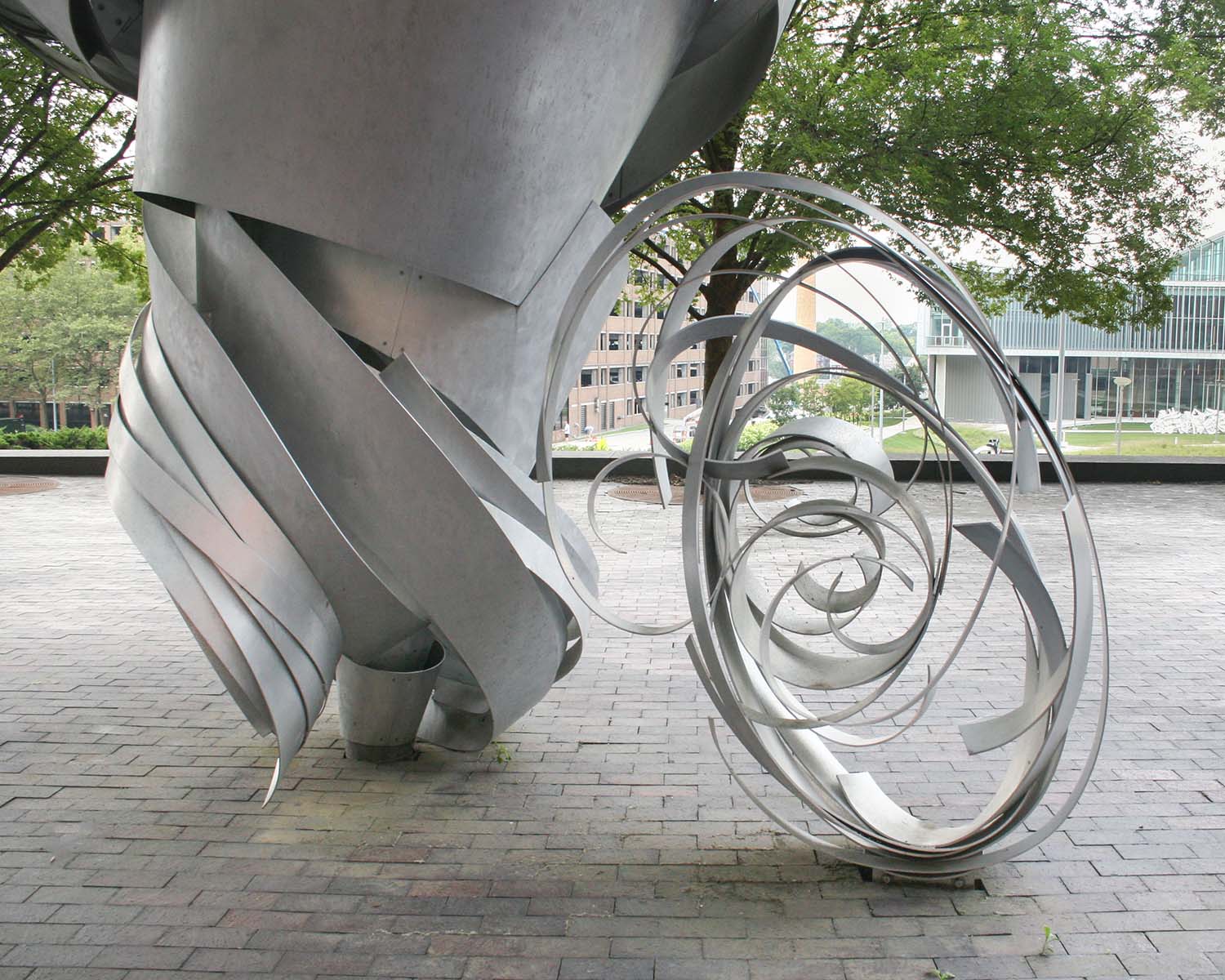
Created for the University of Cincinnati CARE building, Alice Aycock brings science and art together to represent the fury of intellectual activity that takes place within the walls of the building. In hopes of breaking down the dualities between the two disciplines, the sculpture represents chaos through its contradiction to traditional grid systems of intersecting lines. The metal strips uilt up in a chaotic manor simultaneously reflects the order that can be found within the building and the consistent movement forward.
An Ethical Life
Sandra Gross and Leah Busch, 2016, glass and steel
Gift of John S. Hutton and Sandra Gross
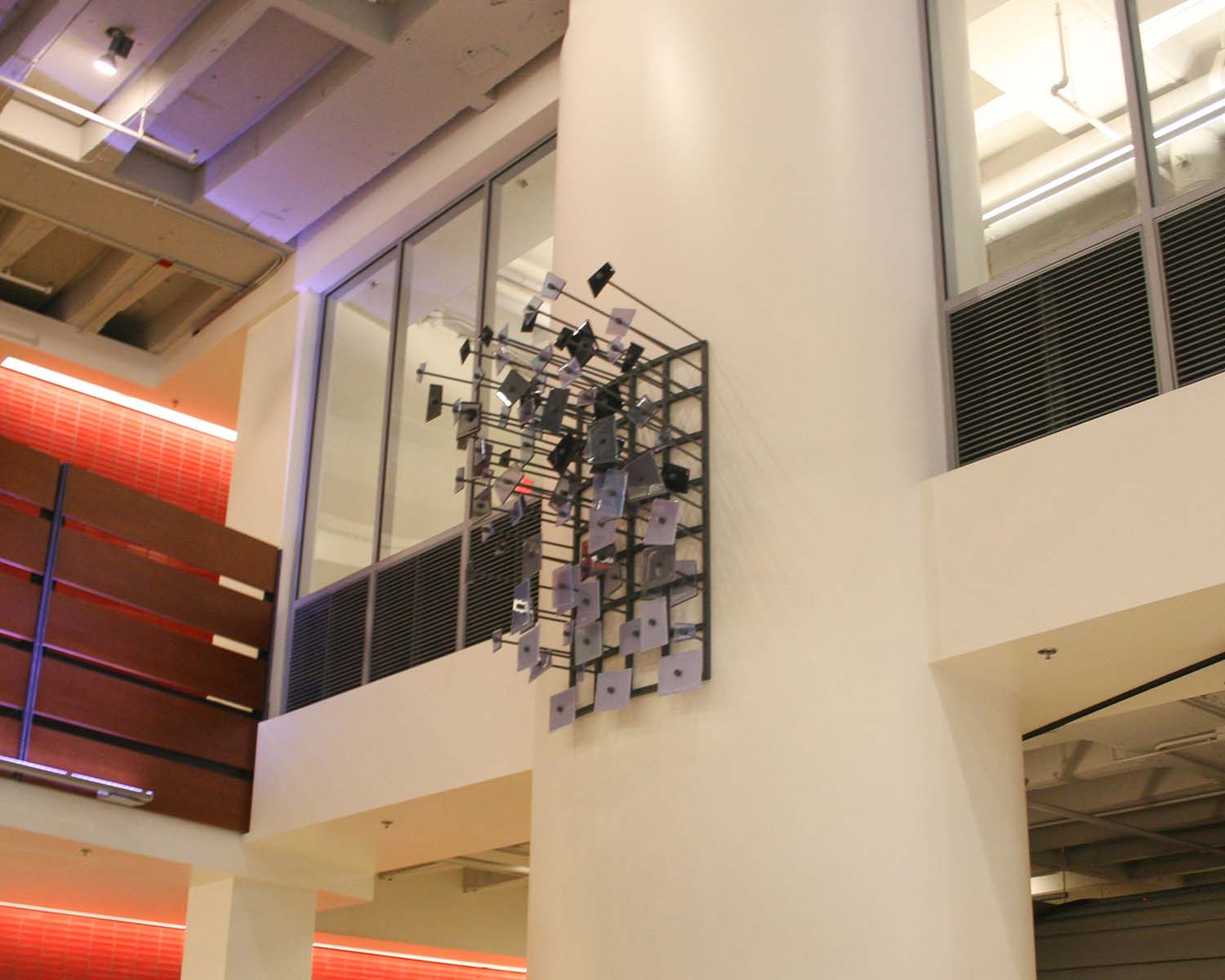
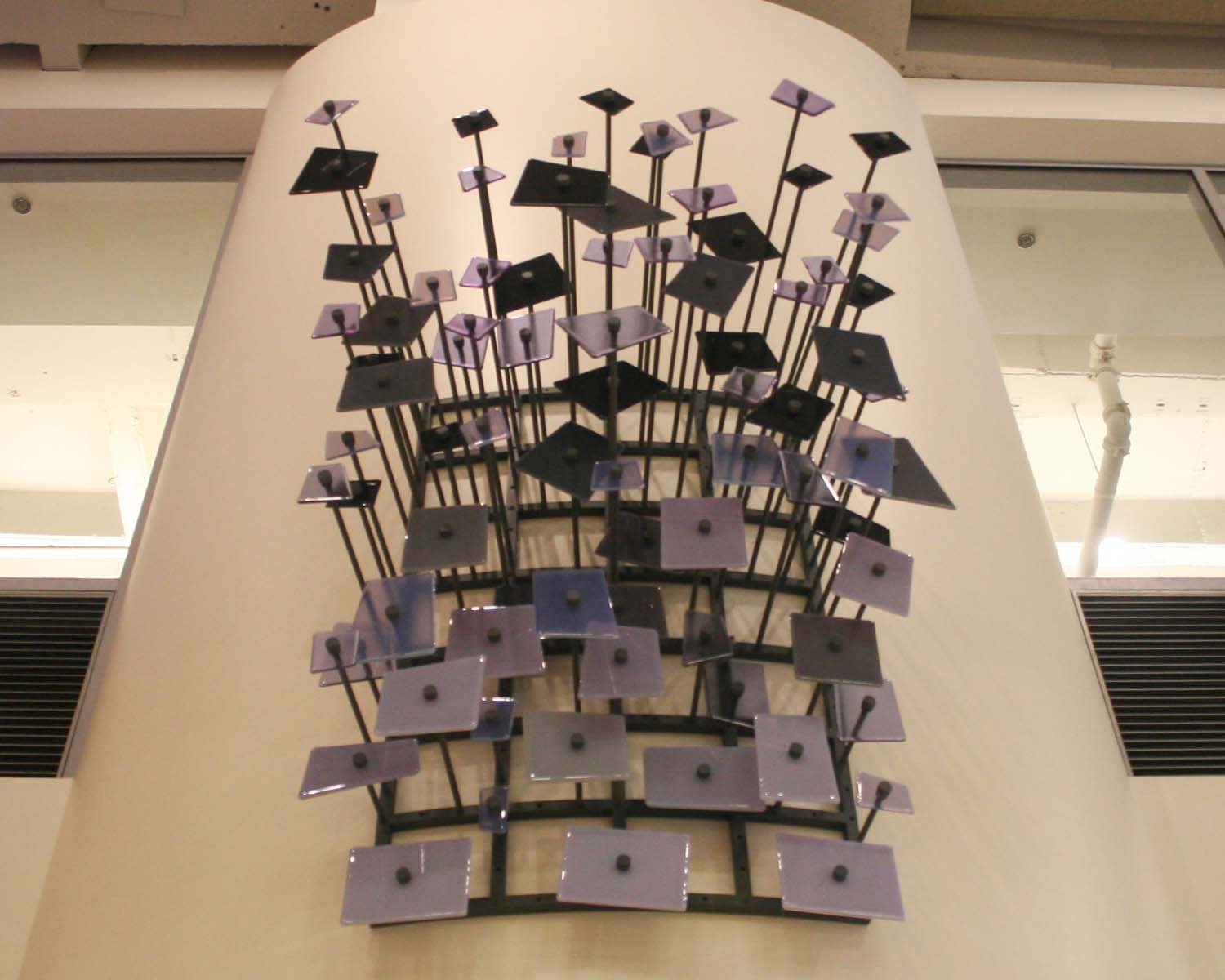
Created to honor Dr. John Hutton Sr., Sandra Gross and Leah Busch of Brazee Studios created this piece to honor Hutton’s lifelong work in ethics and medicine leading to his outstanding contributions to the University of Cincinnati.
The Artist and His Model
Dana Saulnier, 1989, oil on mixed media, 54 x 39 x 20 in (137 x 99 x 51 cm)
Donated by Jeffrey T. Keller, 2016
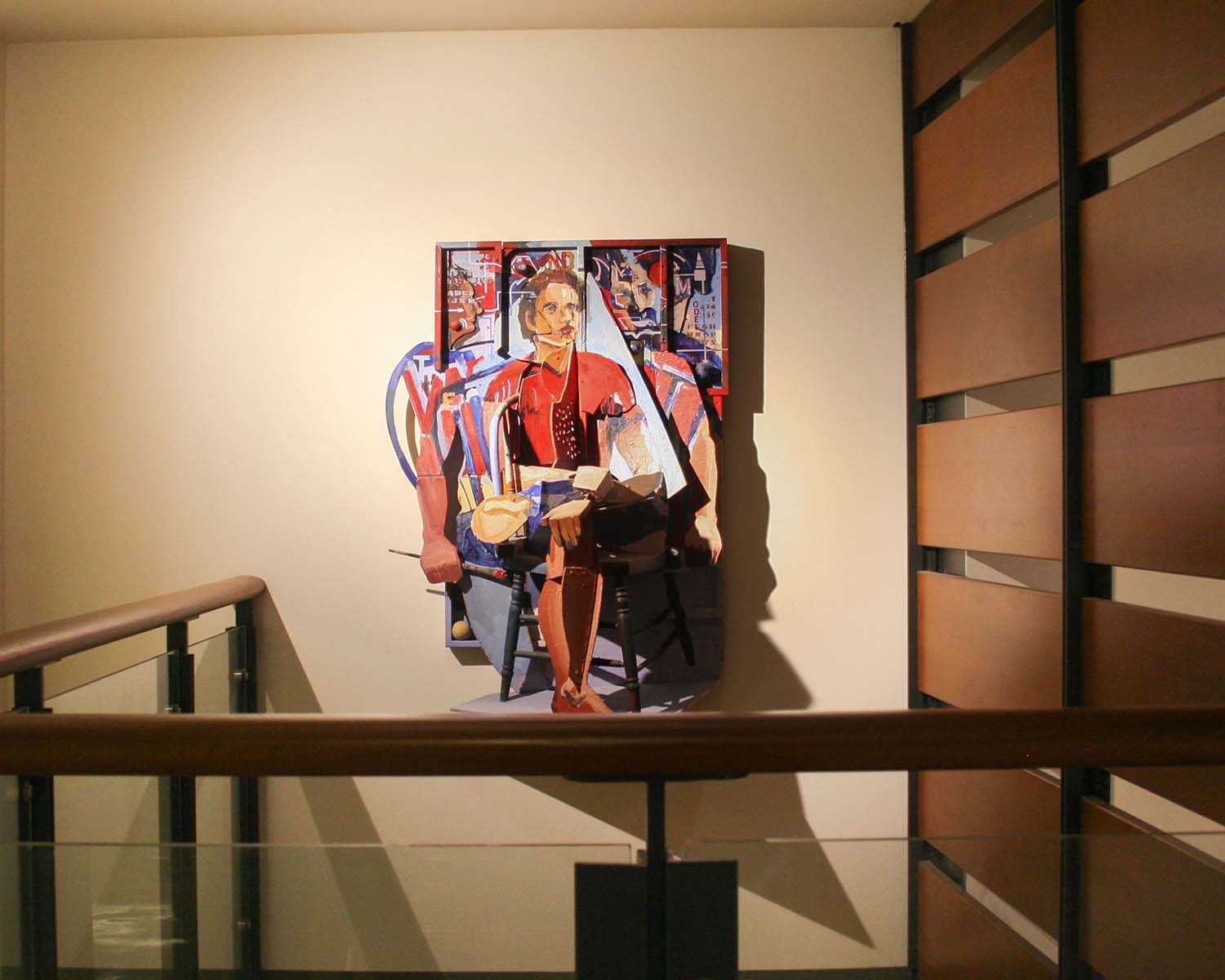
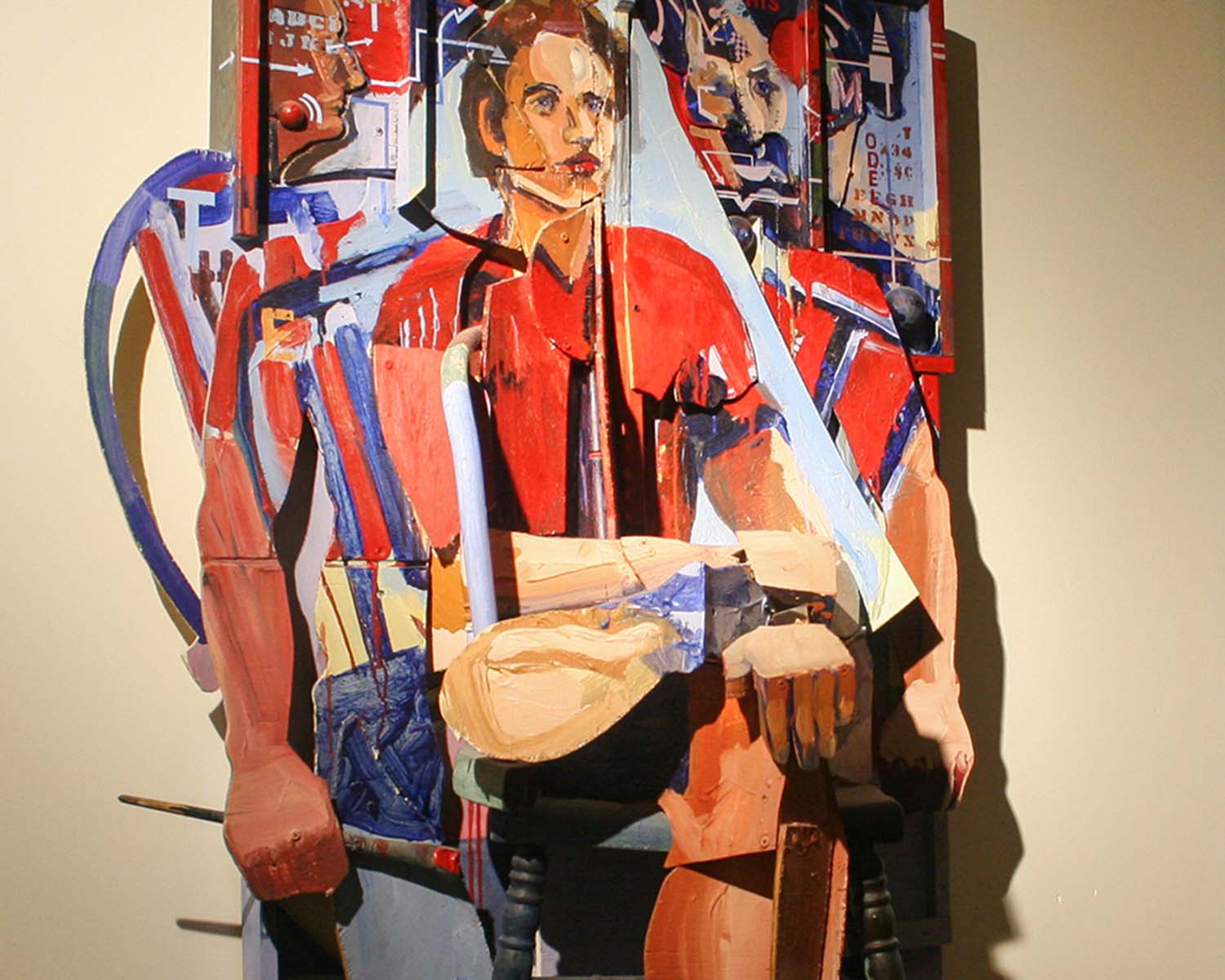
Depicting a seated young man in a moment of pondering, the Artist and His Model, presents an anatomical feel in which the figure is disjointed, with additional figures in the background. Local artist Dana Saulnier uses mixed media to represent the human body in both two and three dimensional forms.
Progression
Albert Paley, 1999, white painted CorTen steel, 112 x 528 x 48 in (284 x 1341 x 122 cm)
Ohio Percent for Art Program, 2019
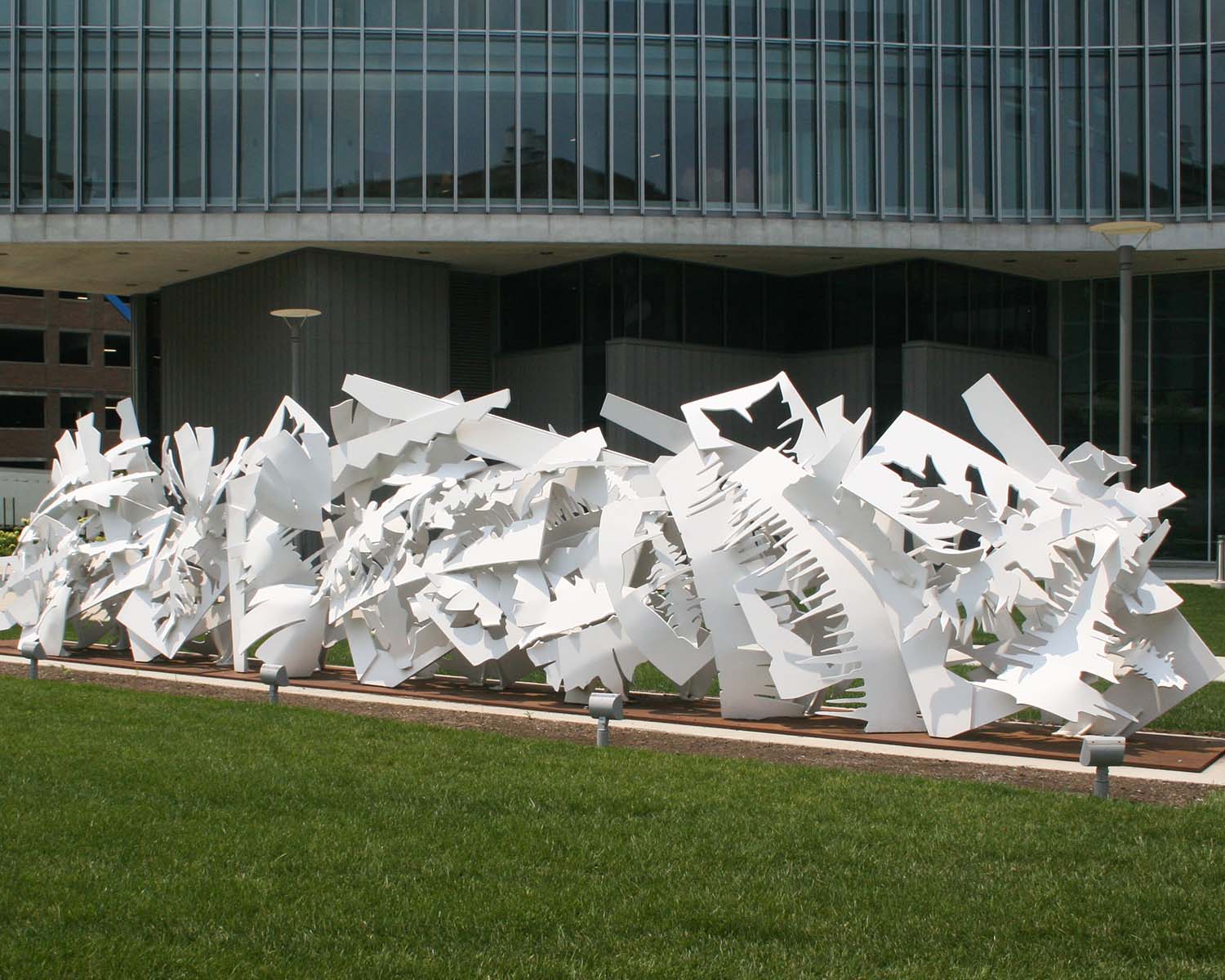
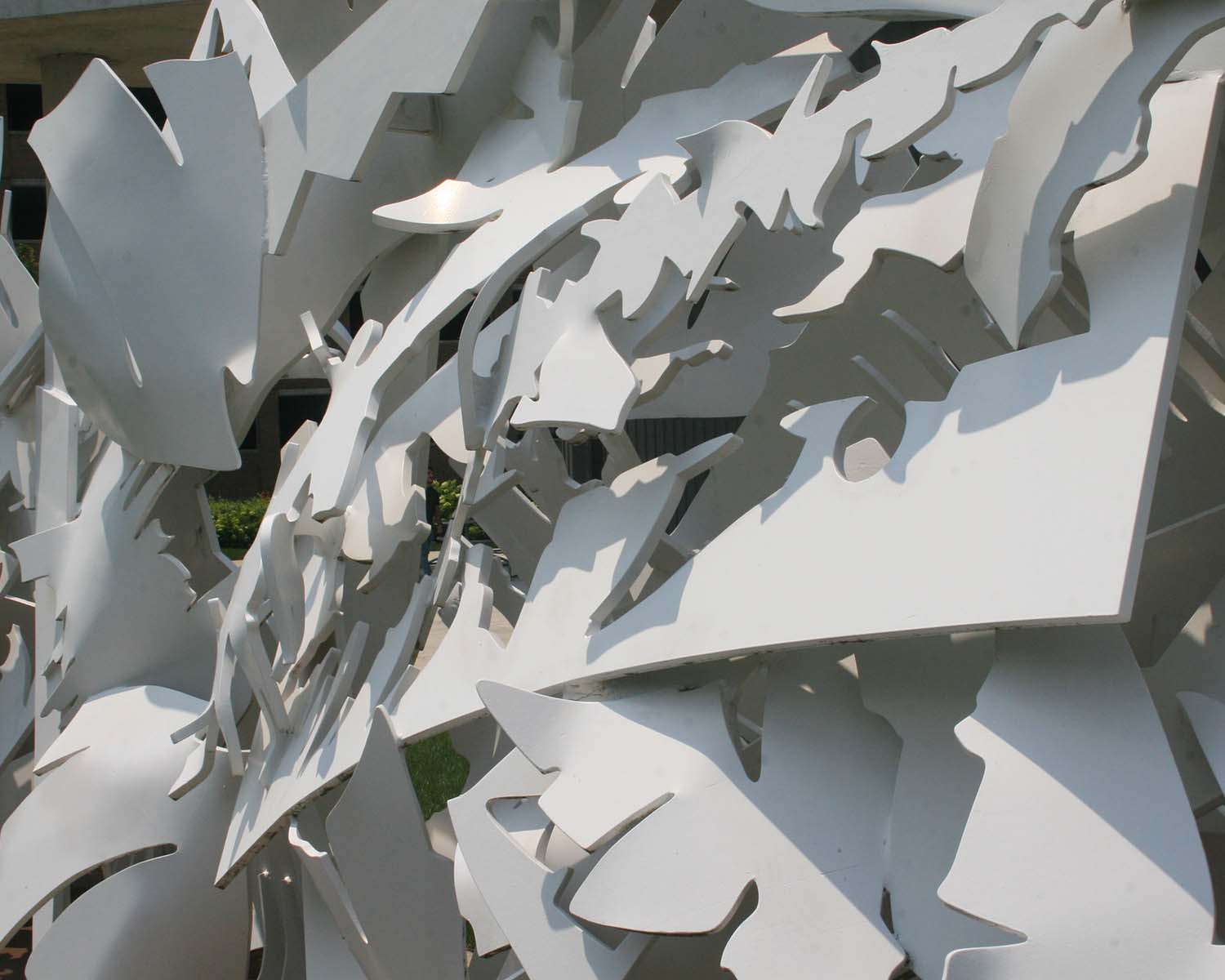
Paley completed 13 sculptures—including “Progression”—which were created specifically for his Paley on Park Avenue exhibition. The sculptures were installed in New York City between 52nd and 67th Streets and were on view from June 14 through Nov. 8, 2013. During a dedication ceremony for “Progression” hosted at the University of Cincinnati’s College of Allied Health Sciences on Aug. 22, 2019, Paley shared that all his work is meant to add to viewers’ experiences and encourage discussion and examination of personal meaning. Whether displayed in a massive metropolis or on a medical campus, his sculptures should bring attention to a location and moment in time.
Replication/Mutation
Douglas J. Oleson, 1992, mixed media, est. 50 x 30 x 2 ft
Gift of Academy of Kettering Fellows
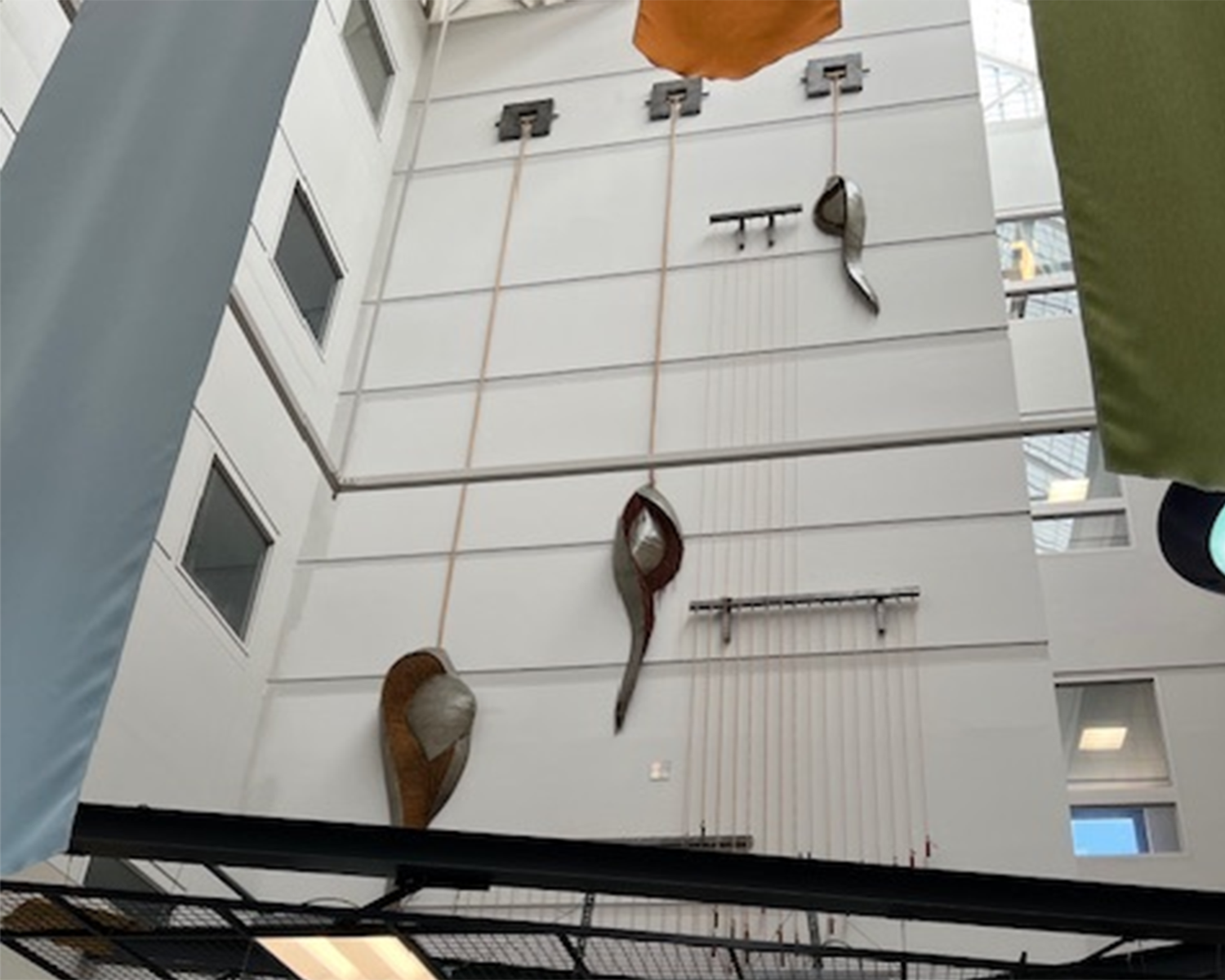
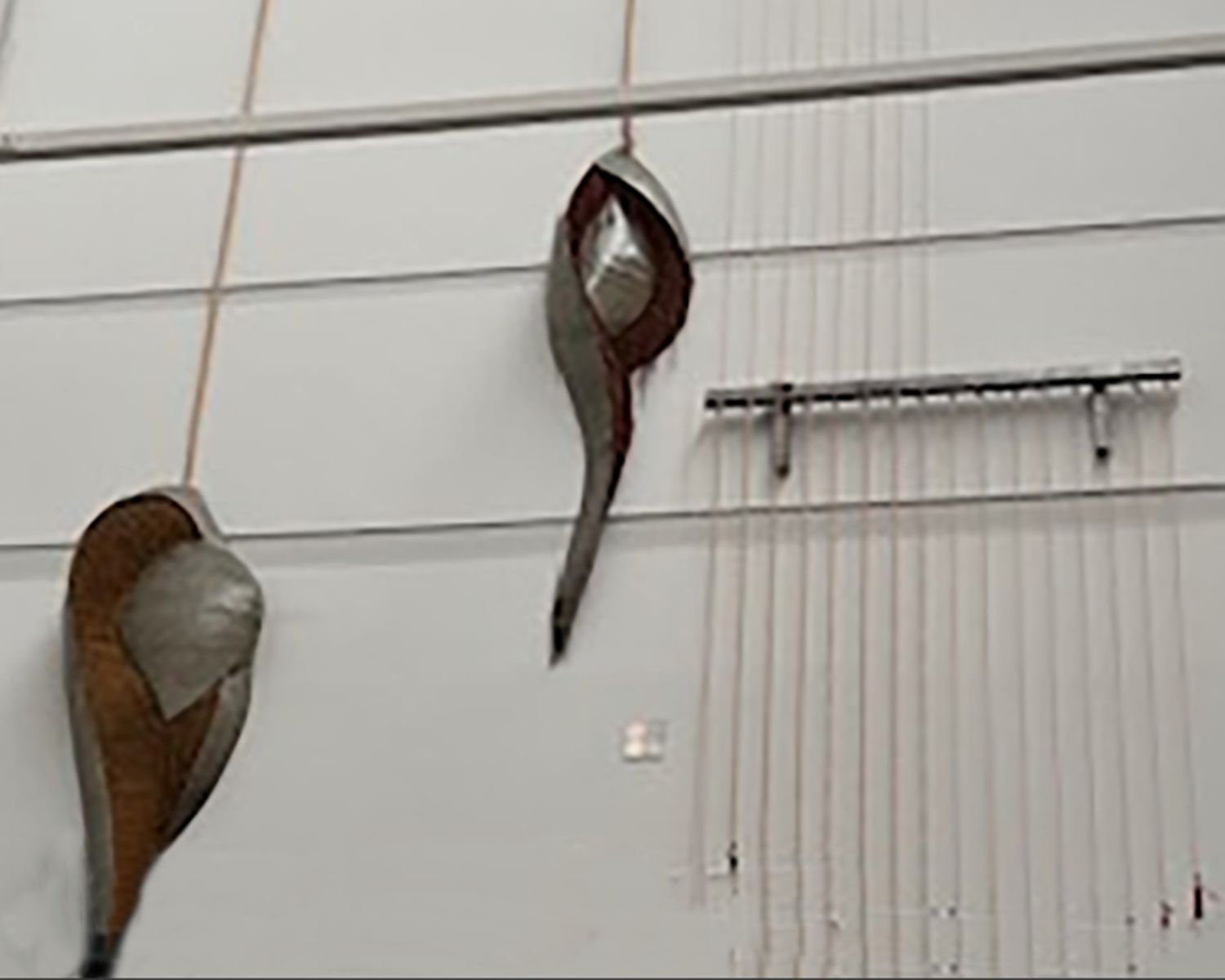
BLUE ASH CAMPUS
Anatomy Vessel
Eric Nordgulen, 2001, aluminum, 27 1/2 x 9 1/2 x 9 ft (8.38 x 2.9 x 2.74 m)
Ohio Percent for Art Program, 2012

